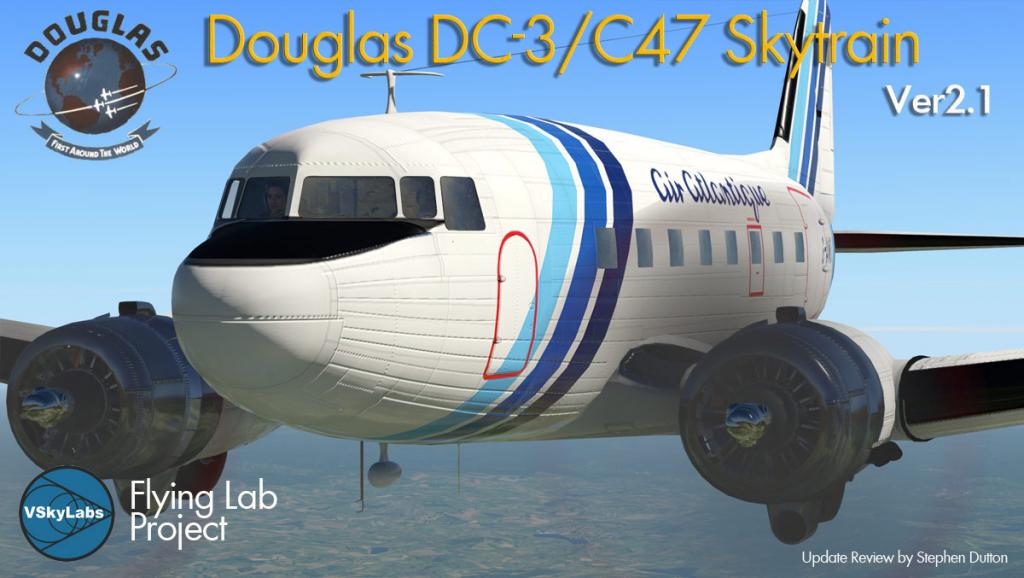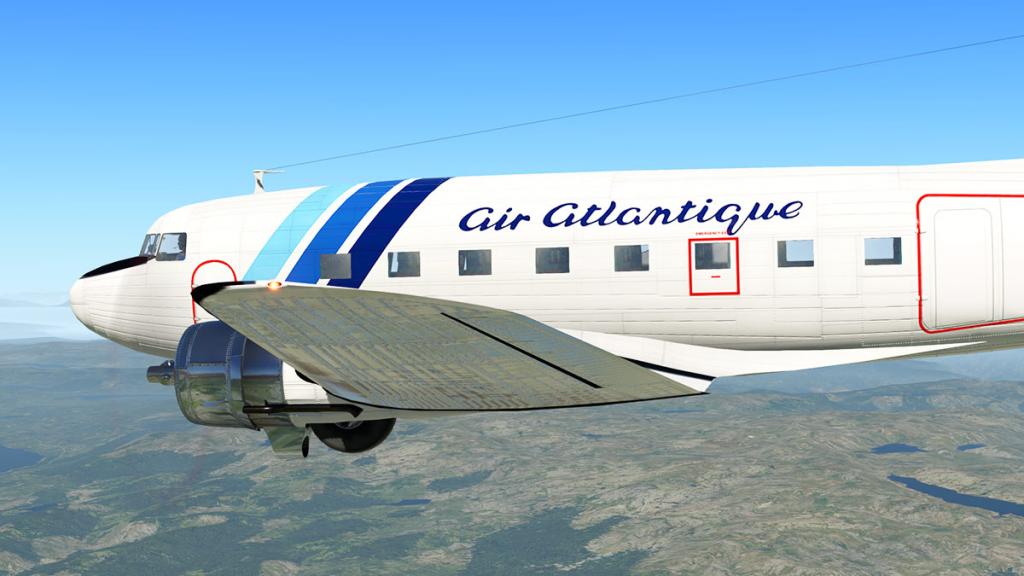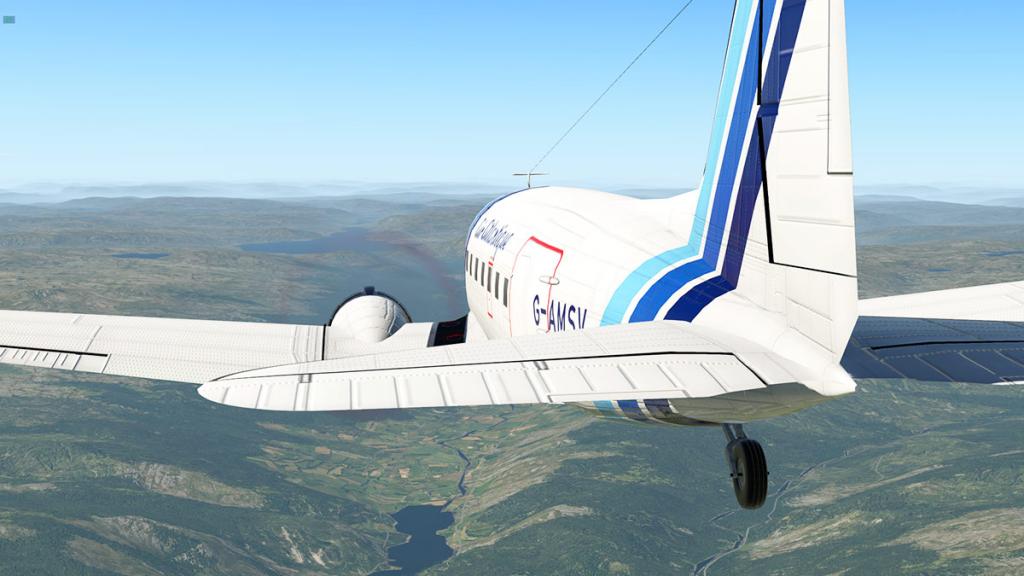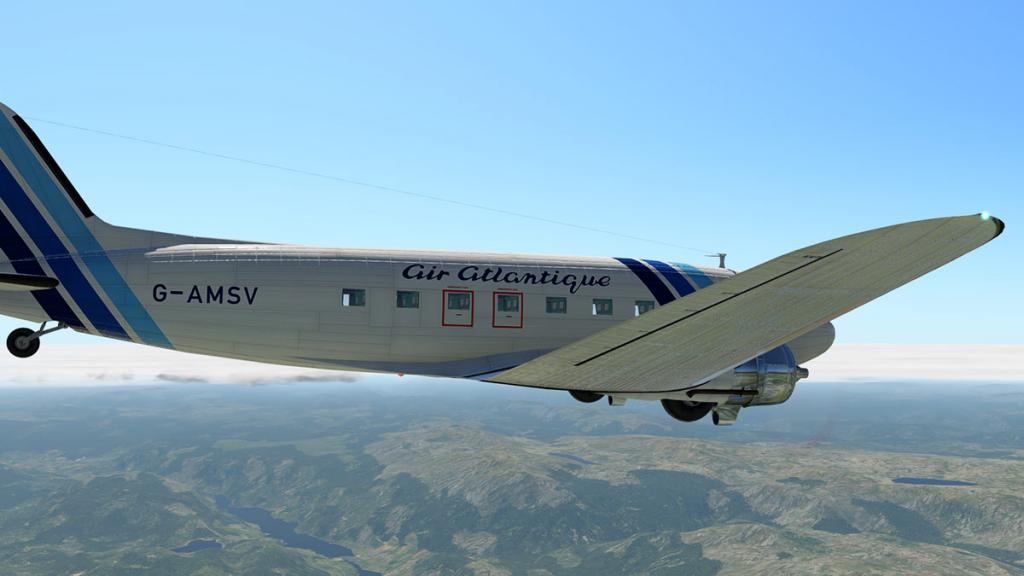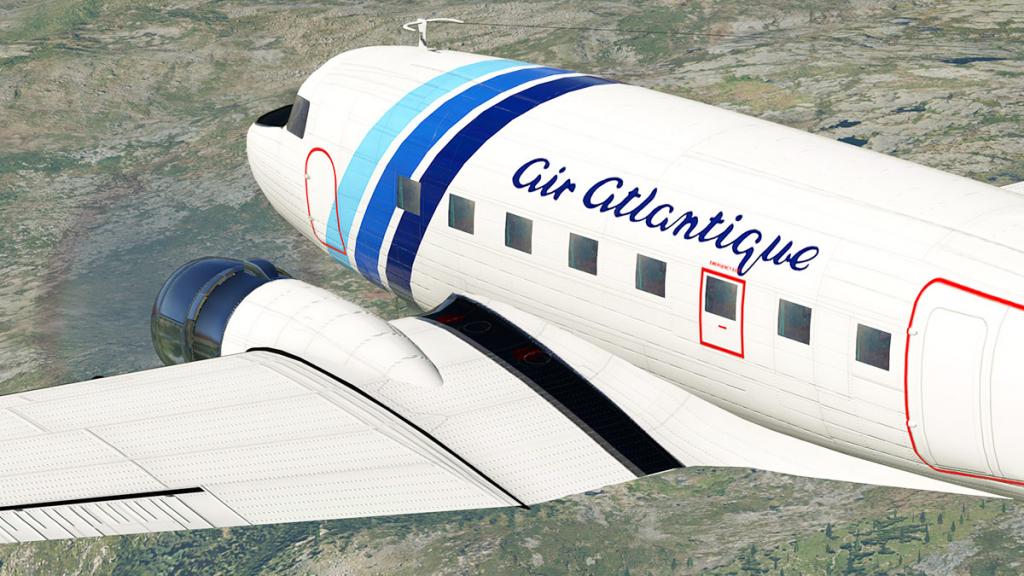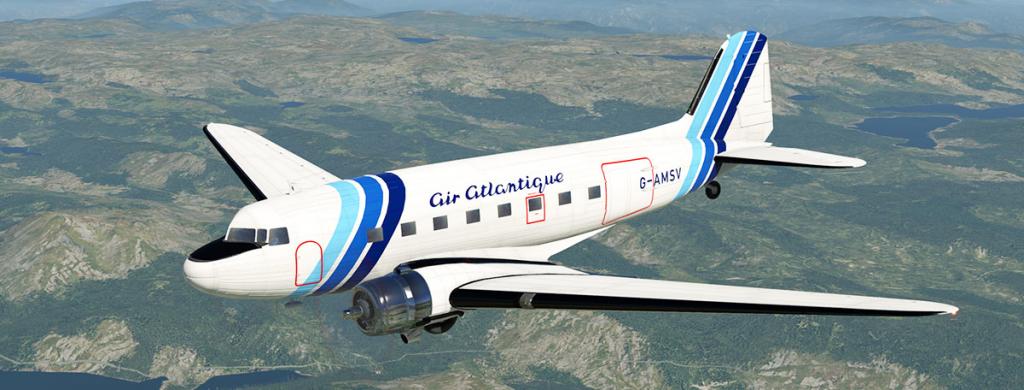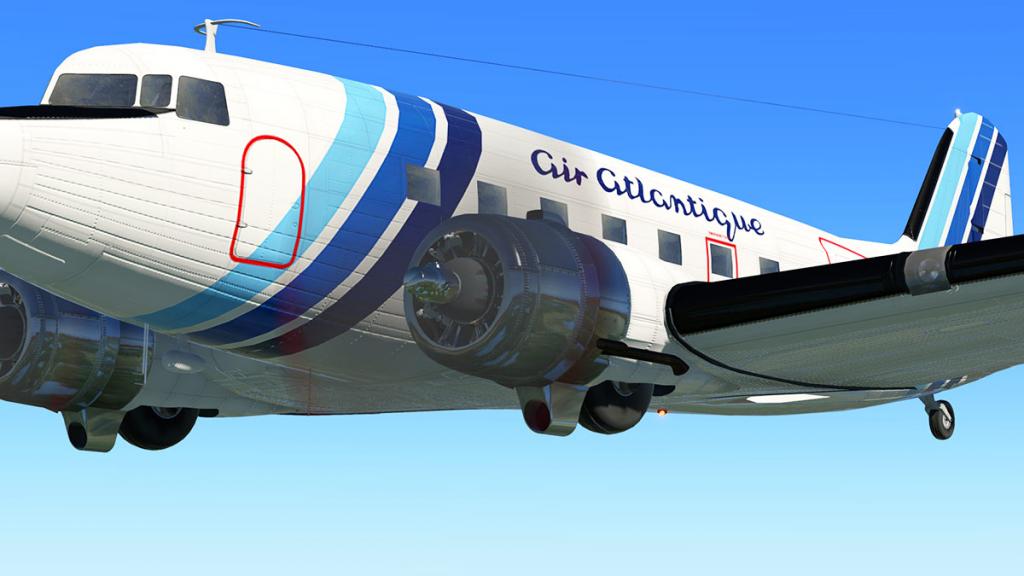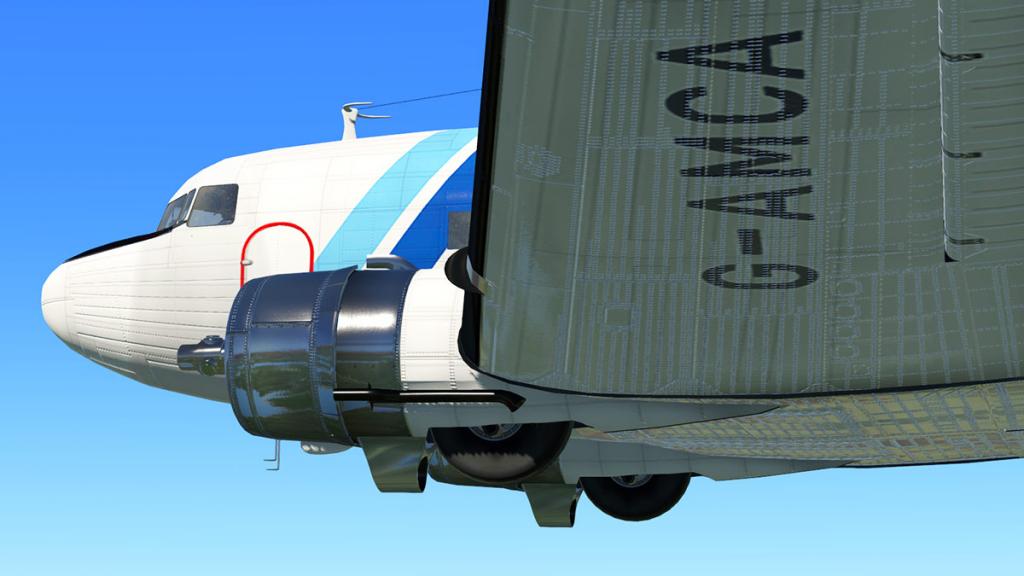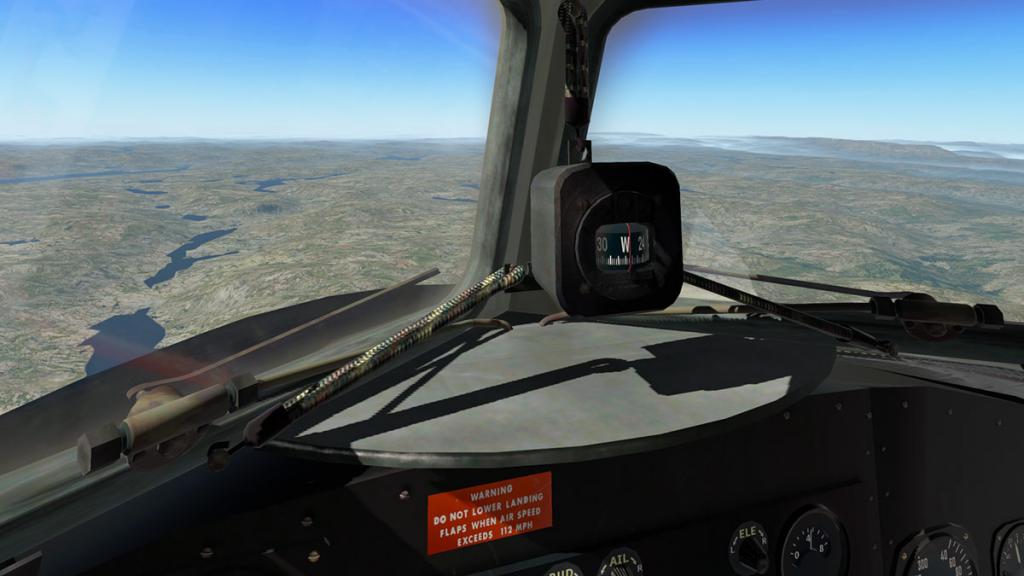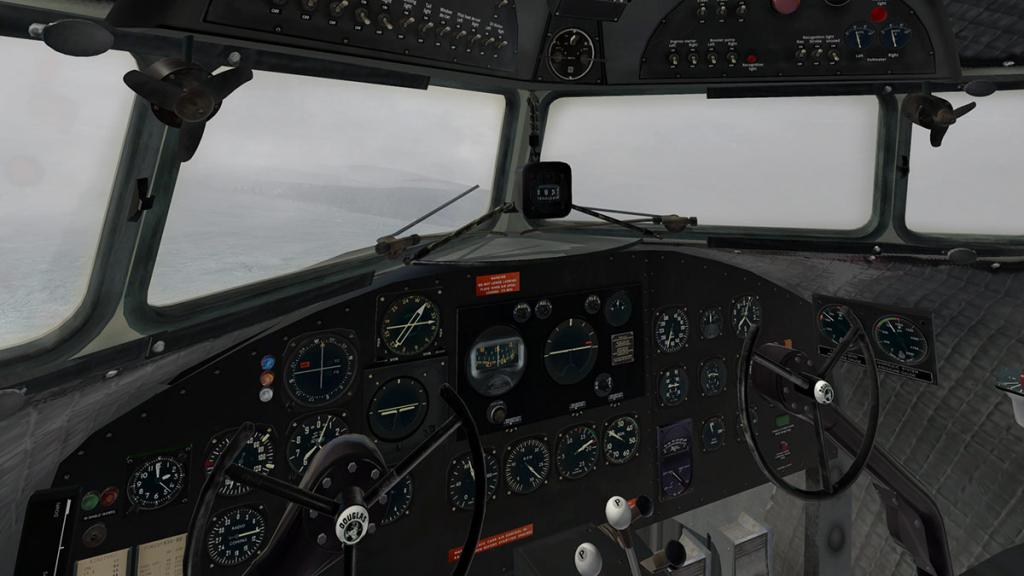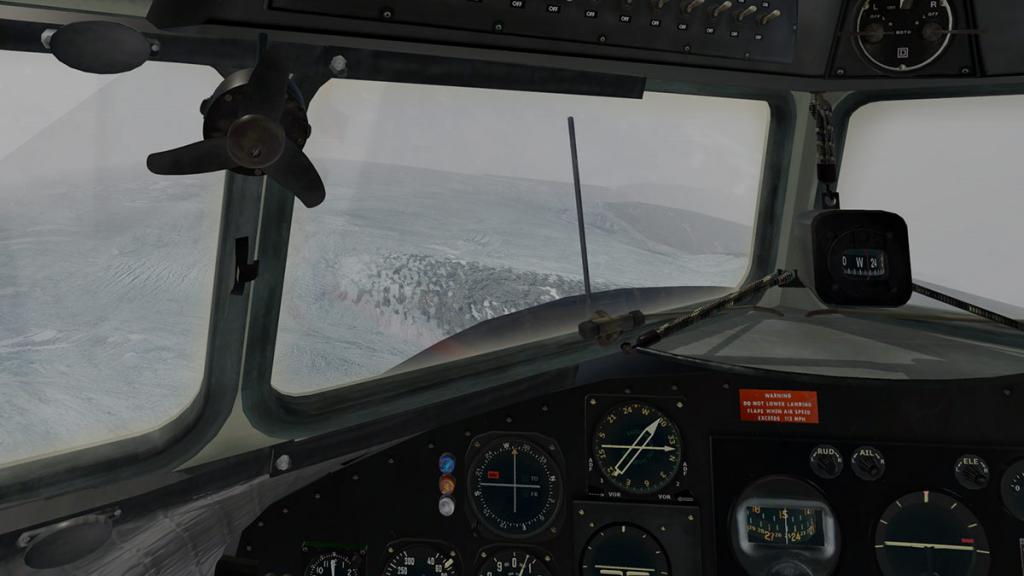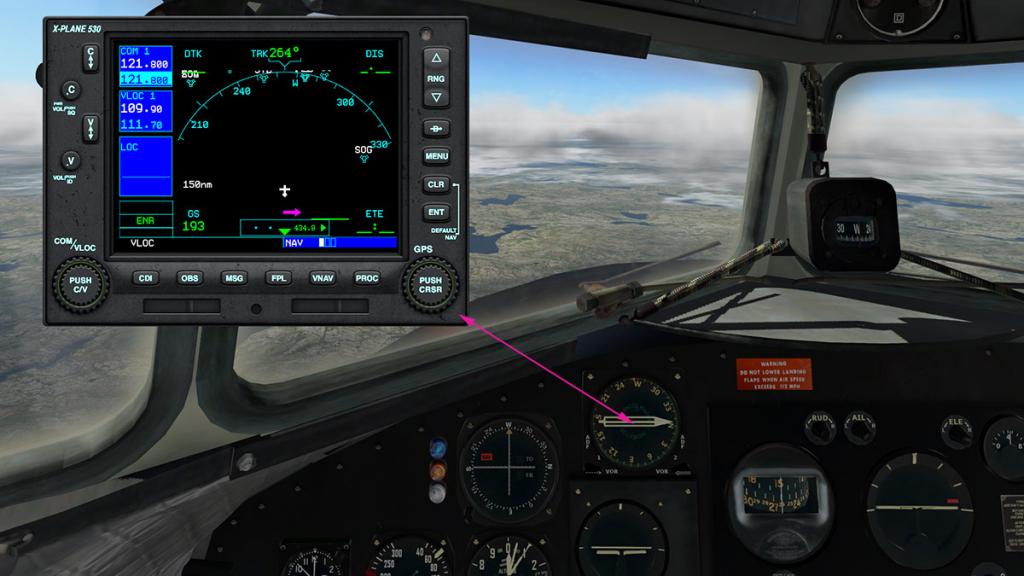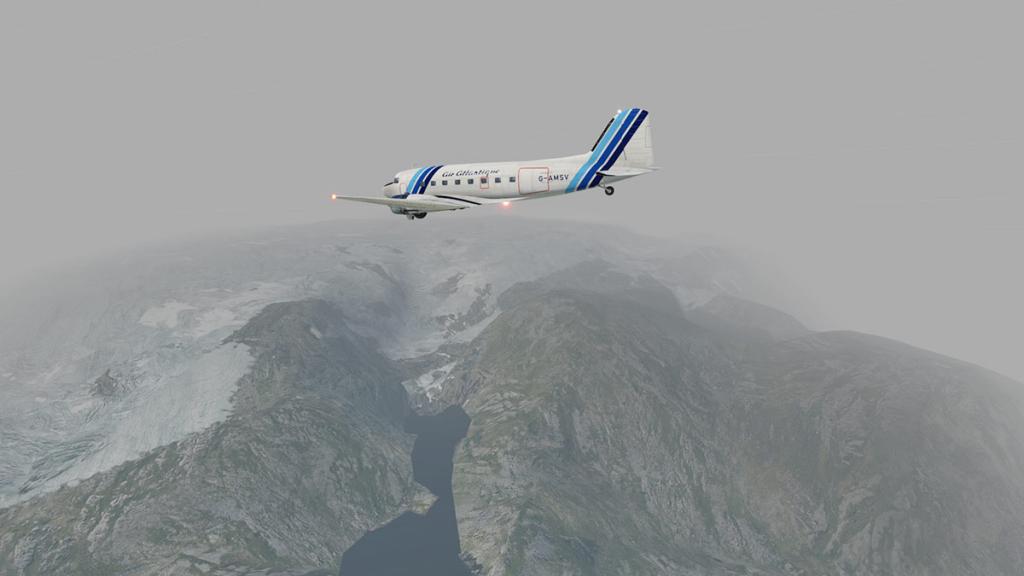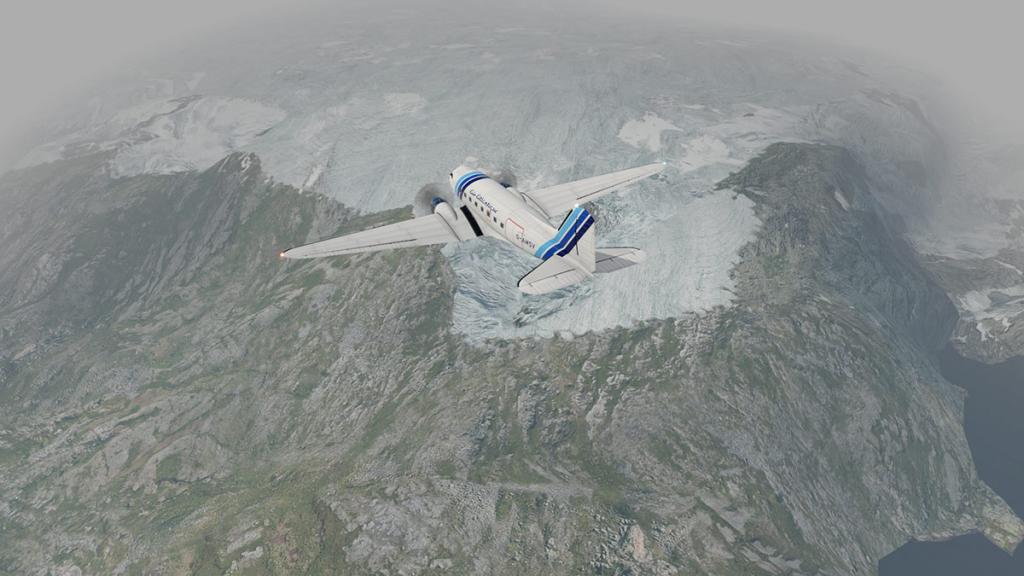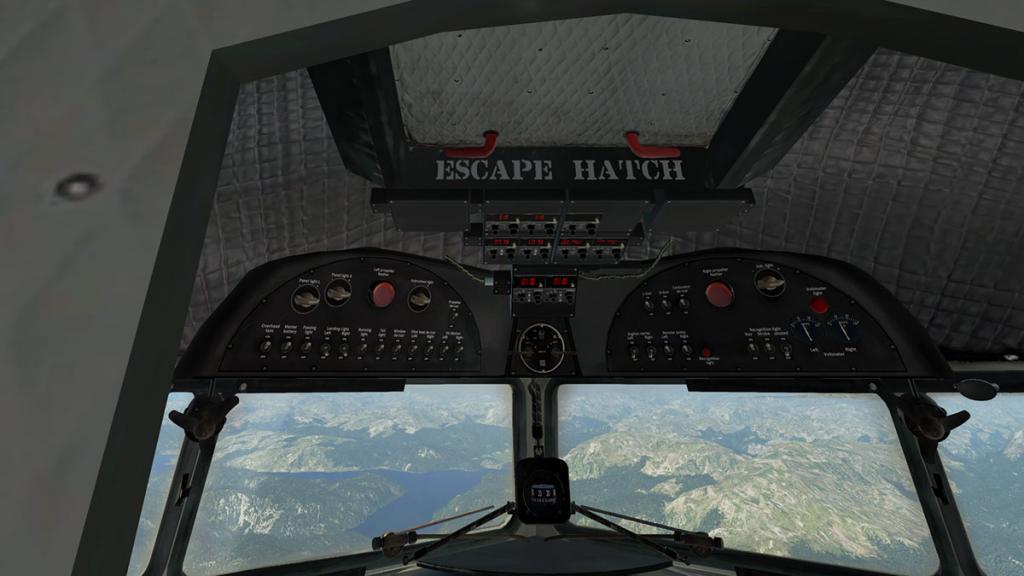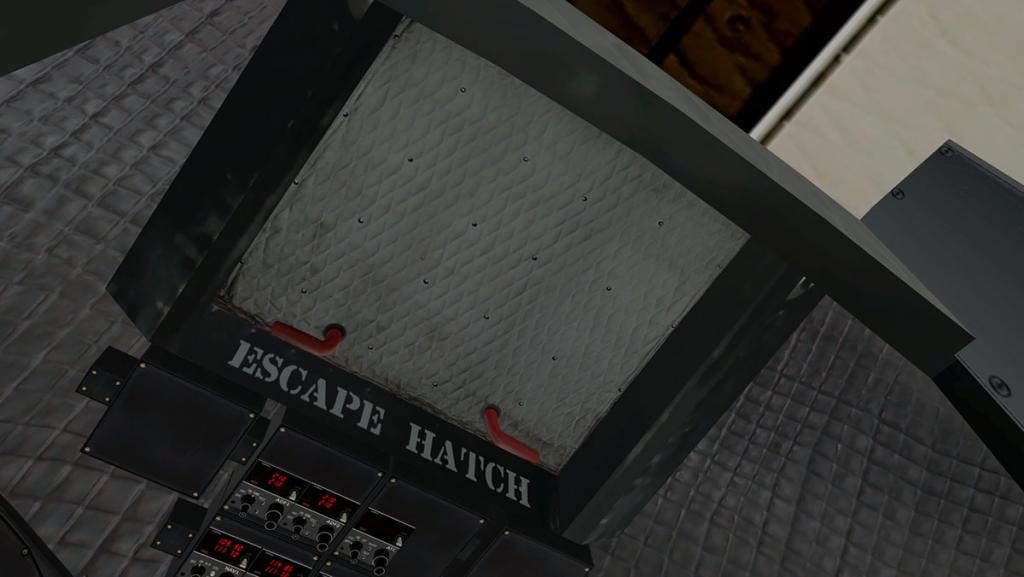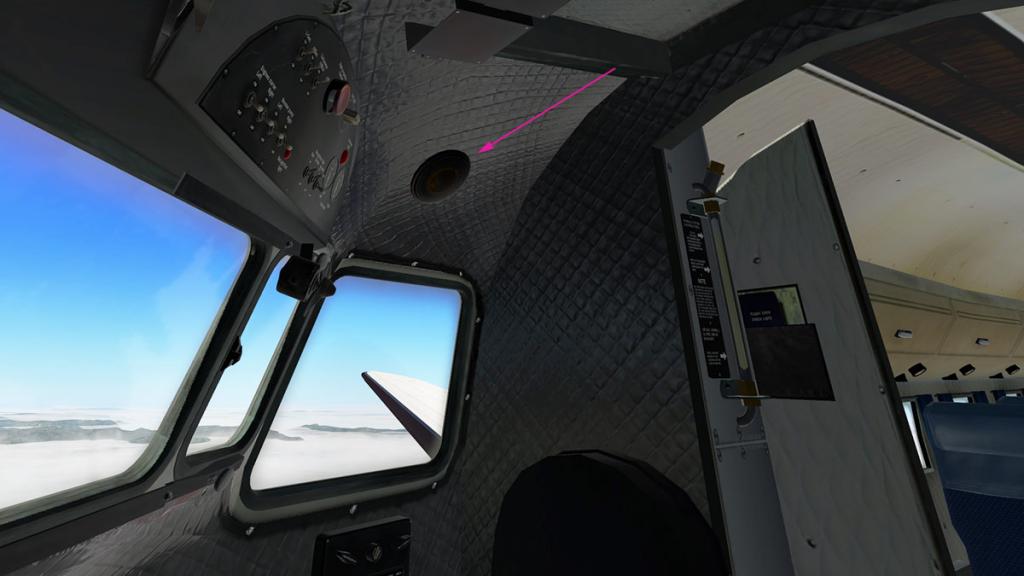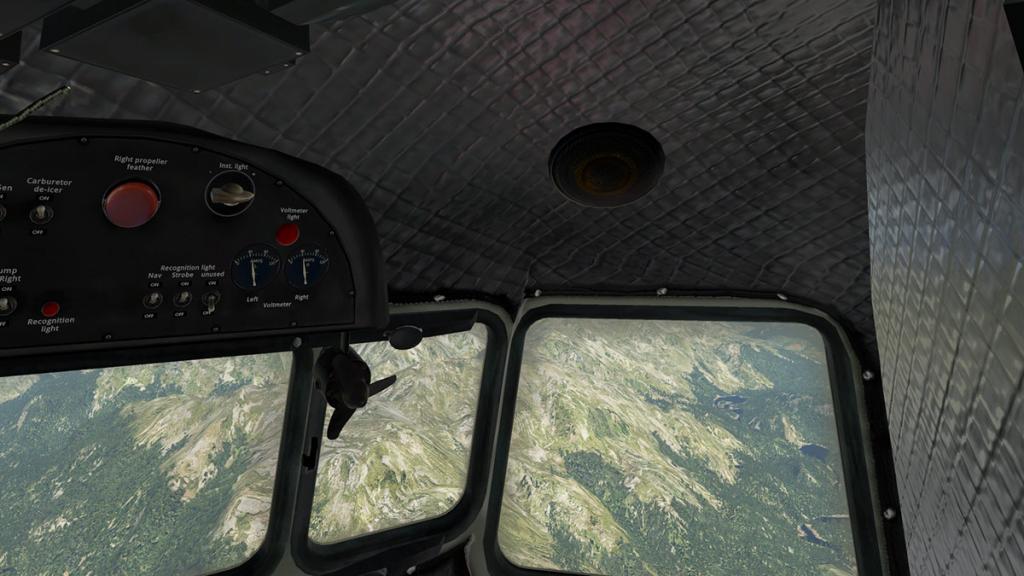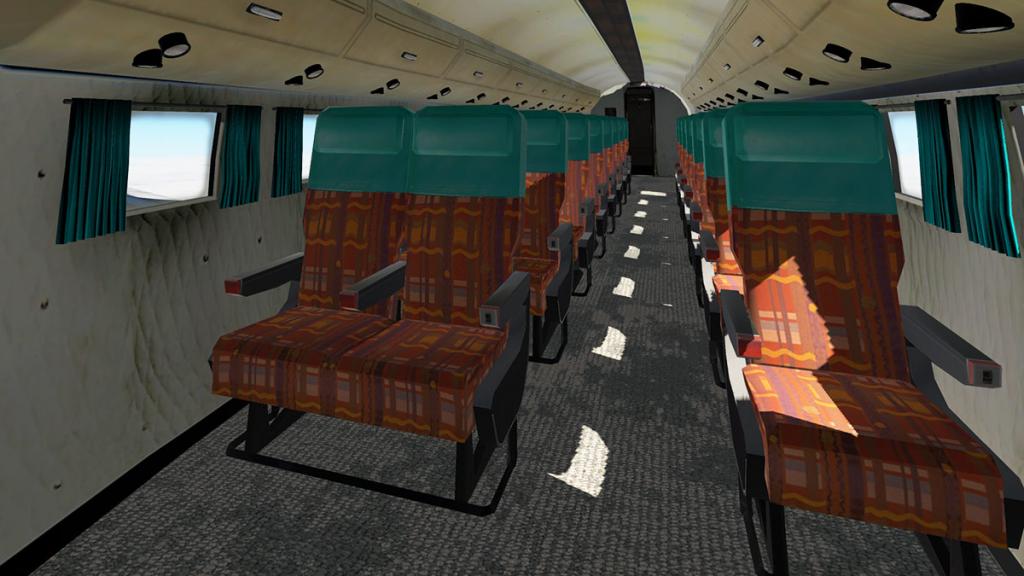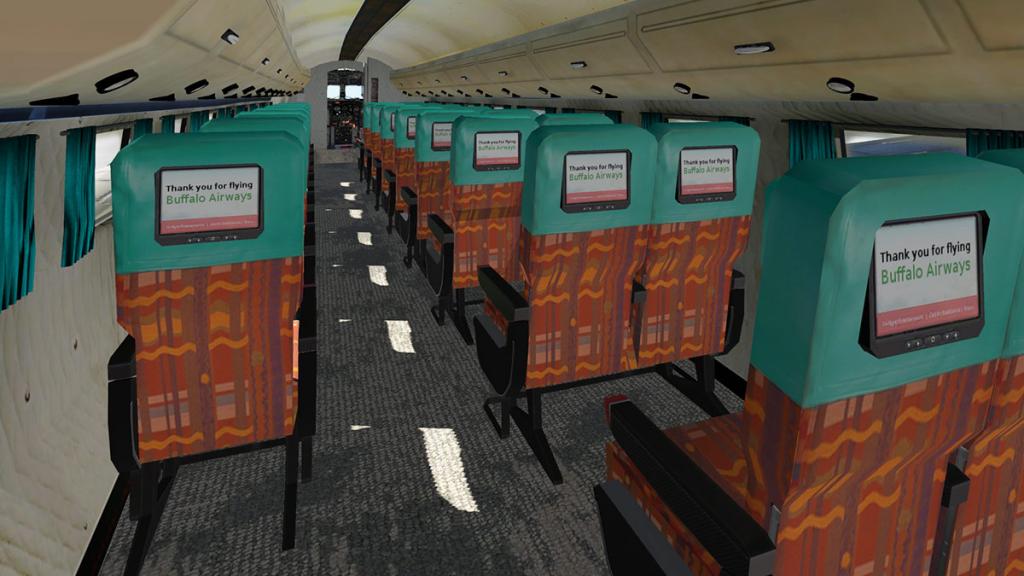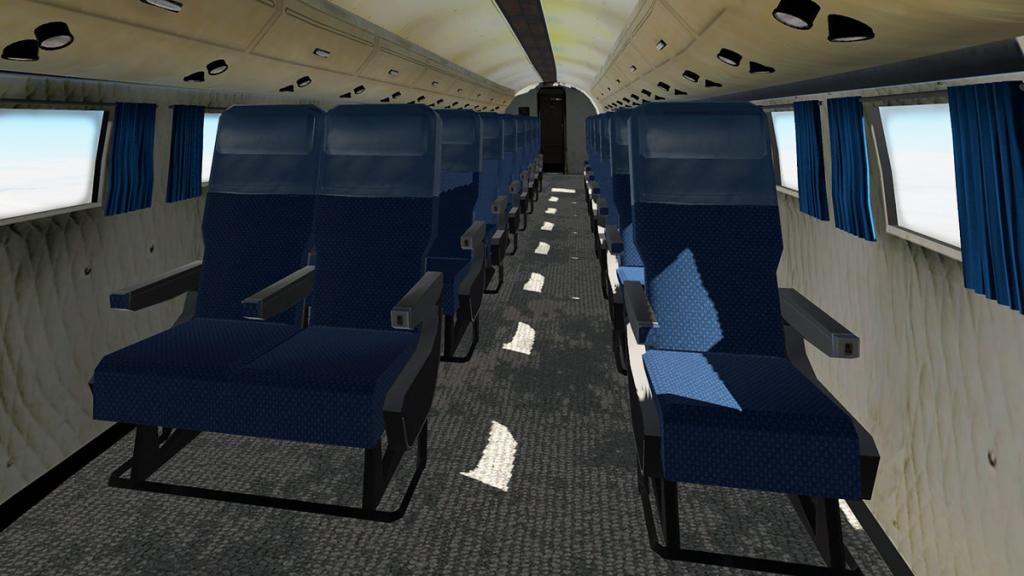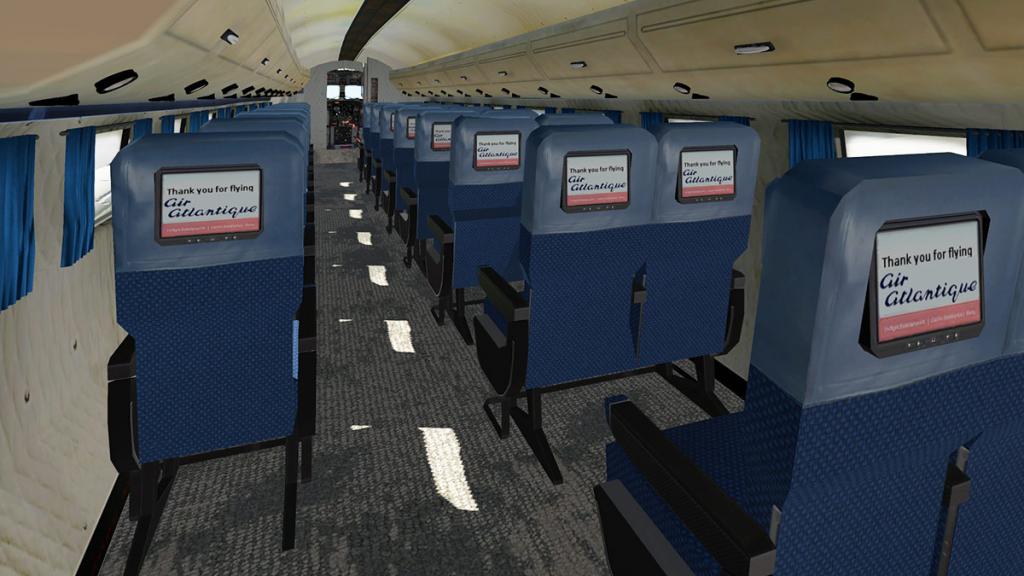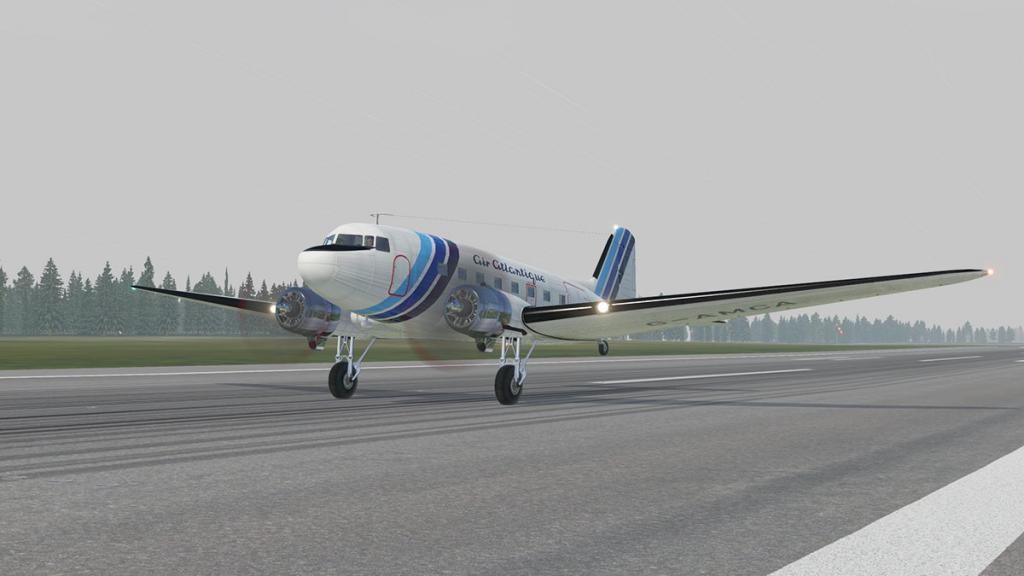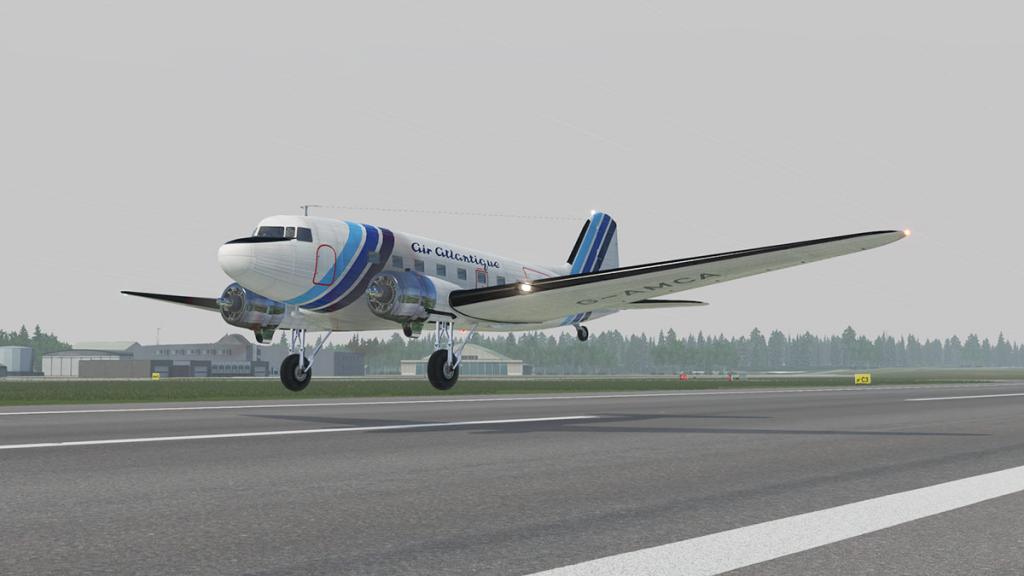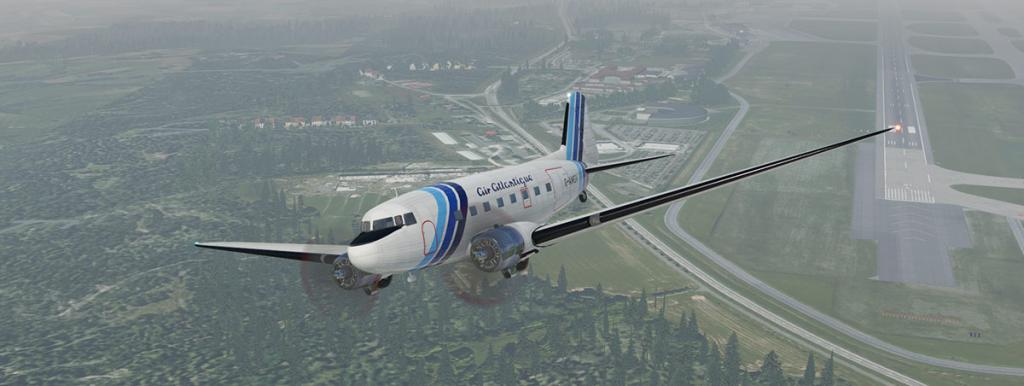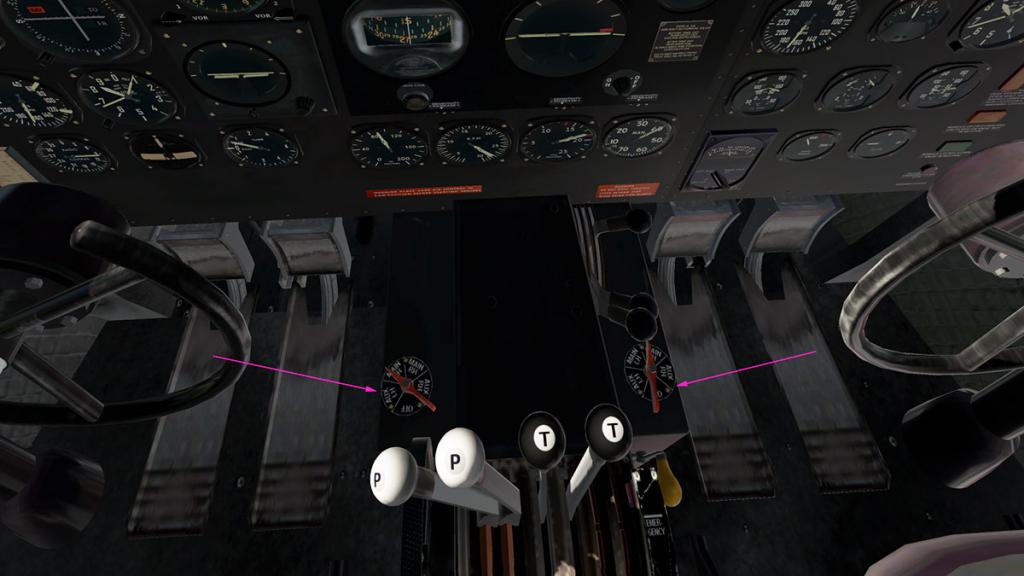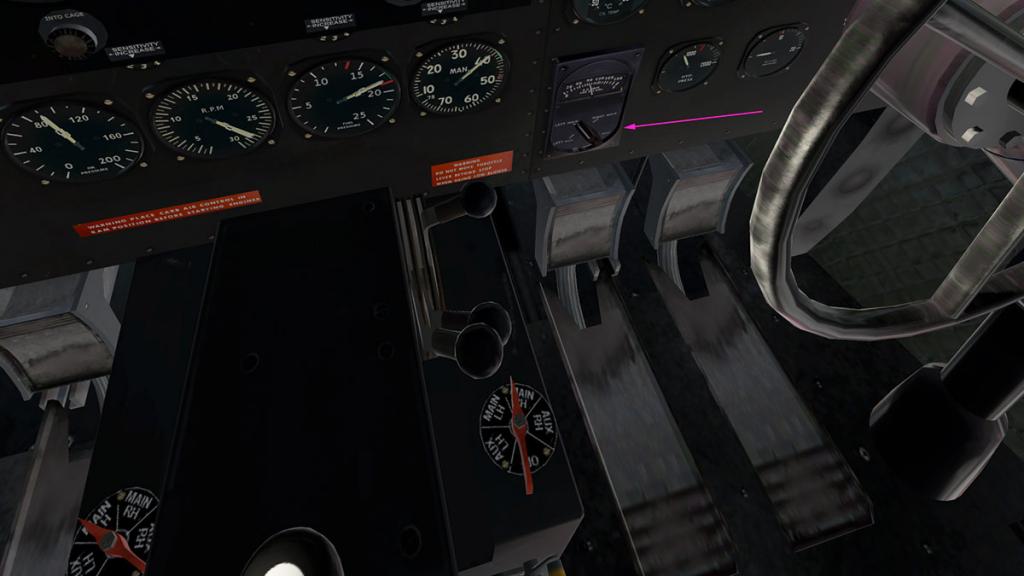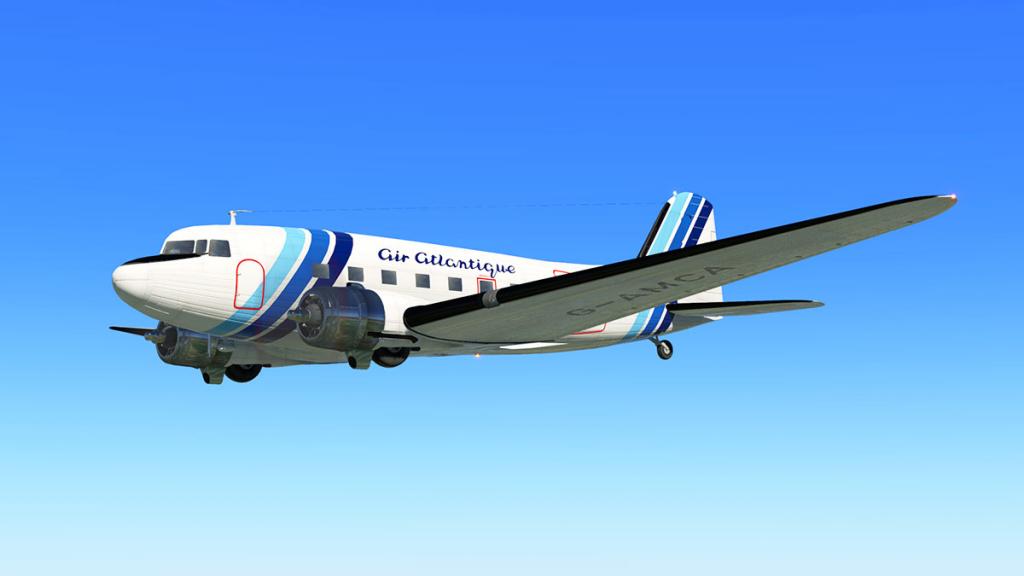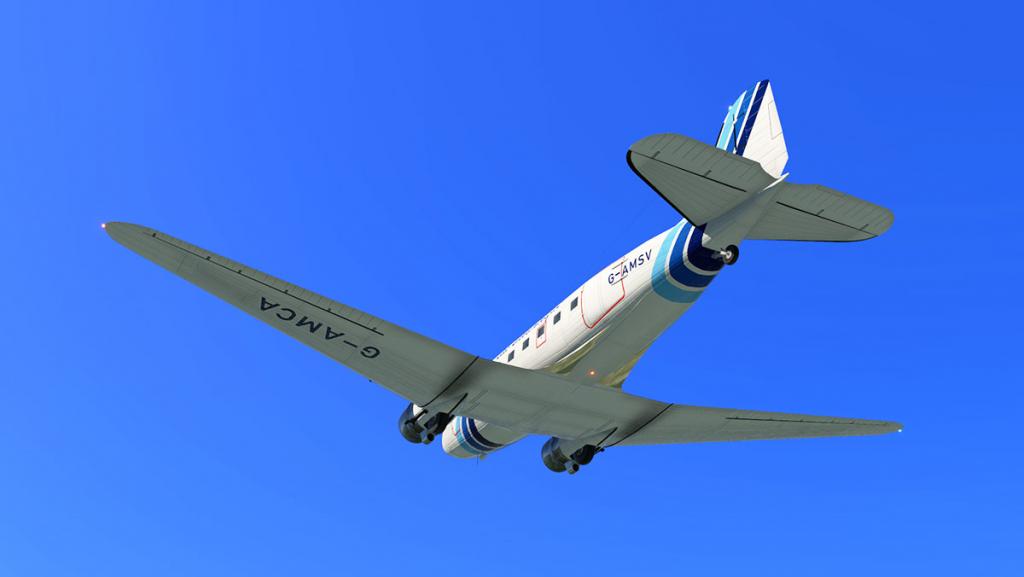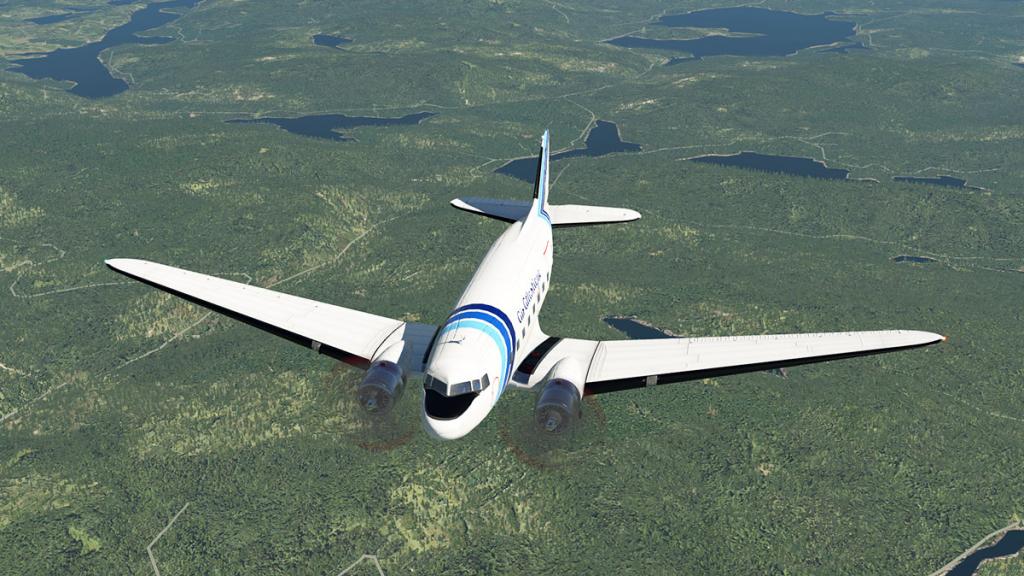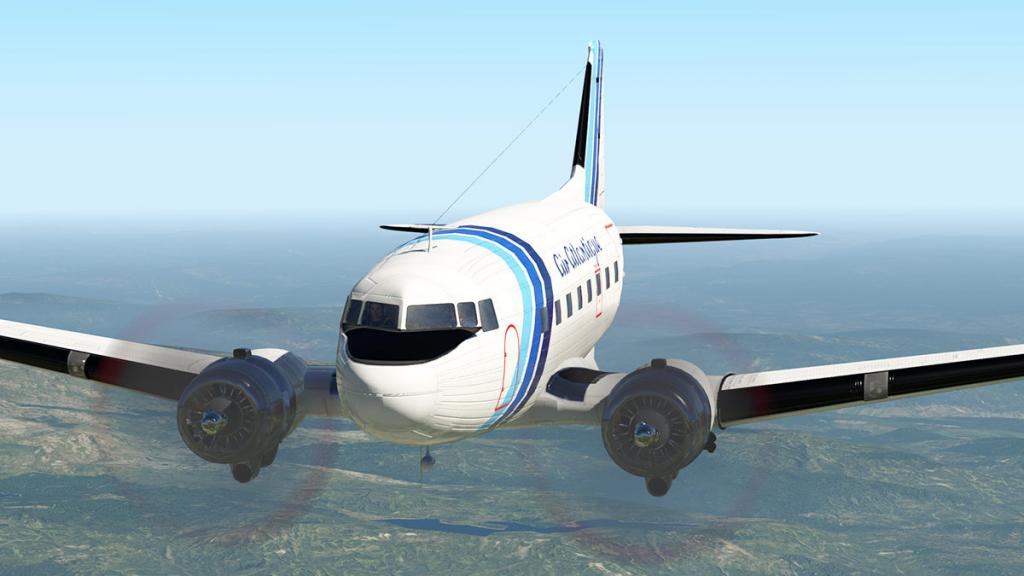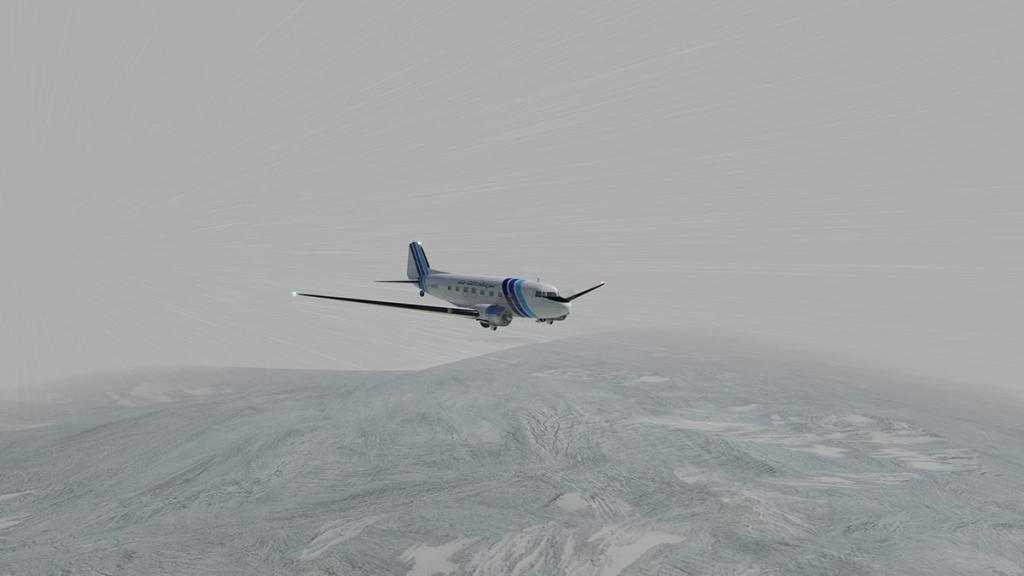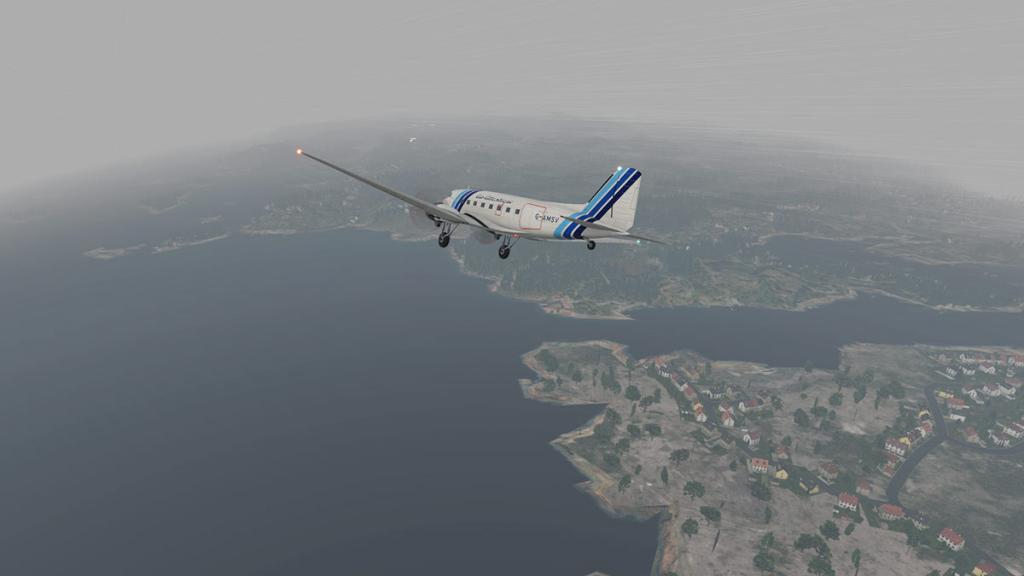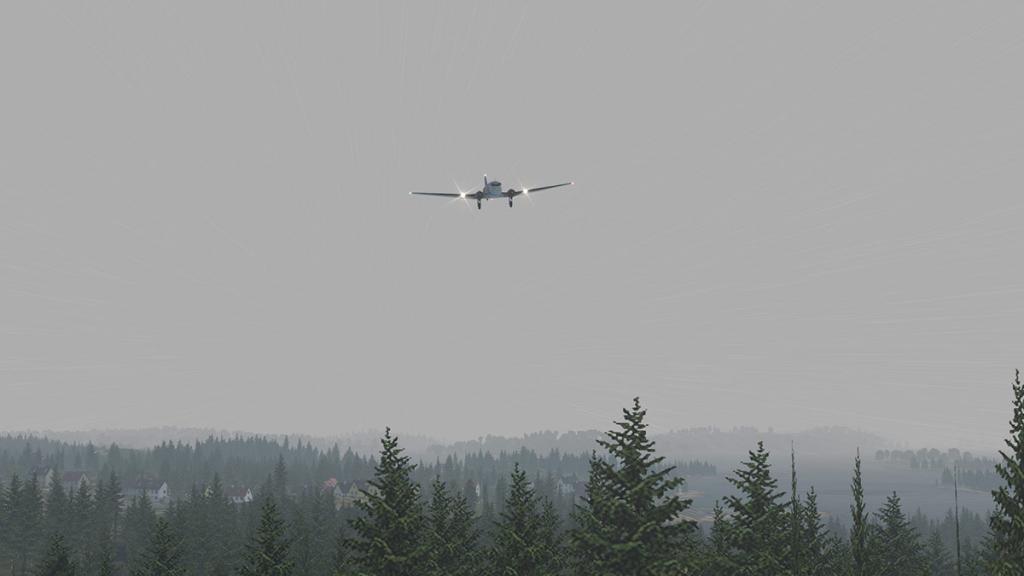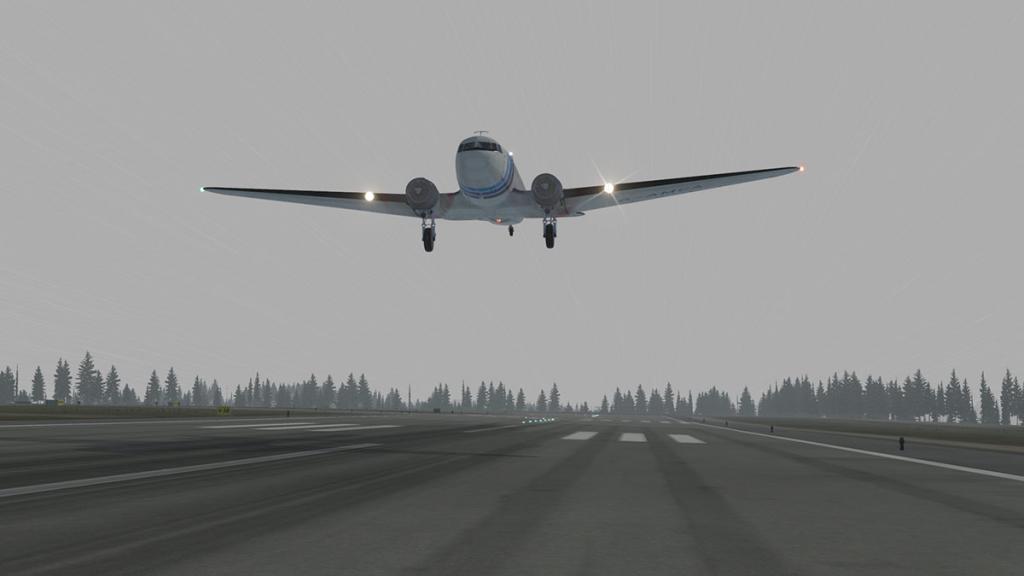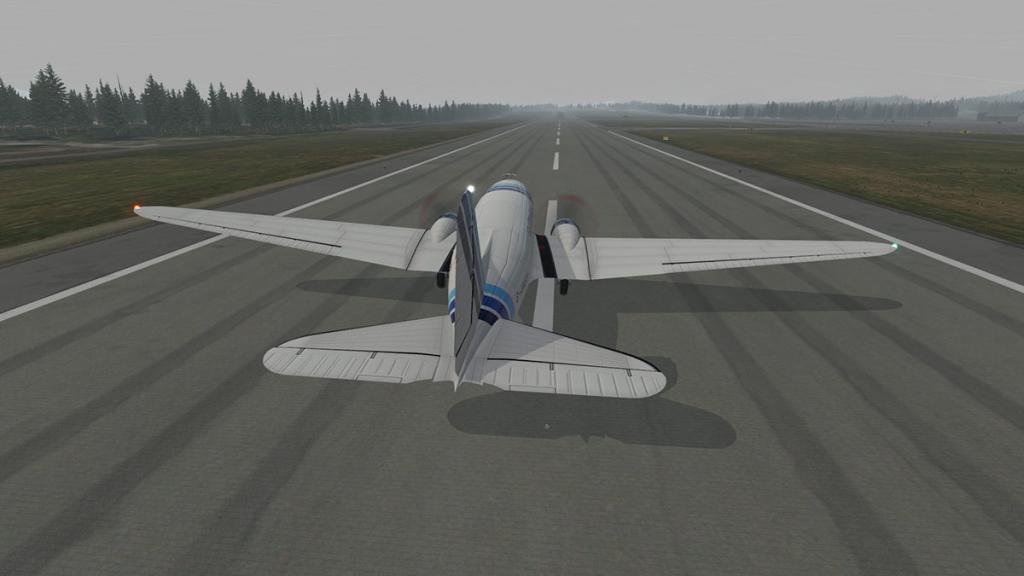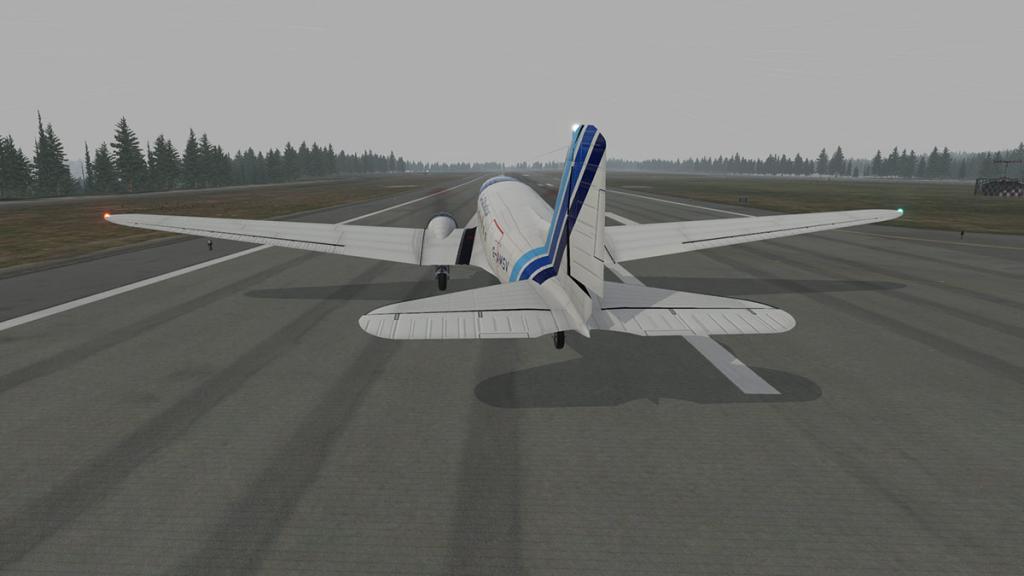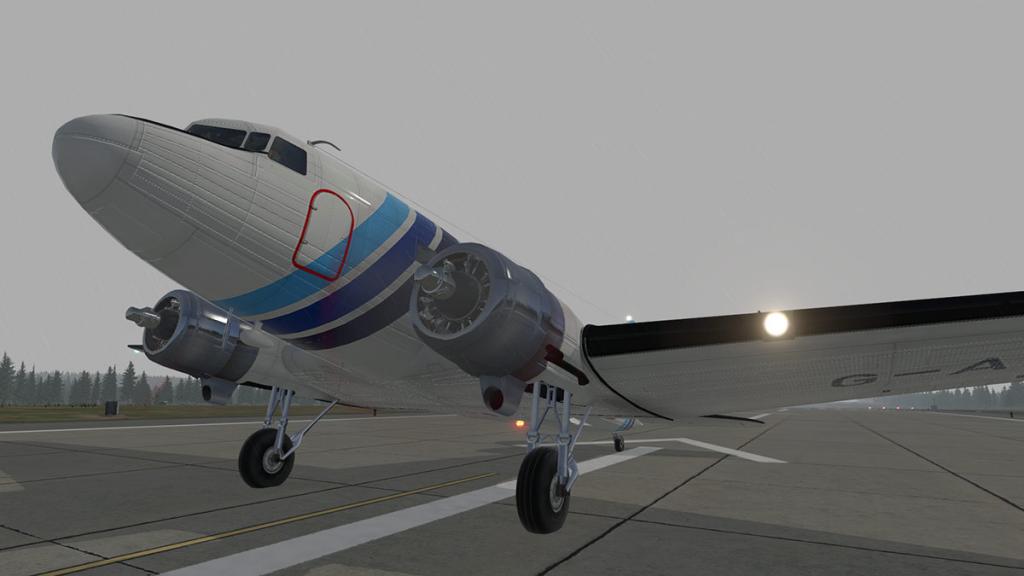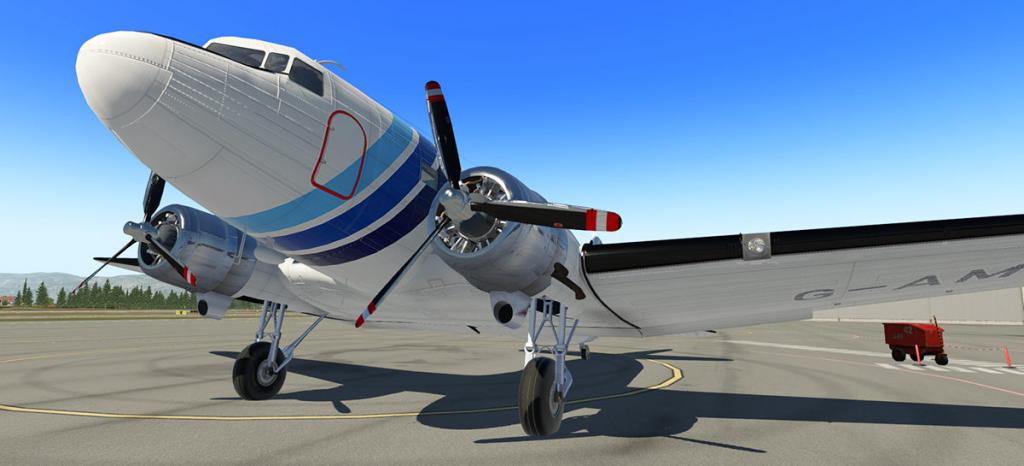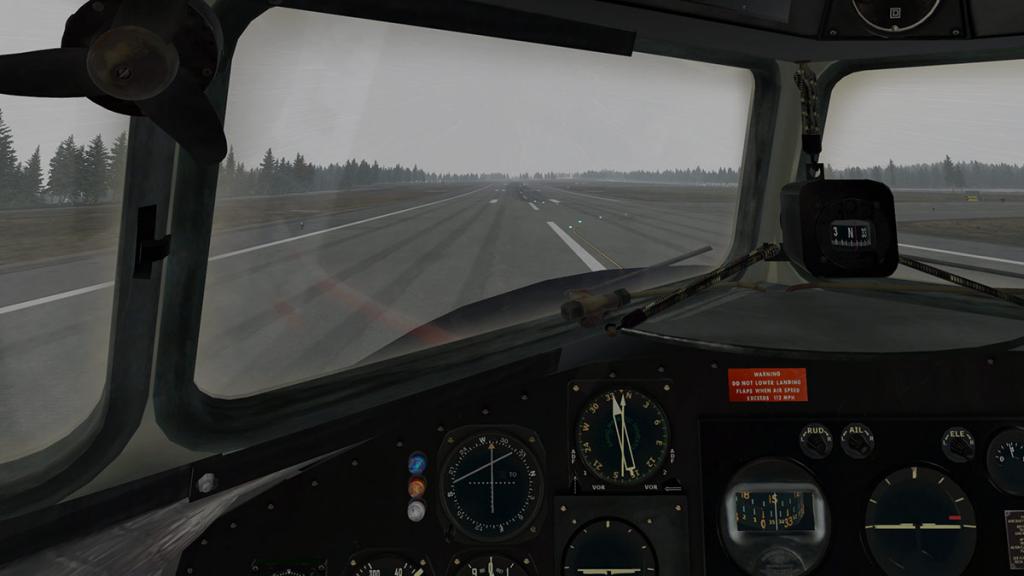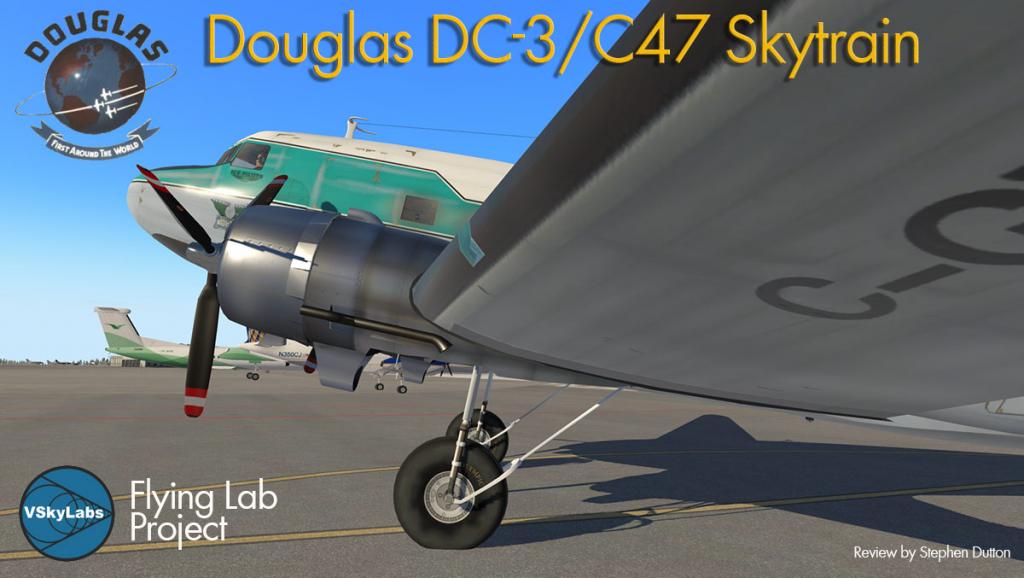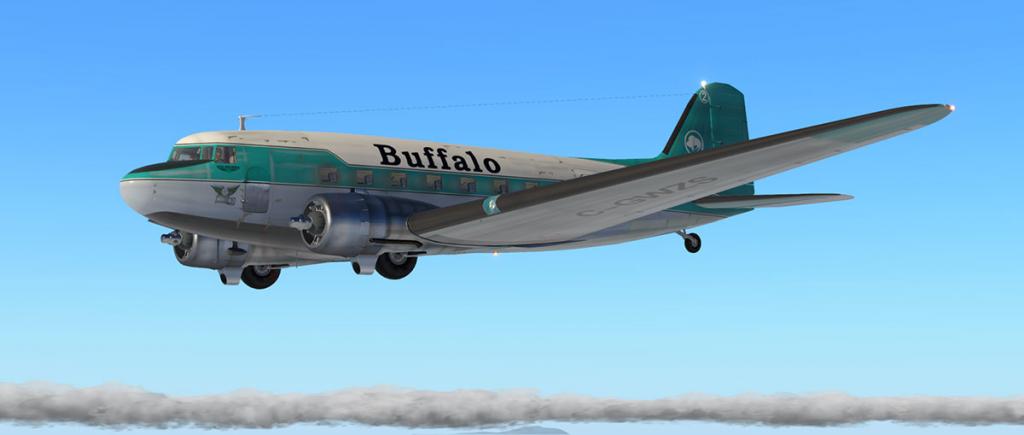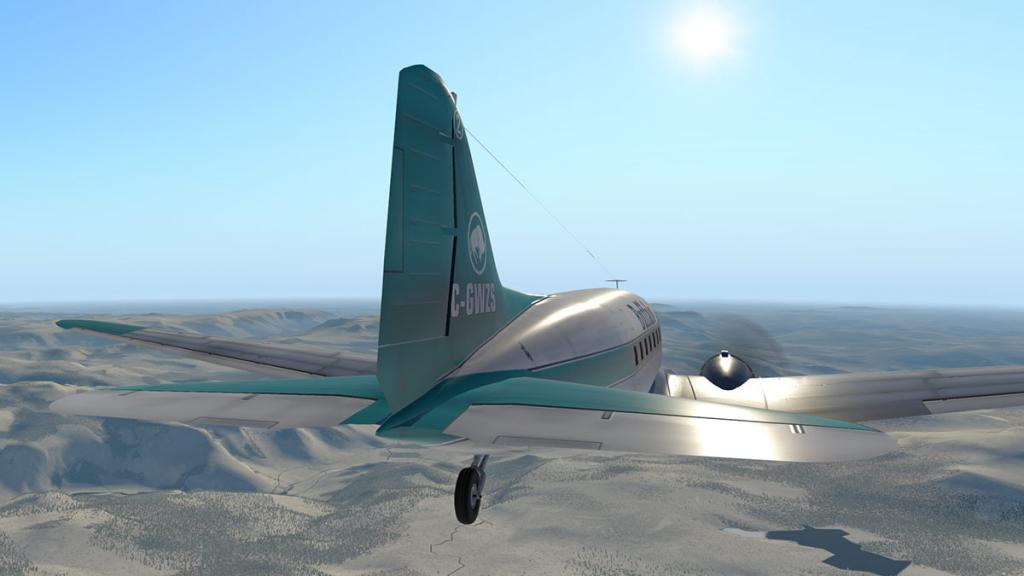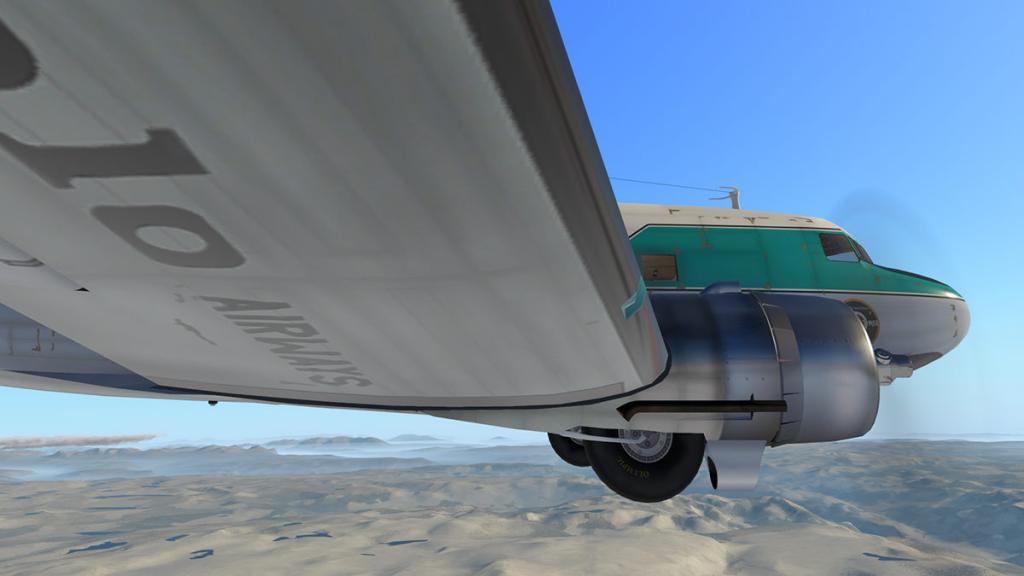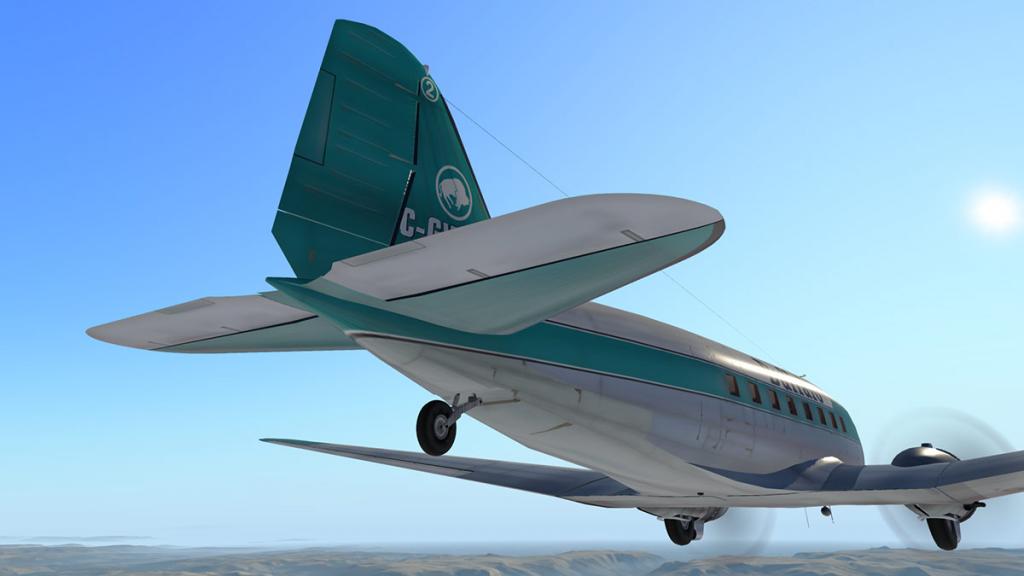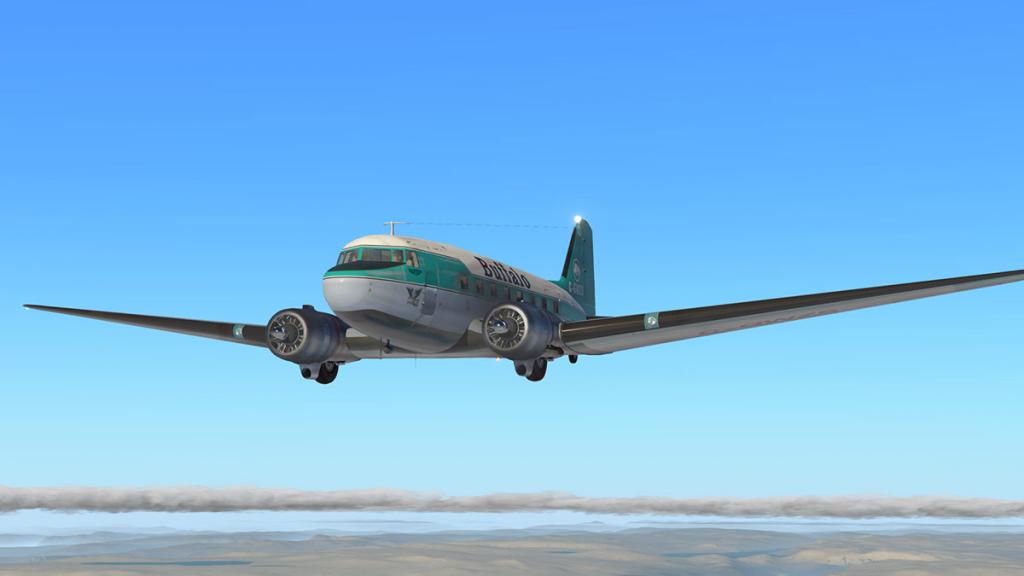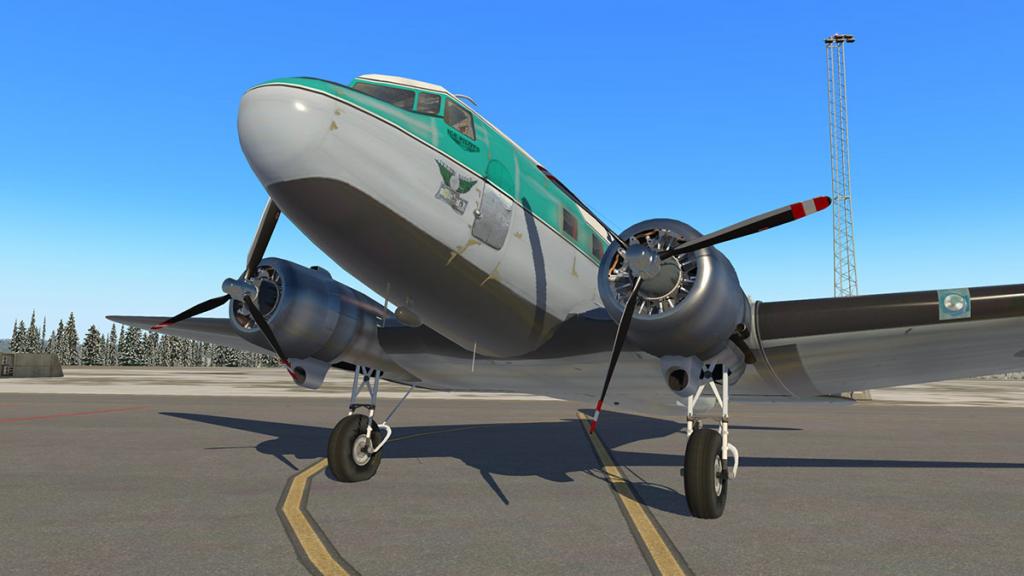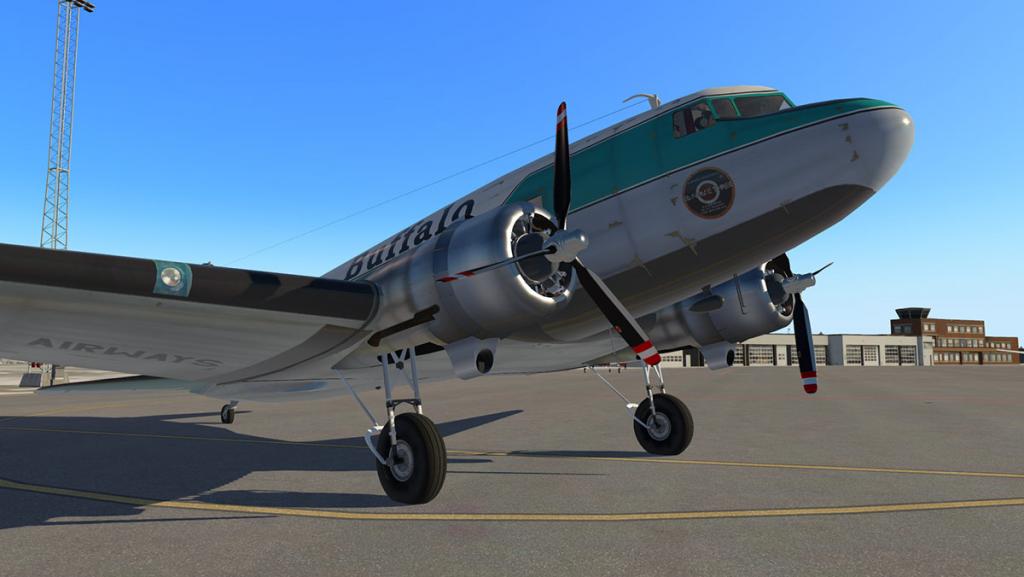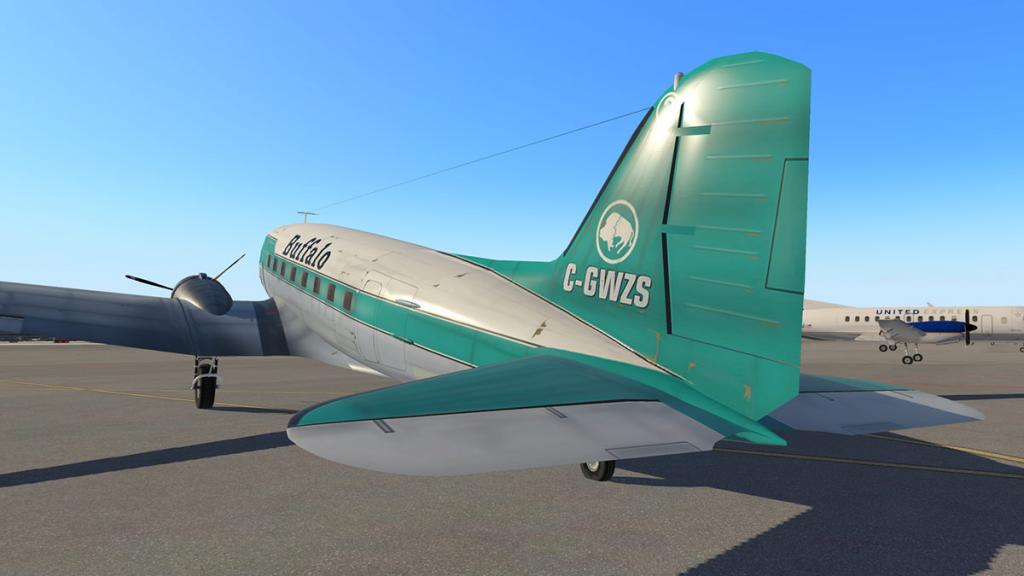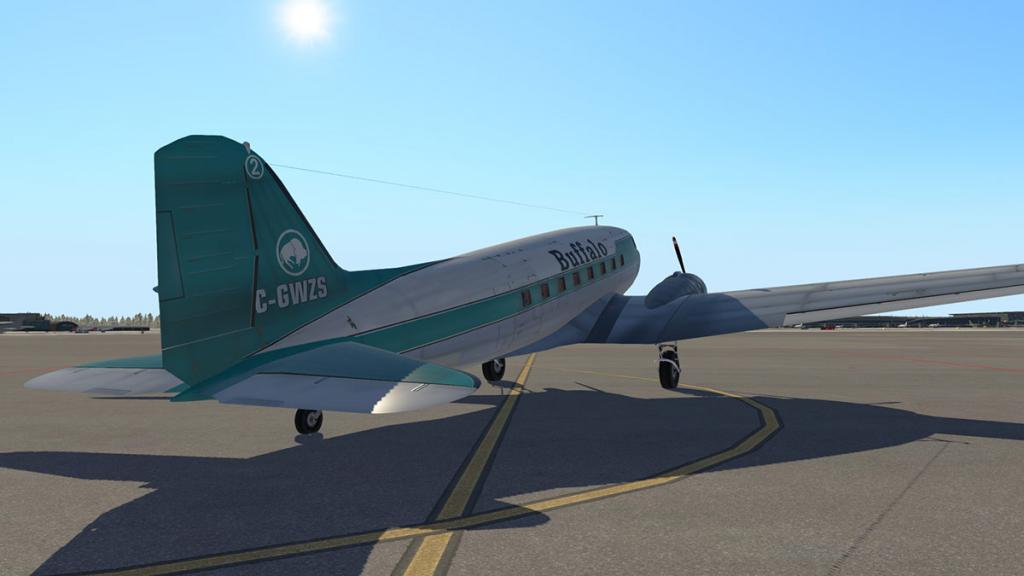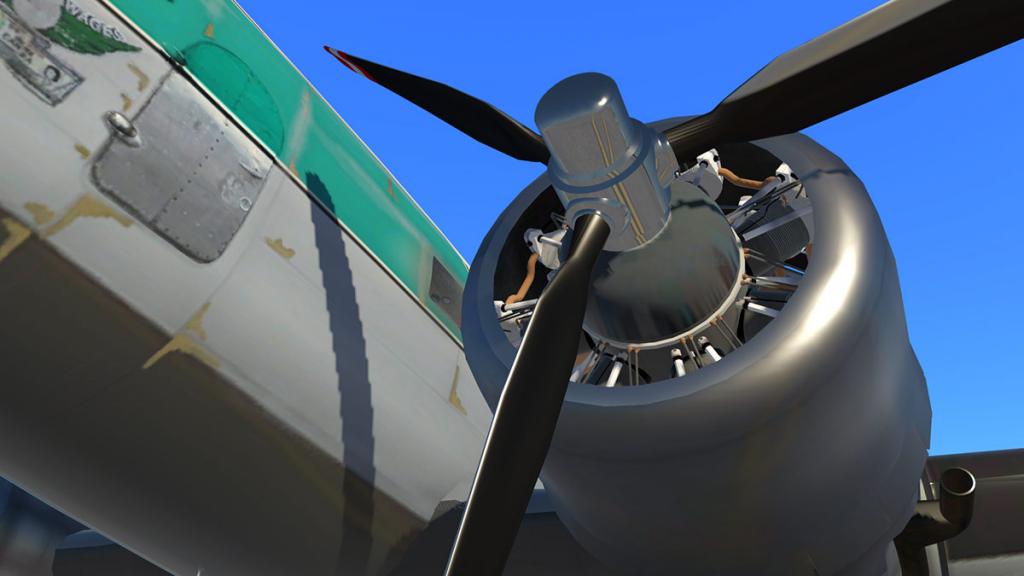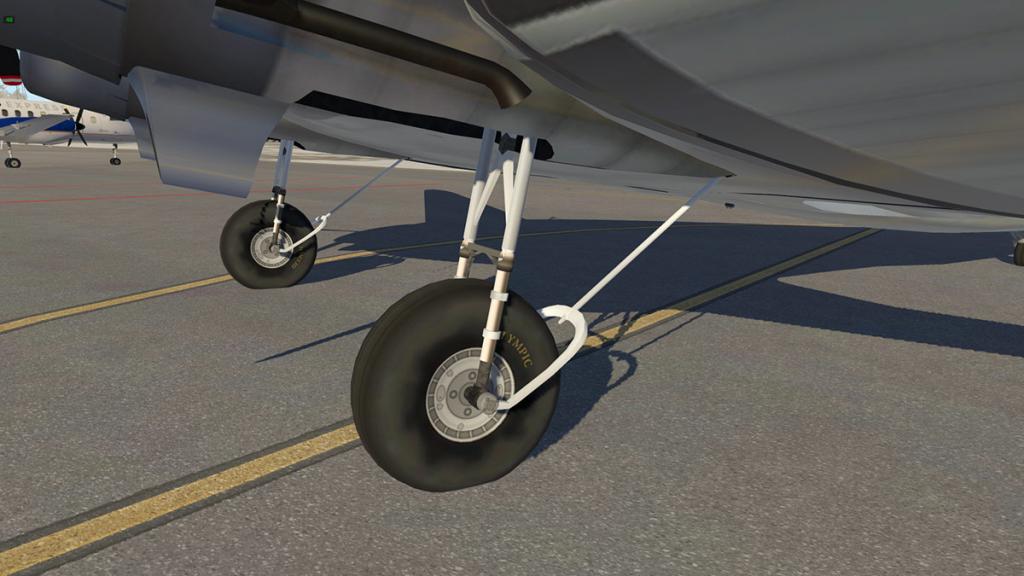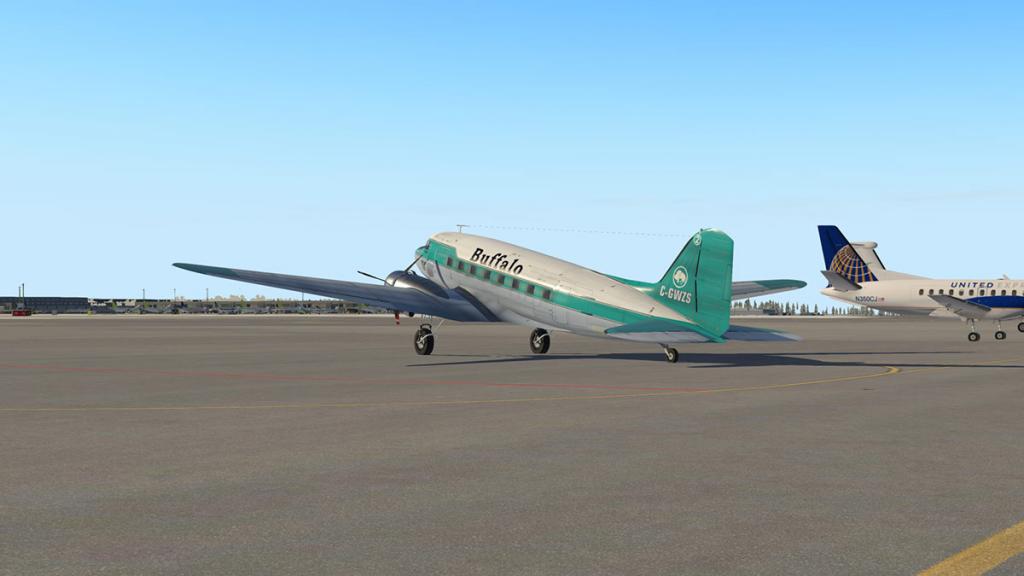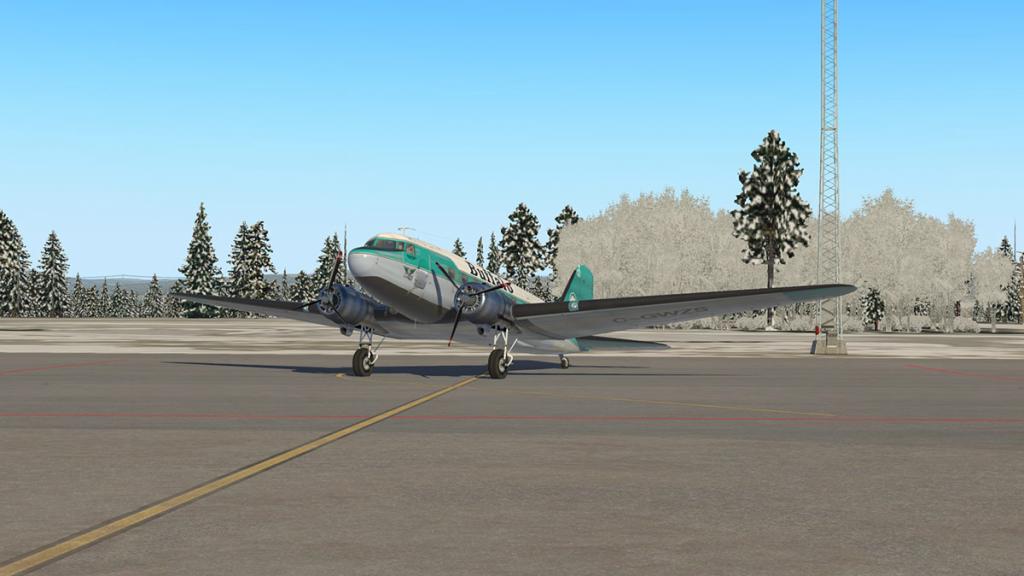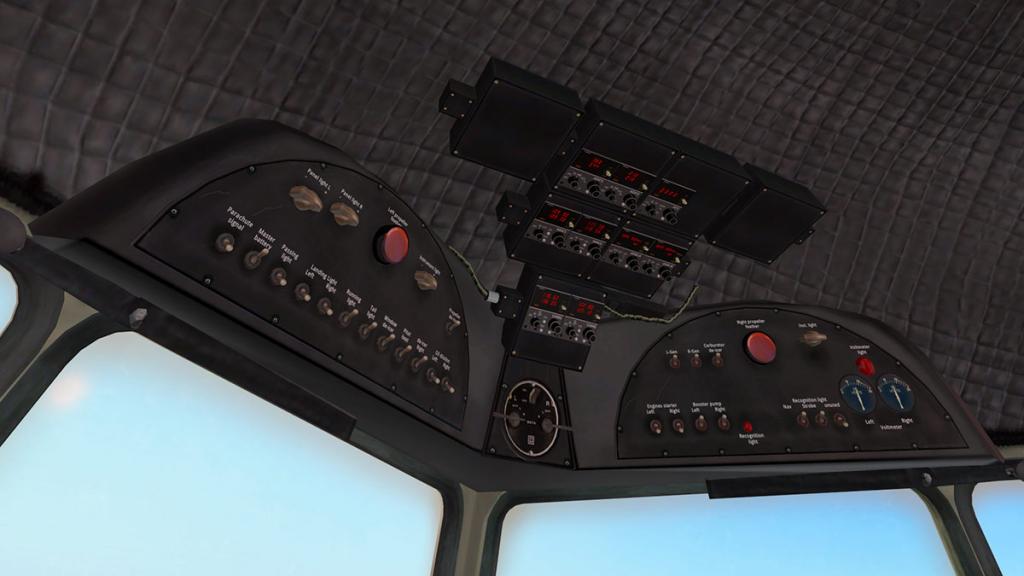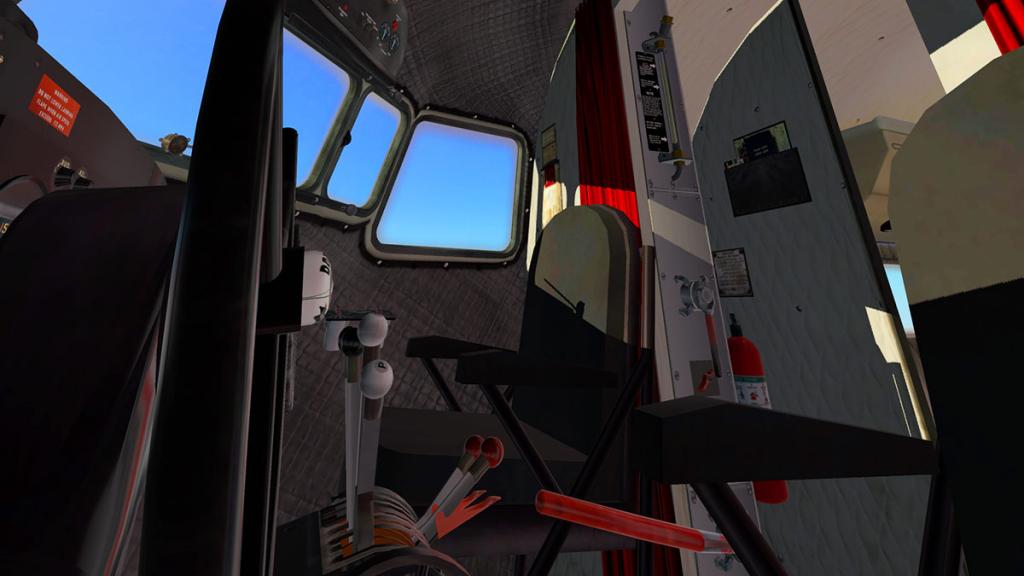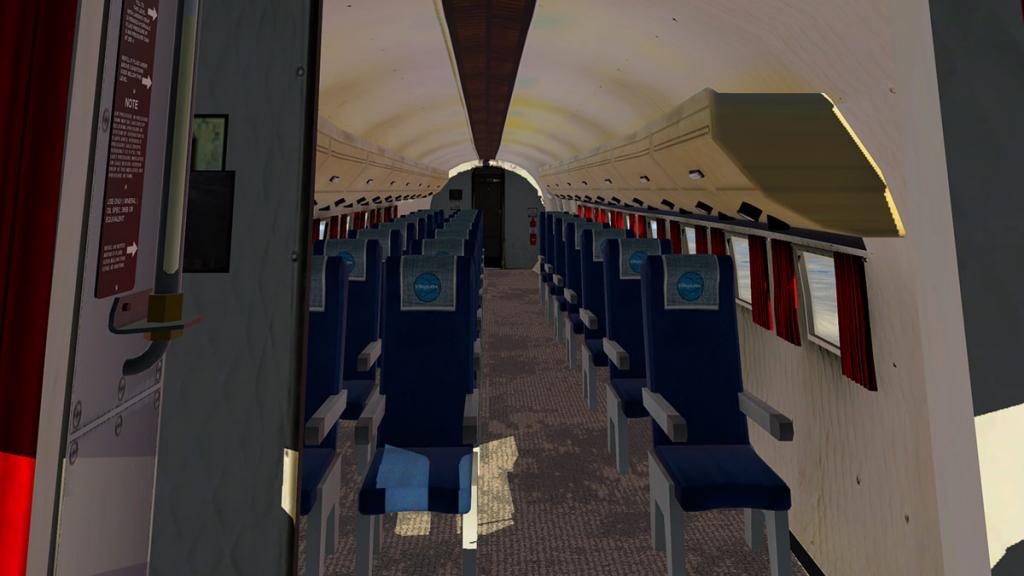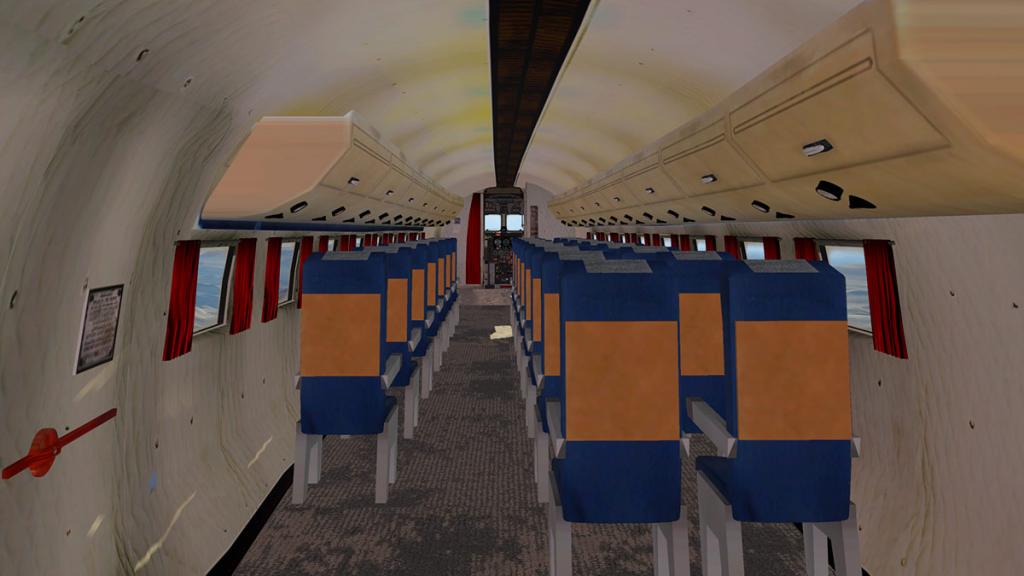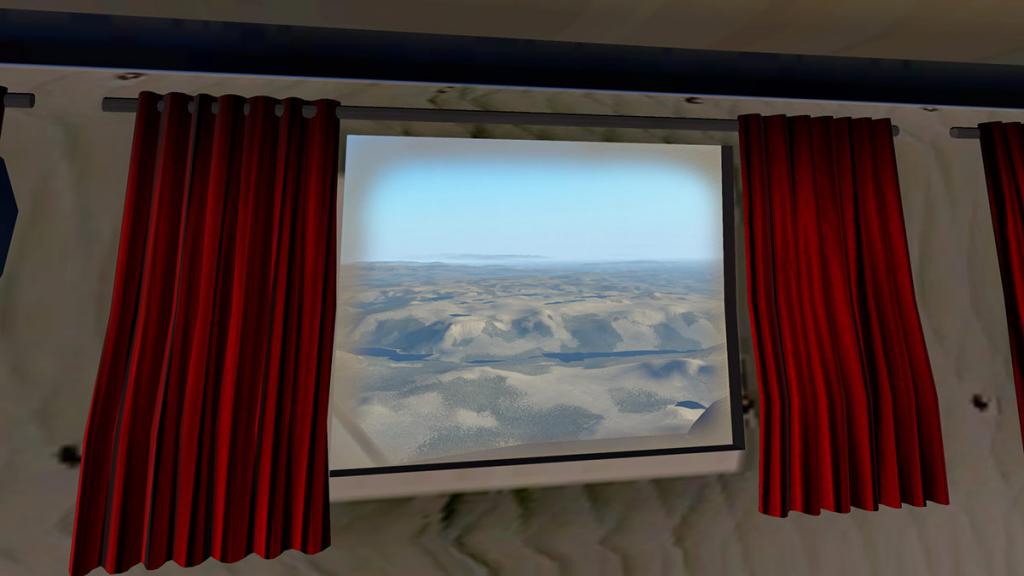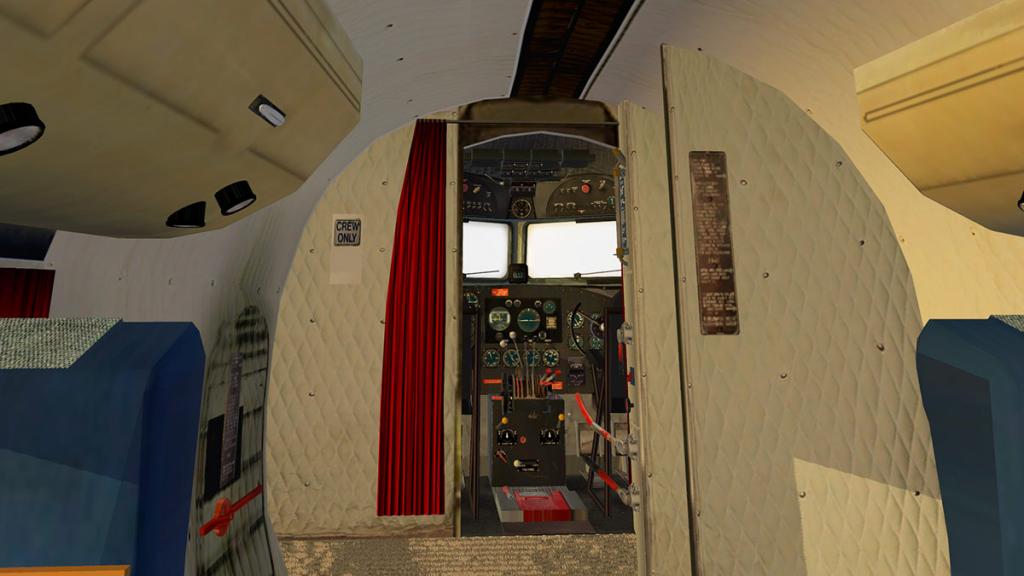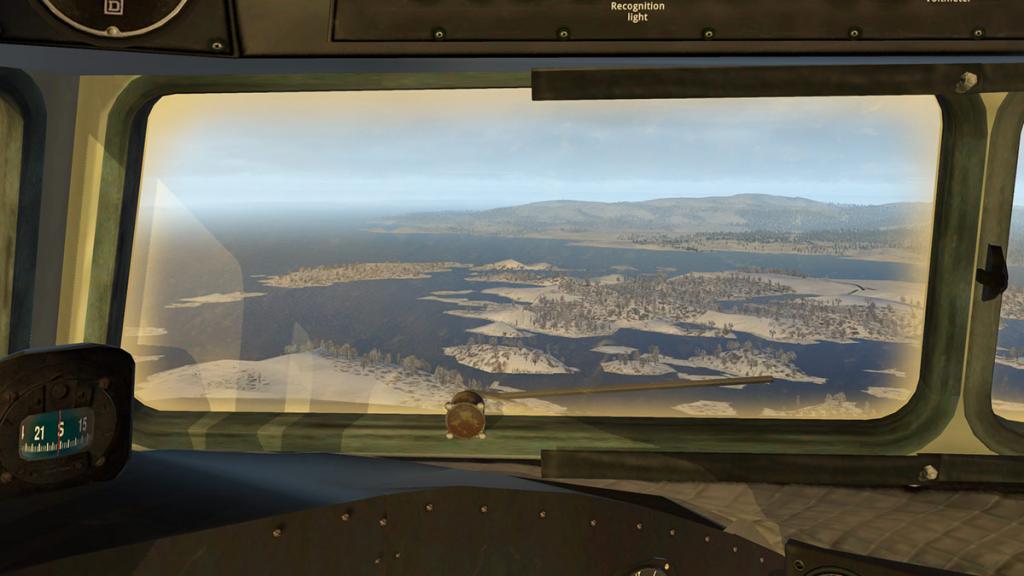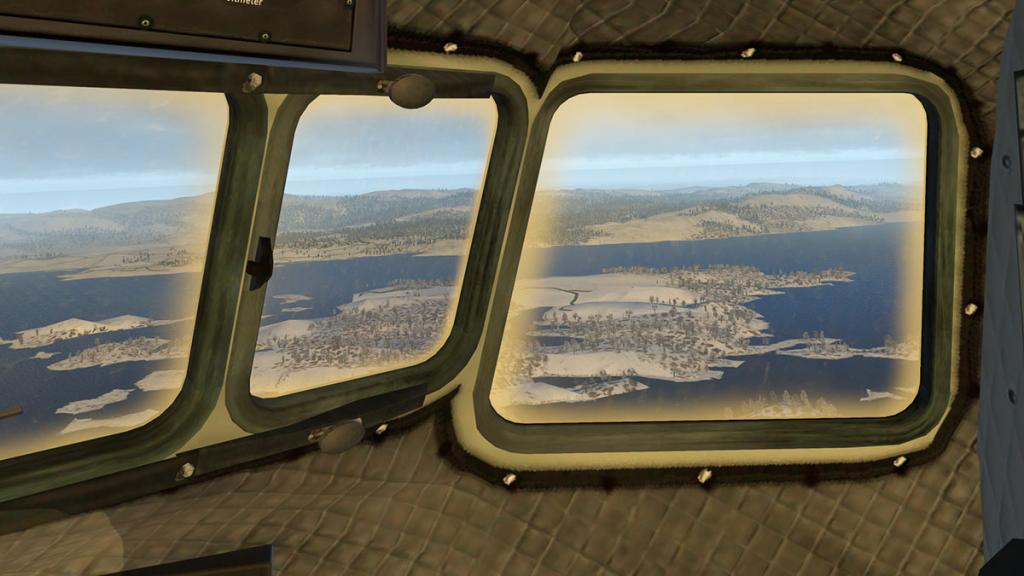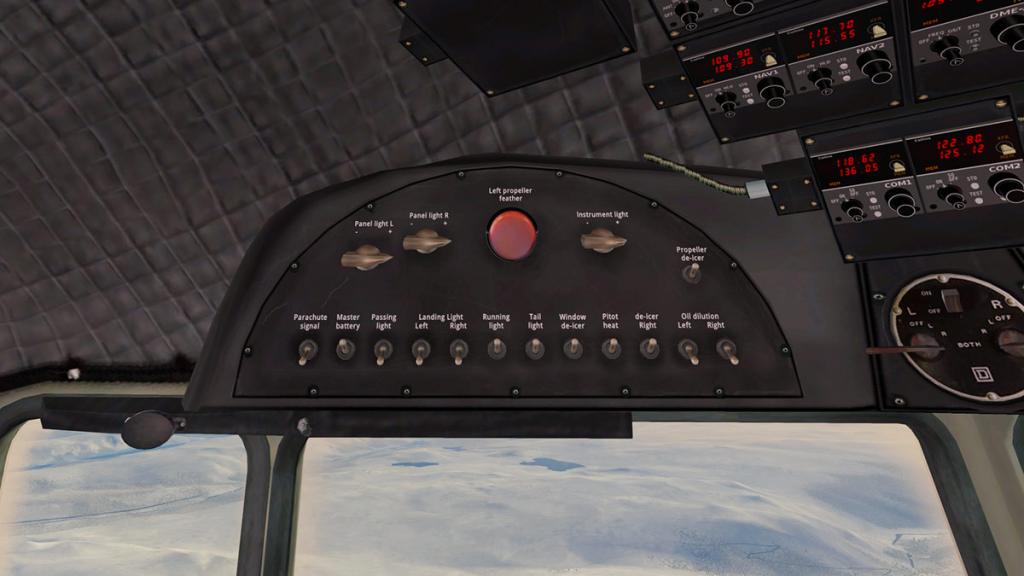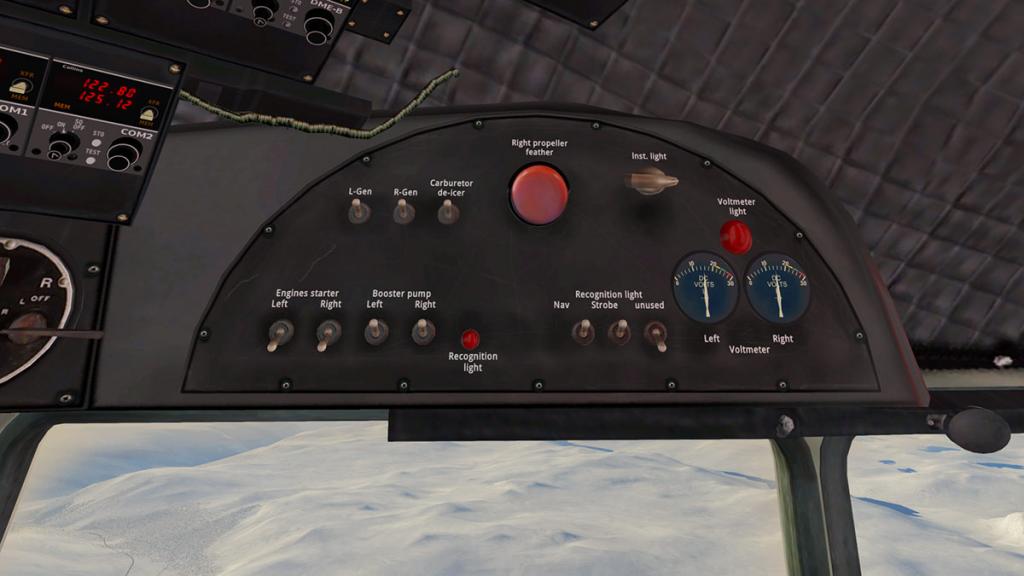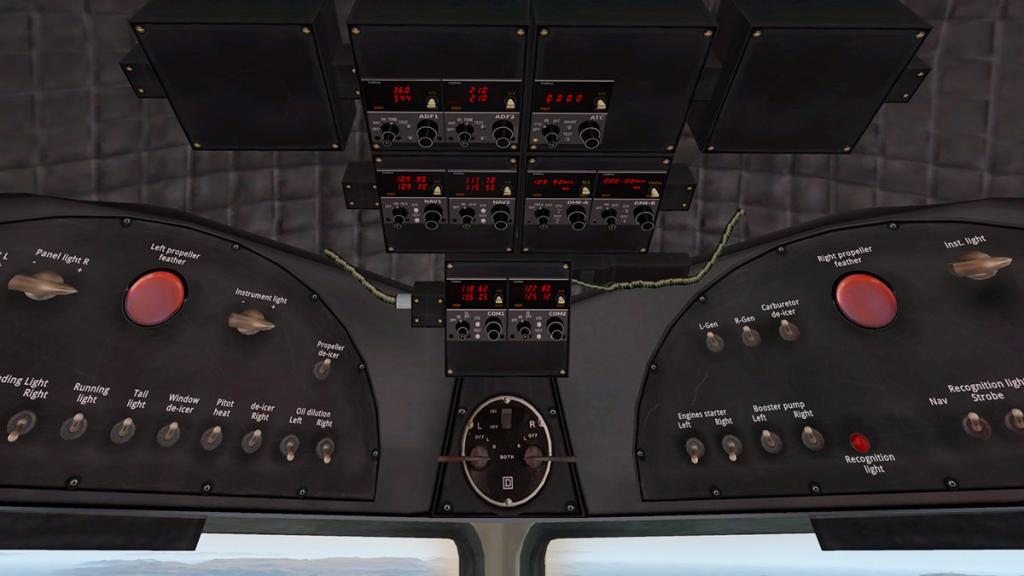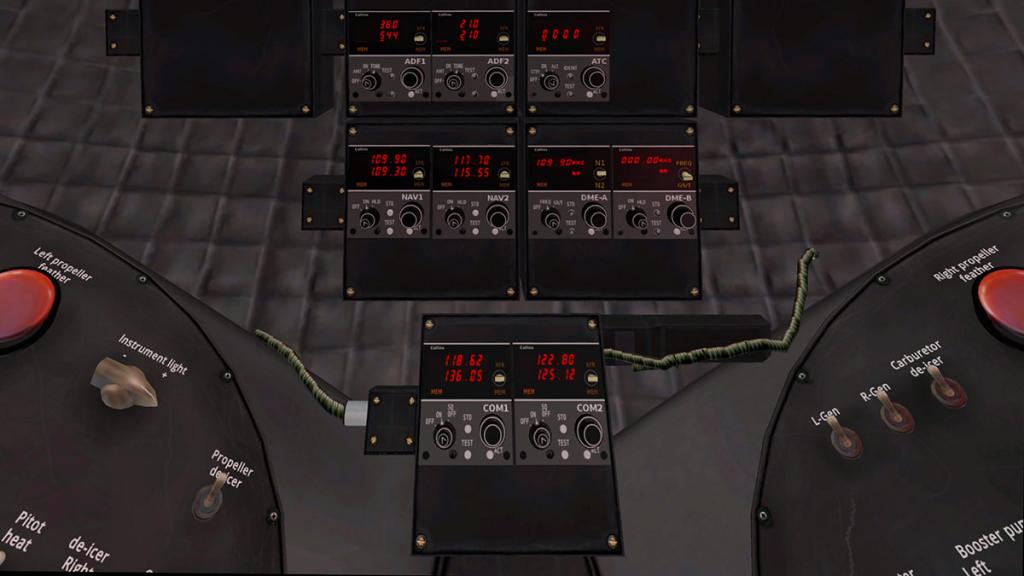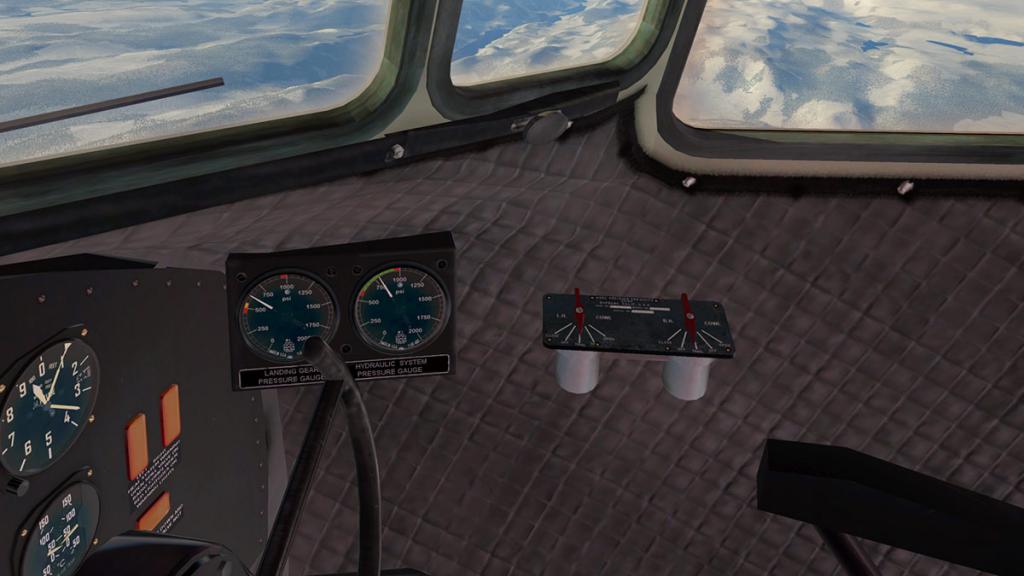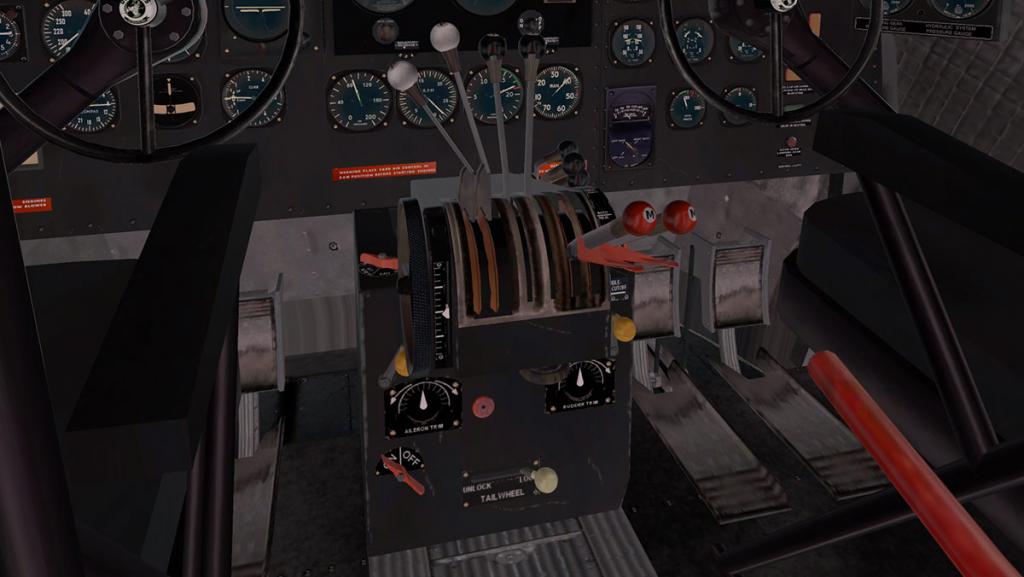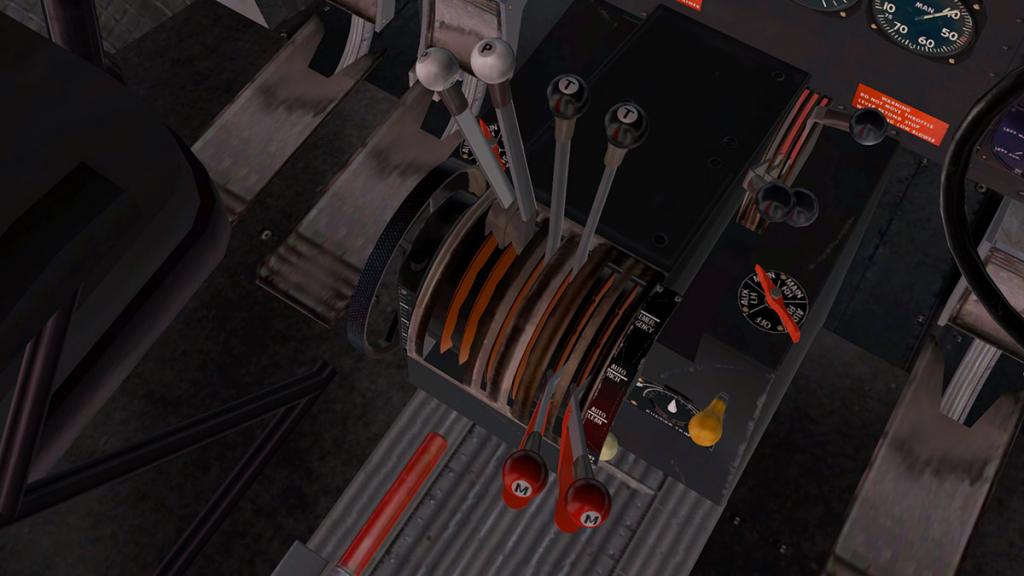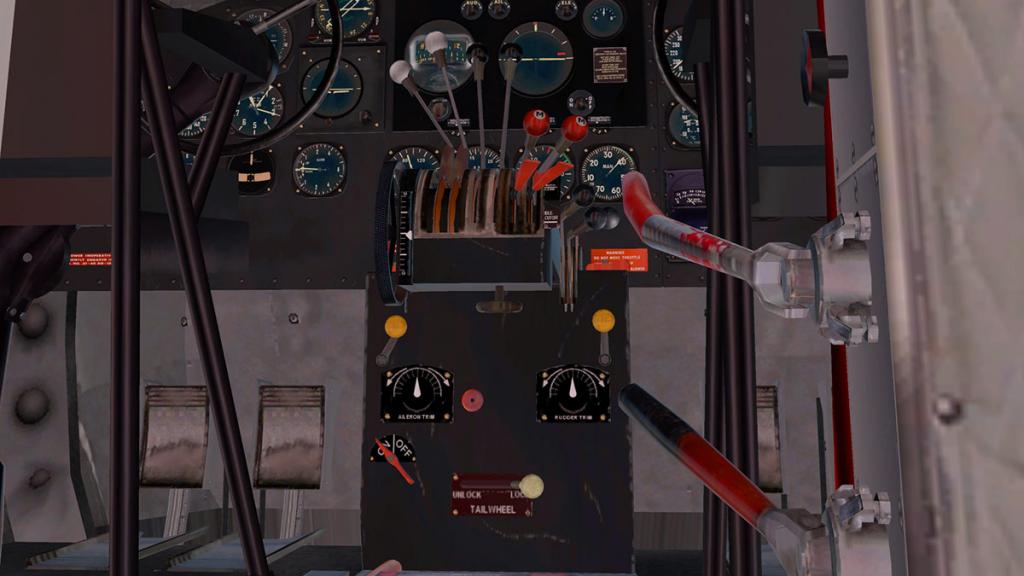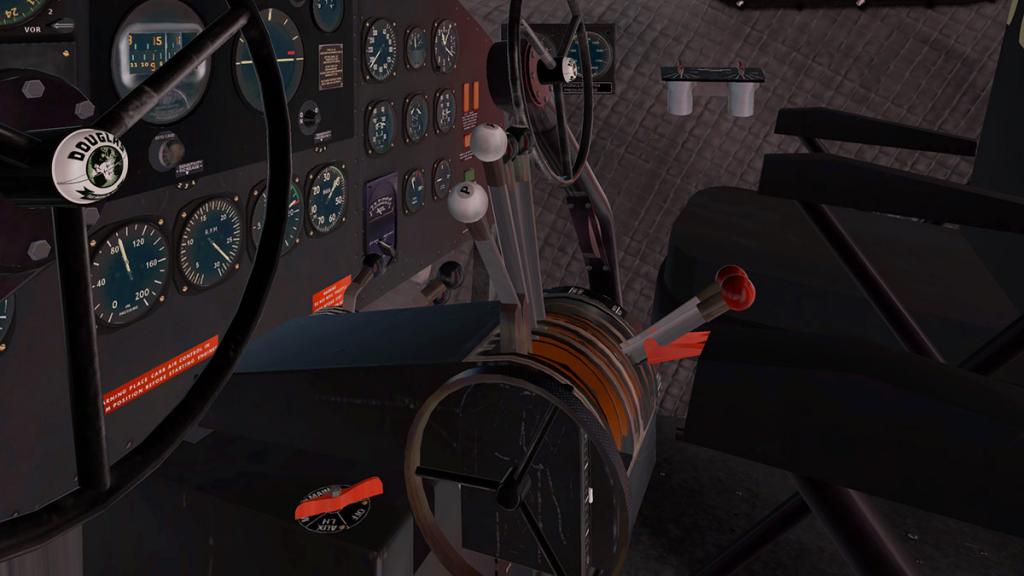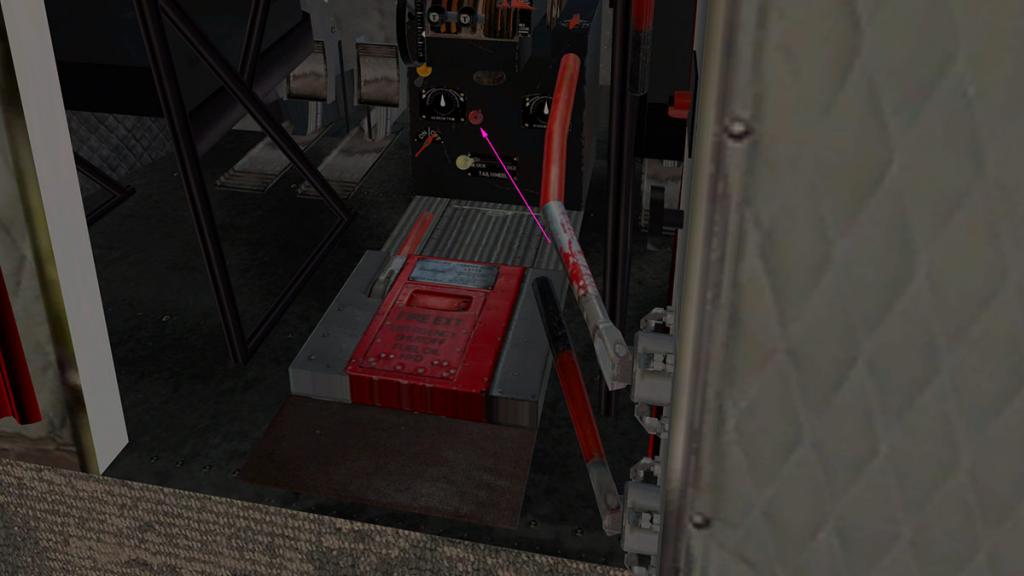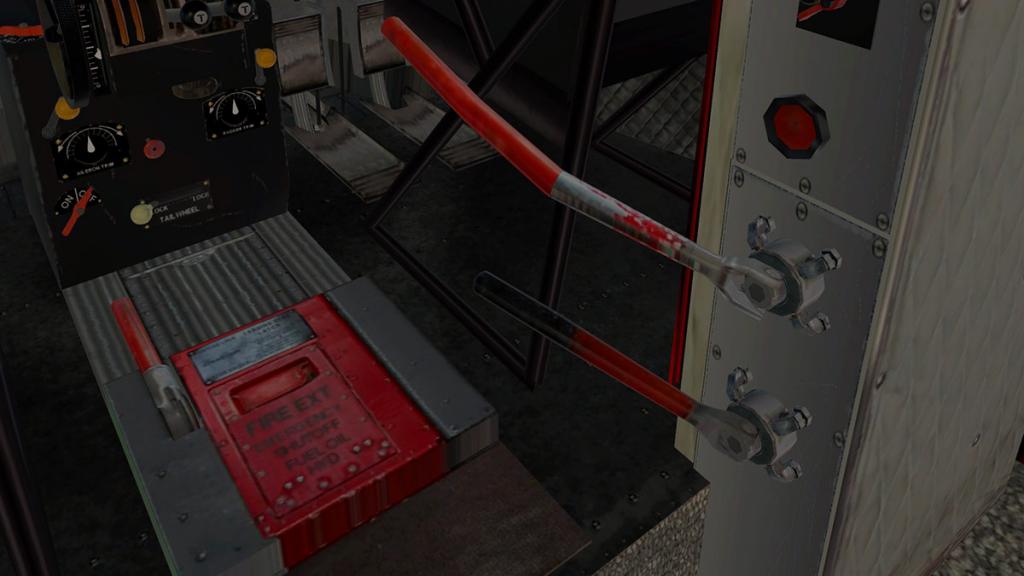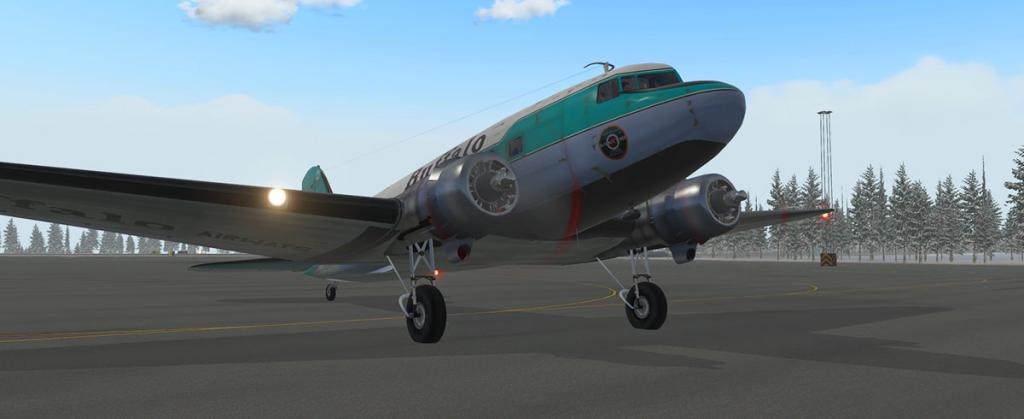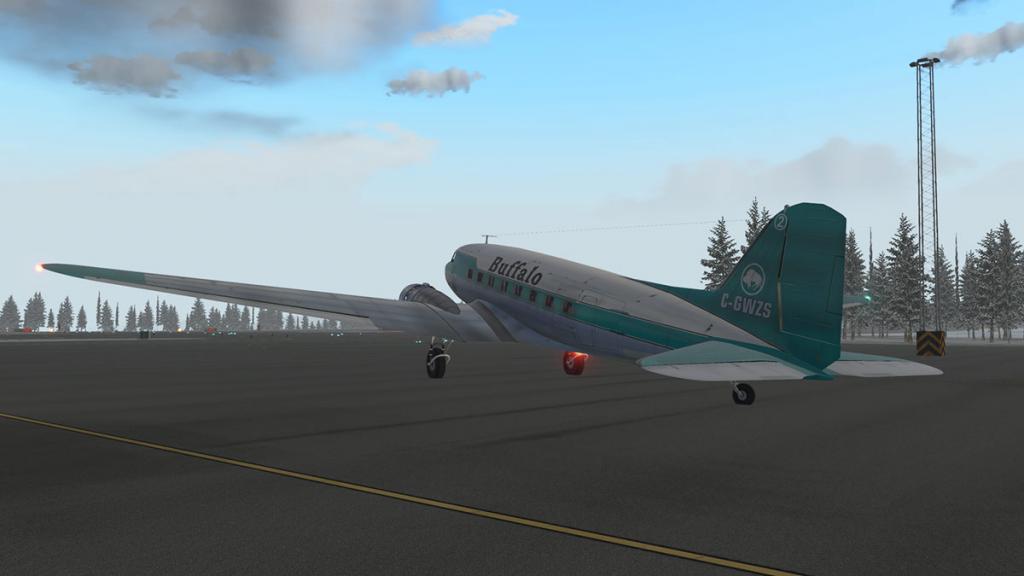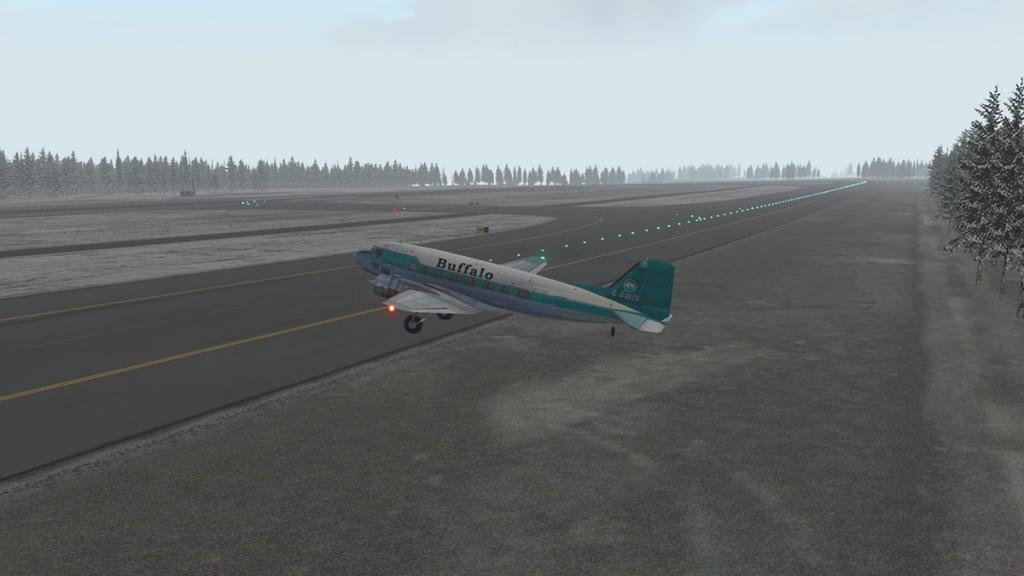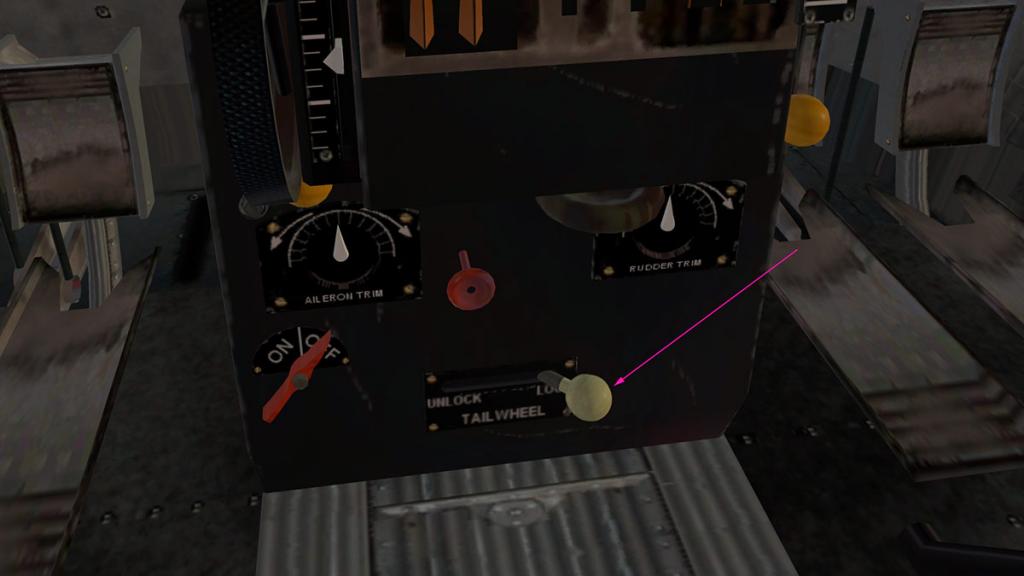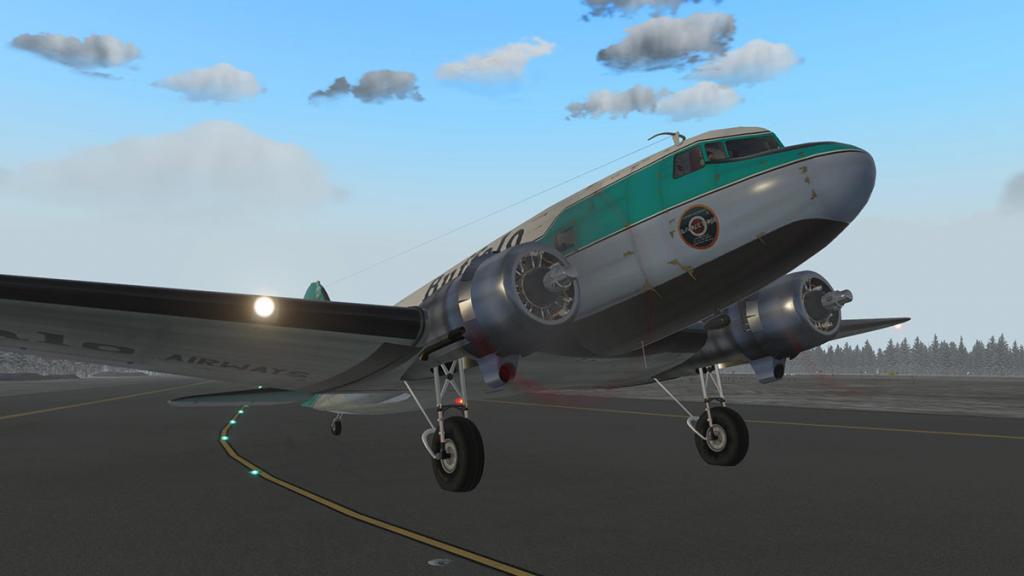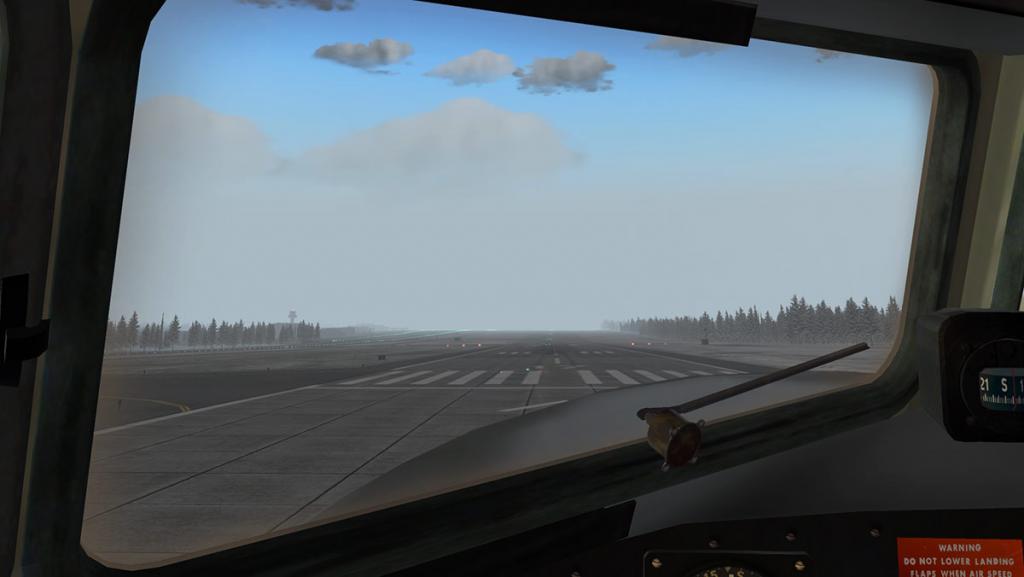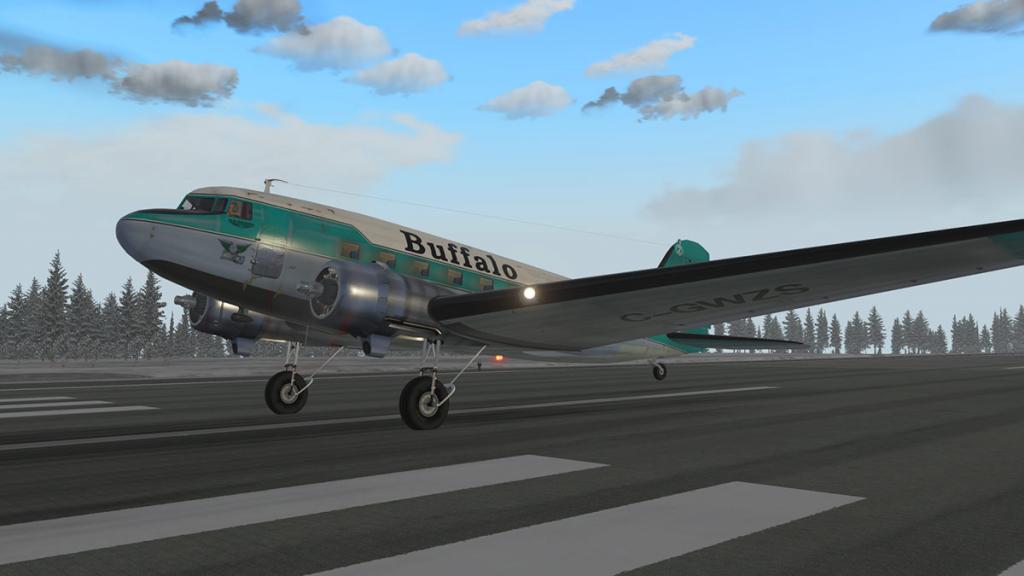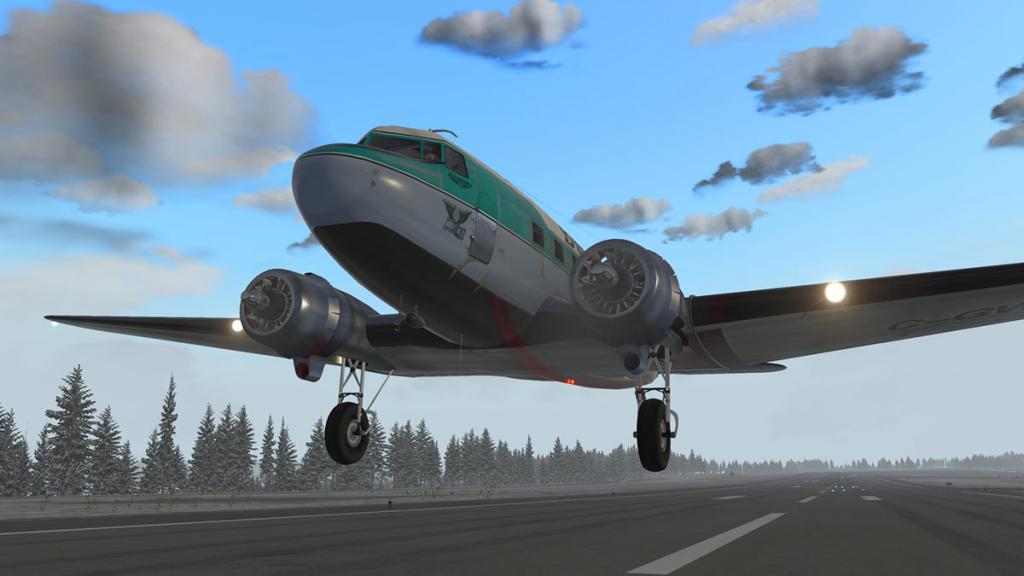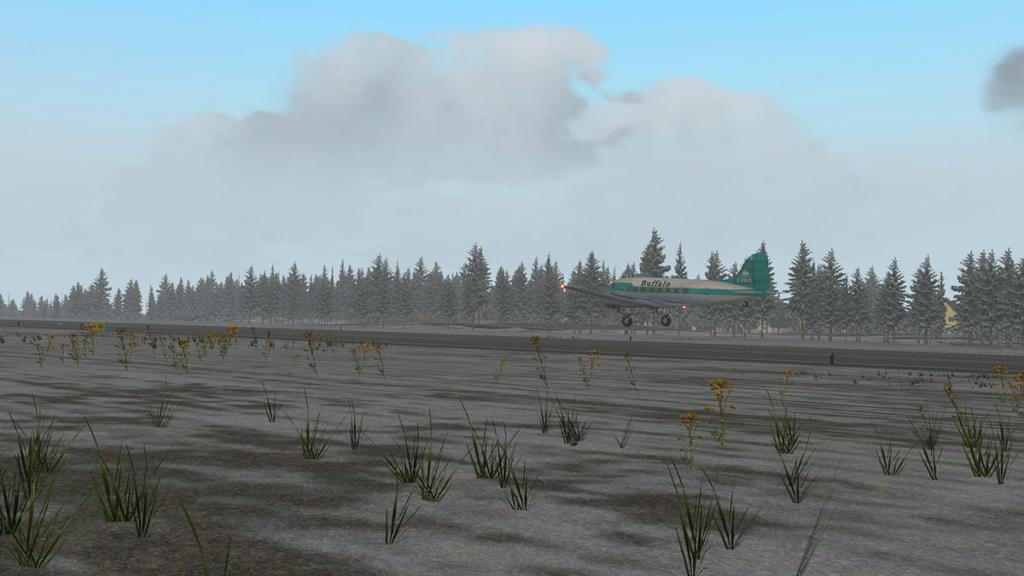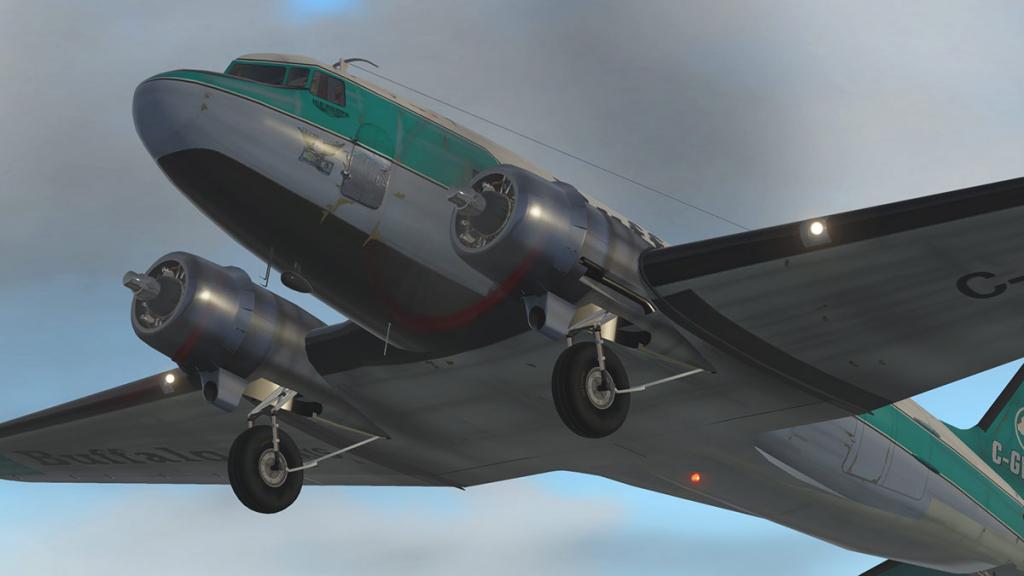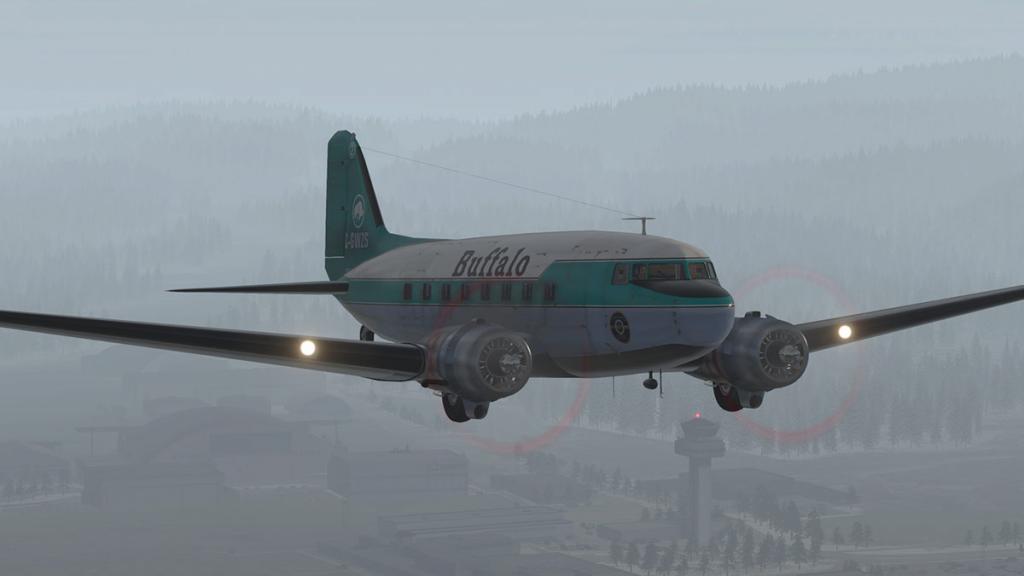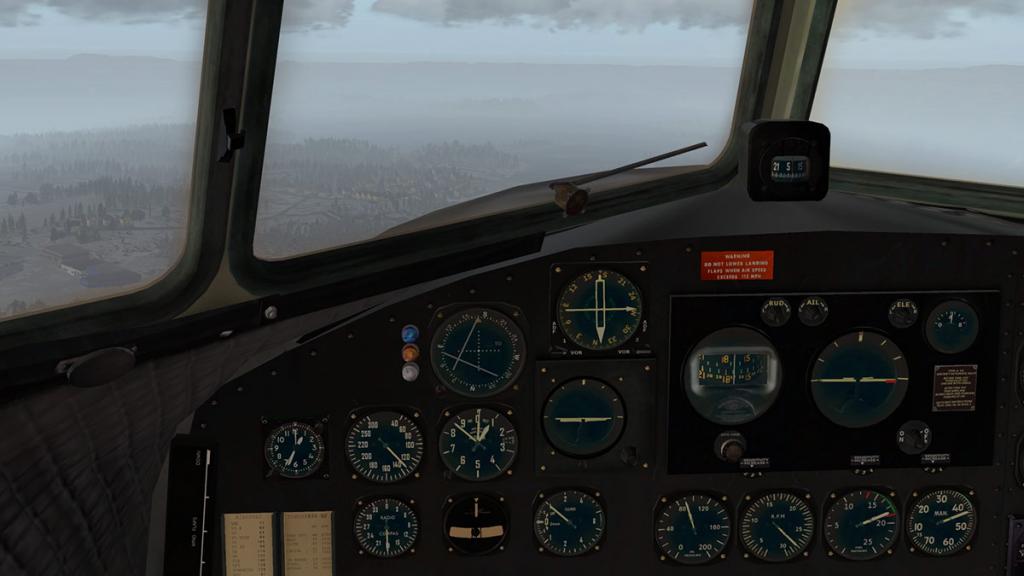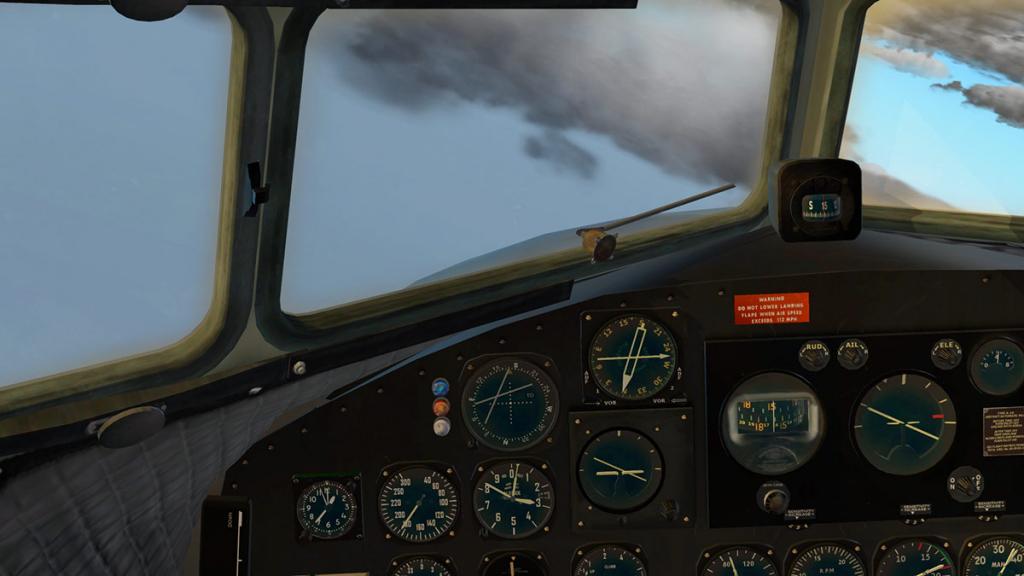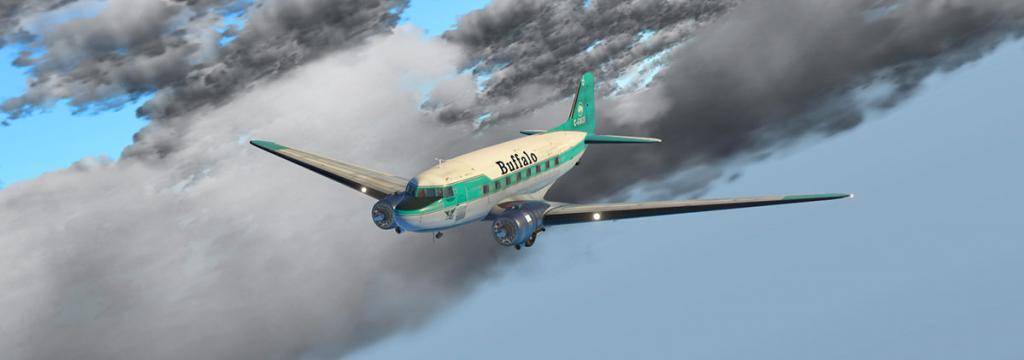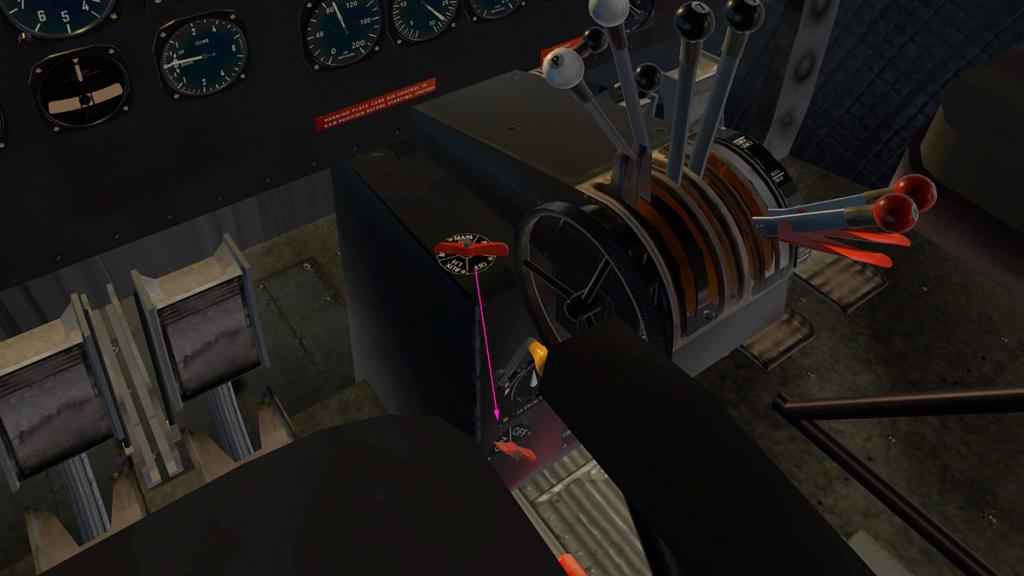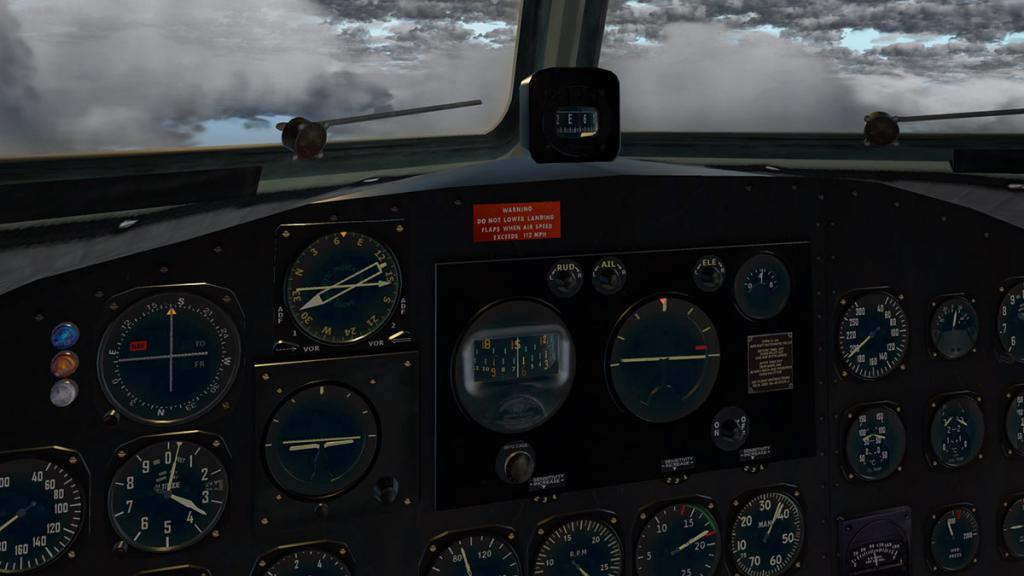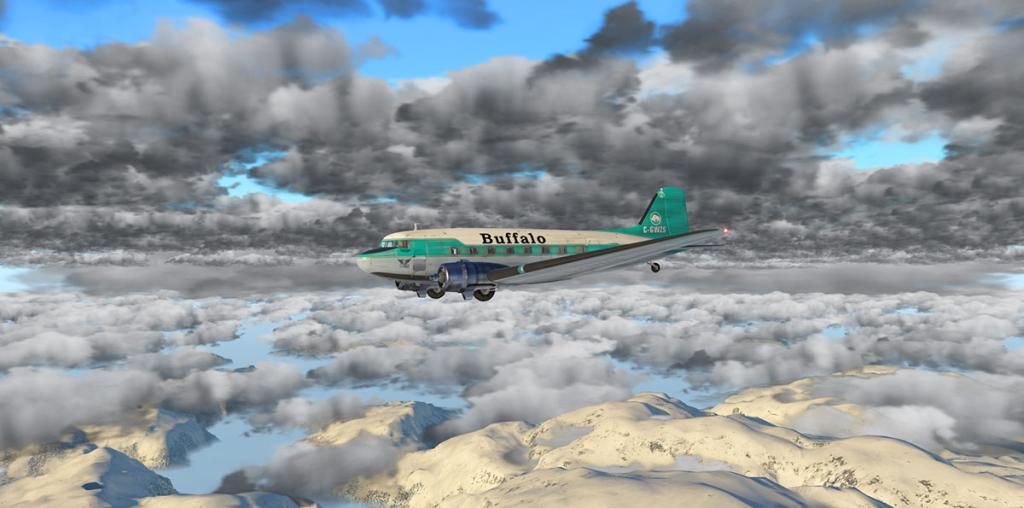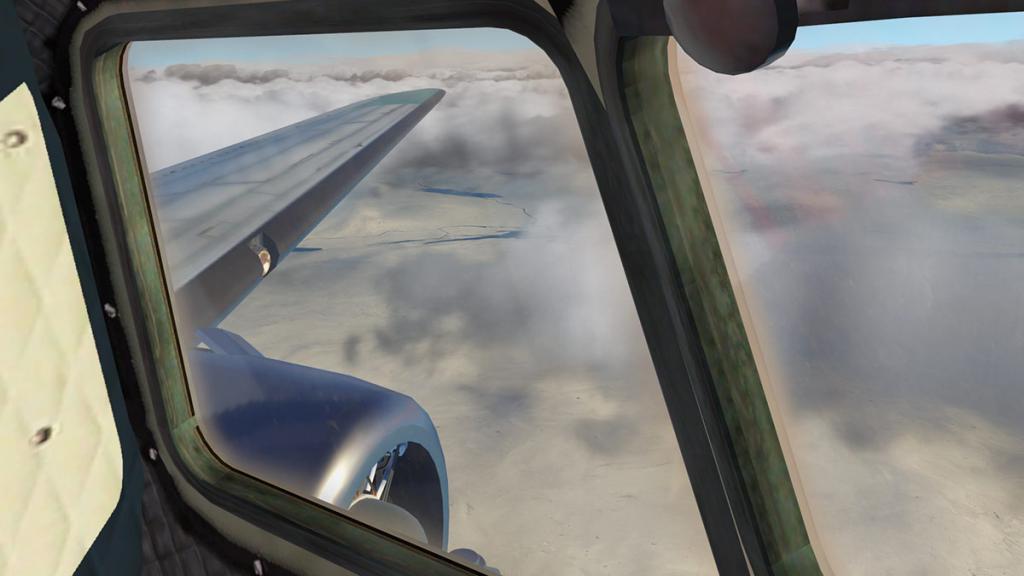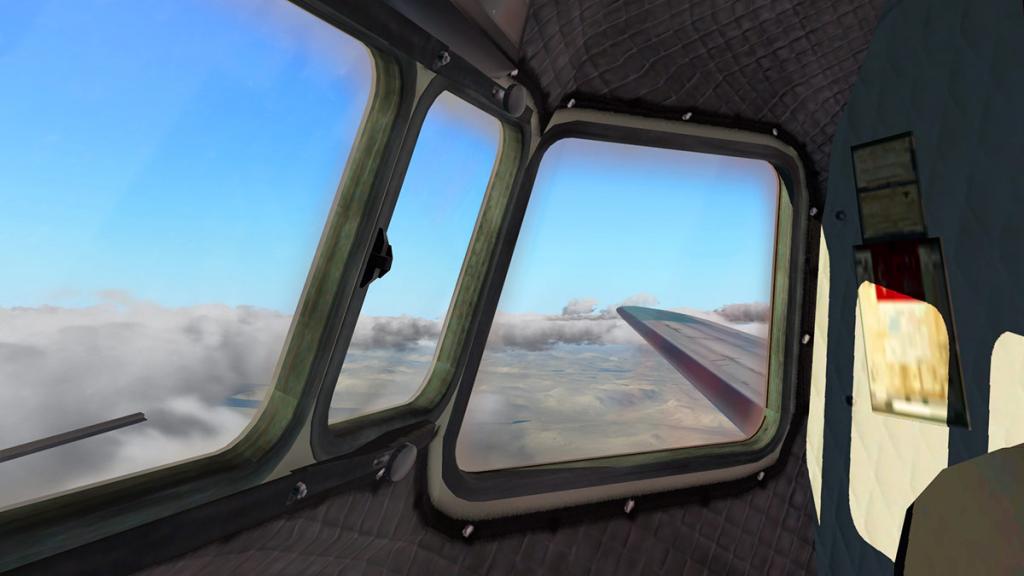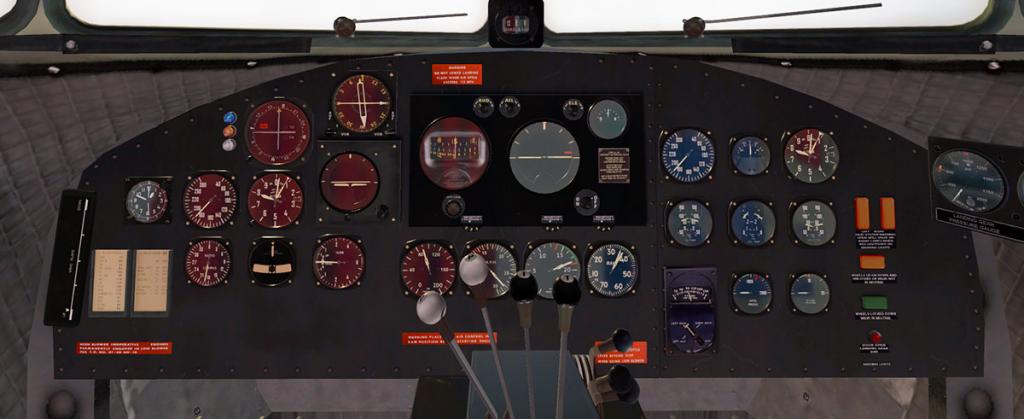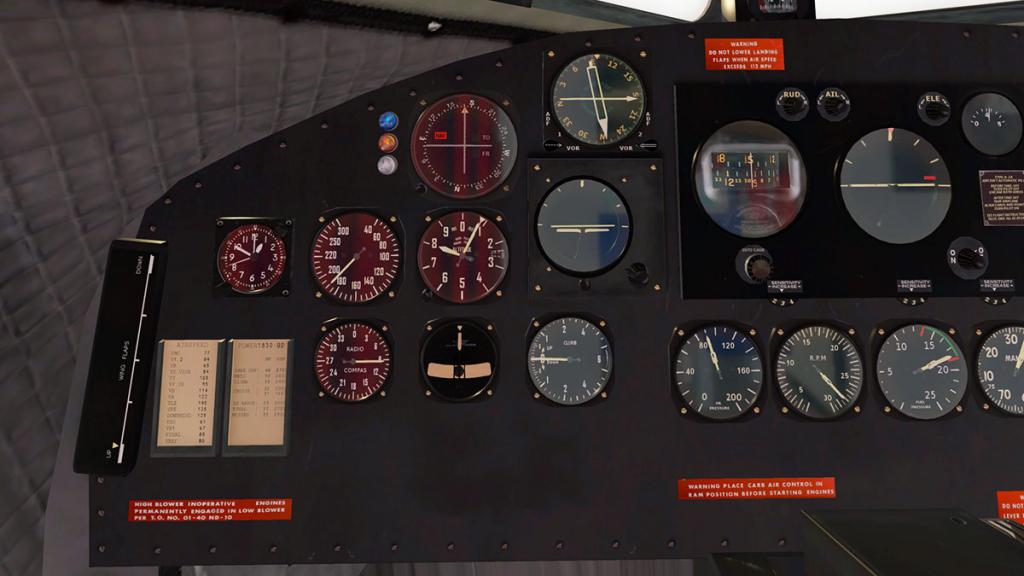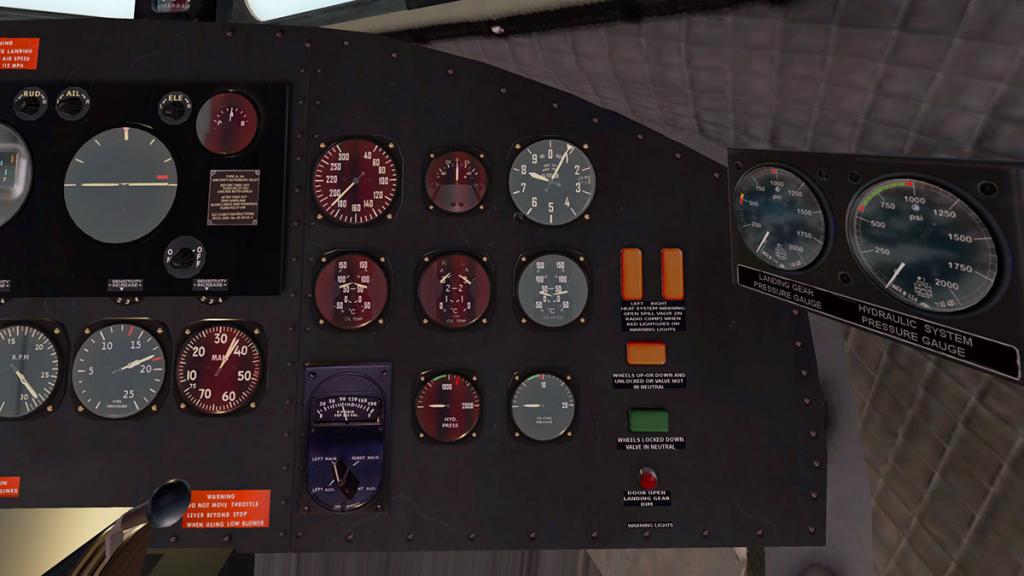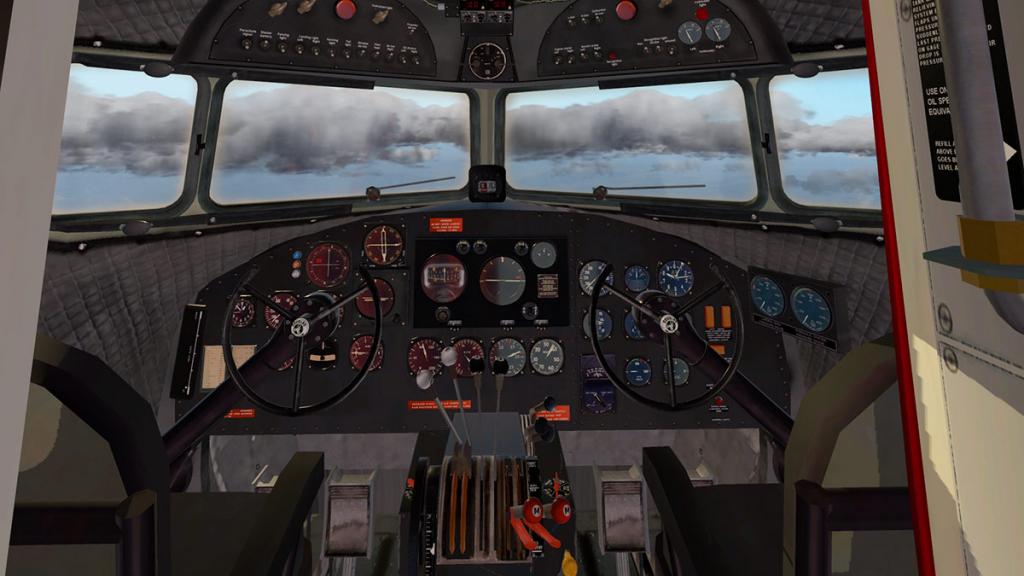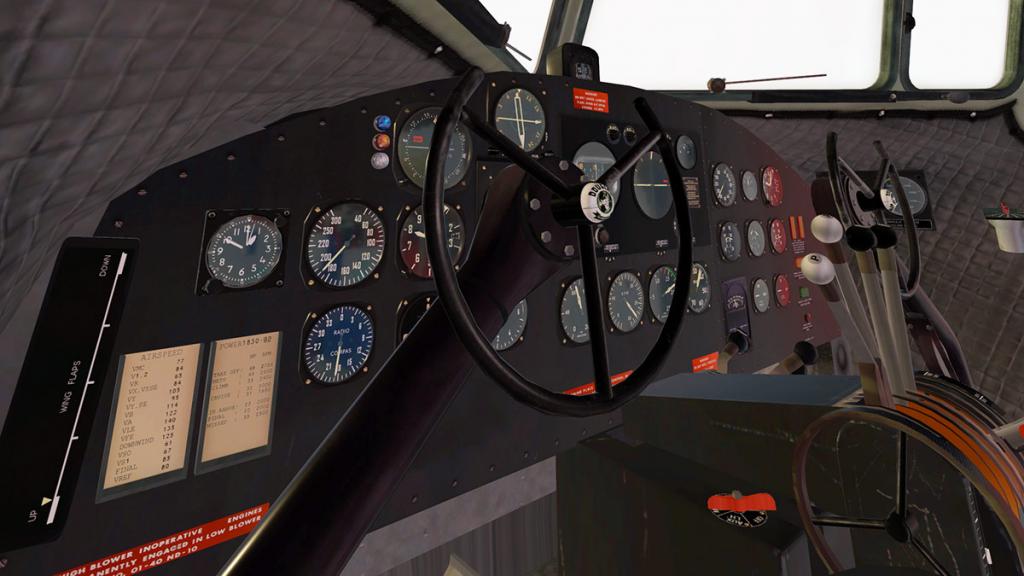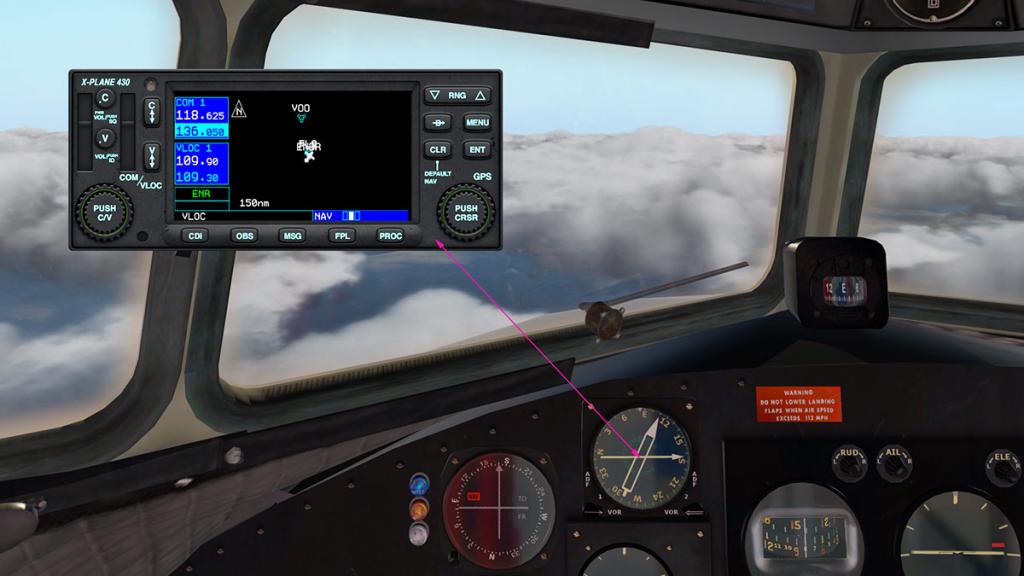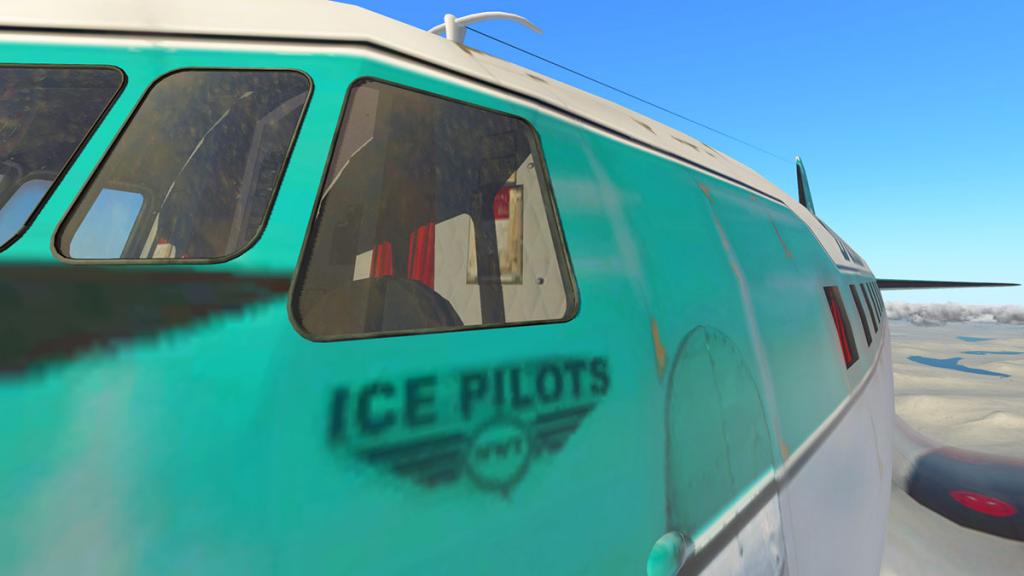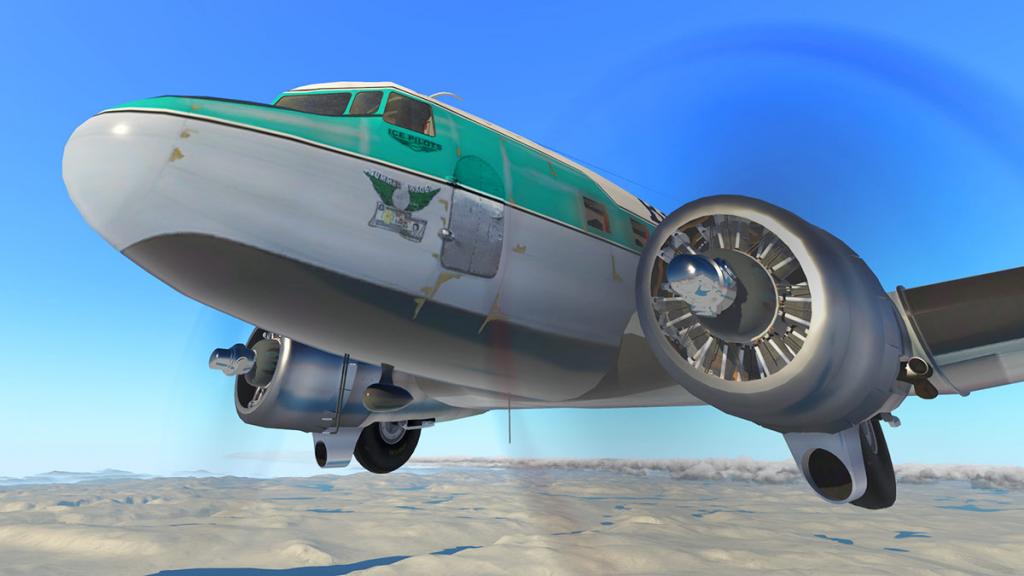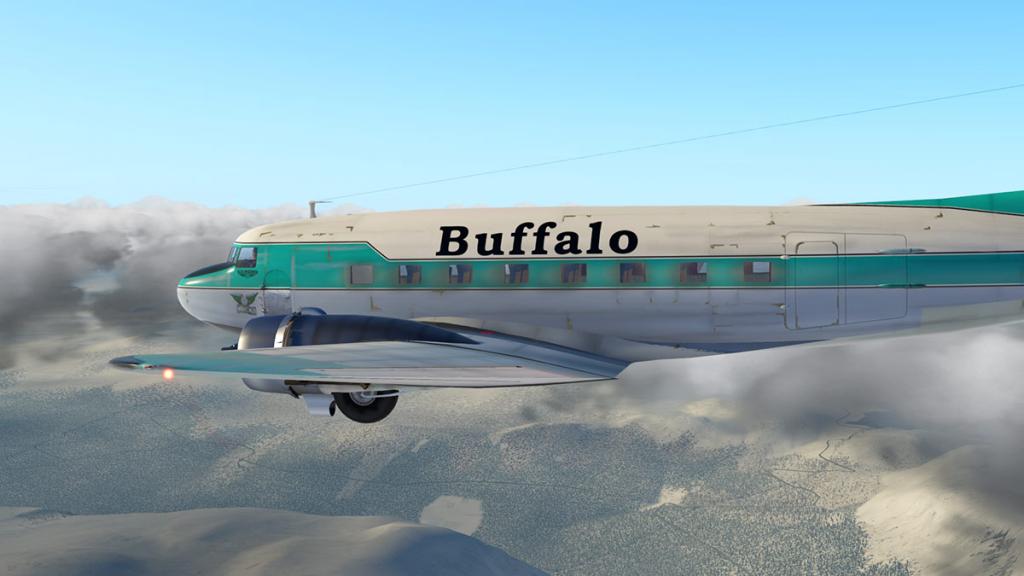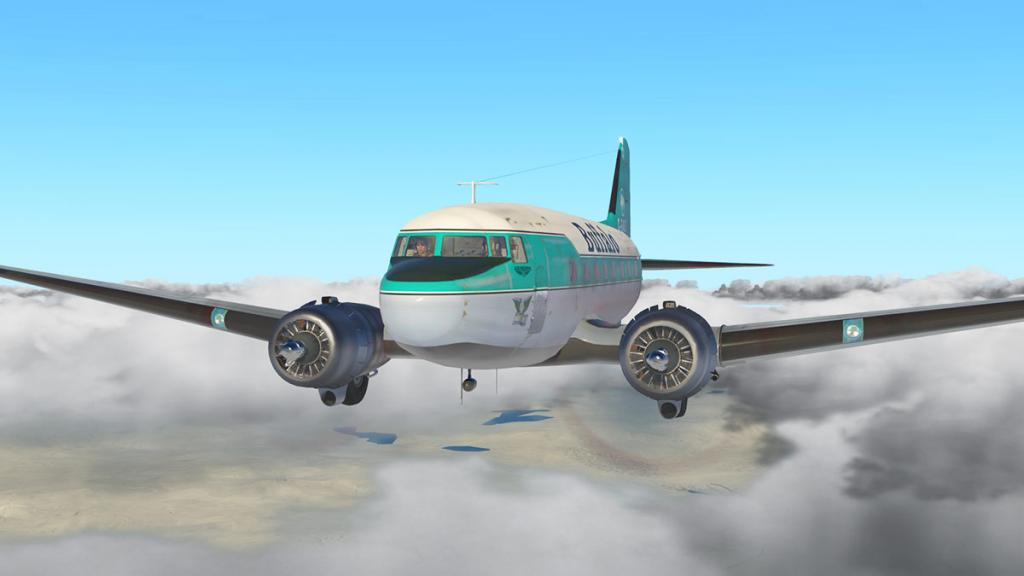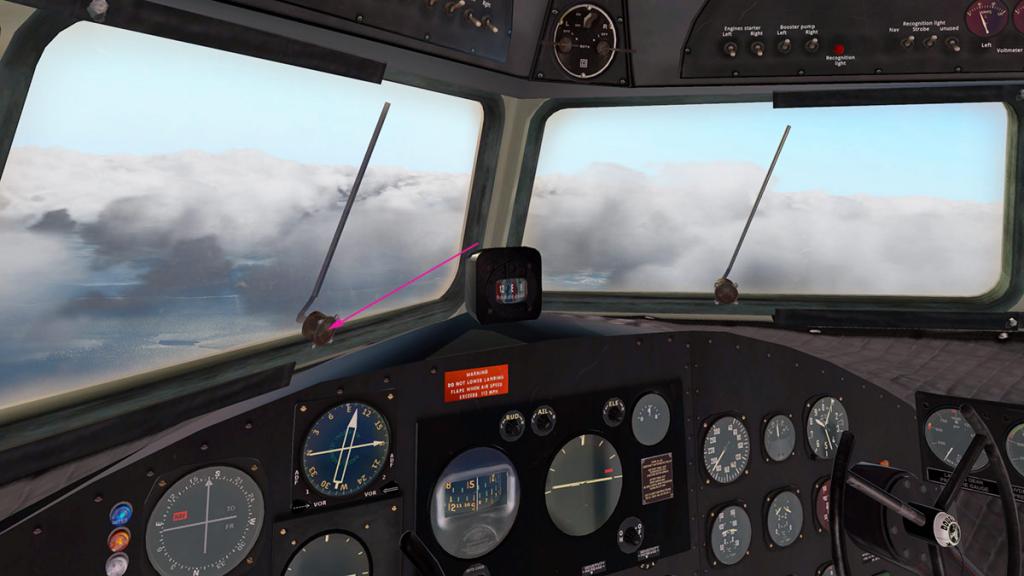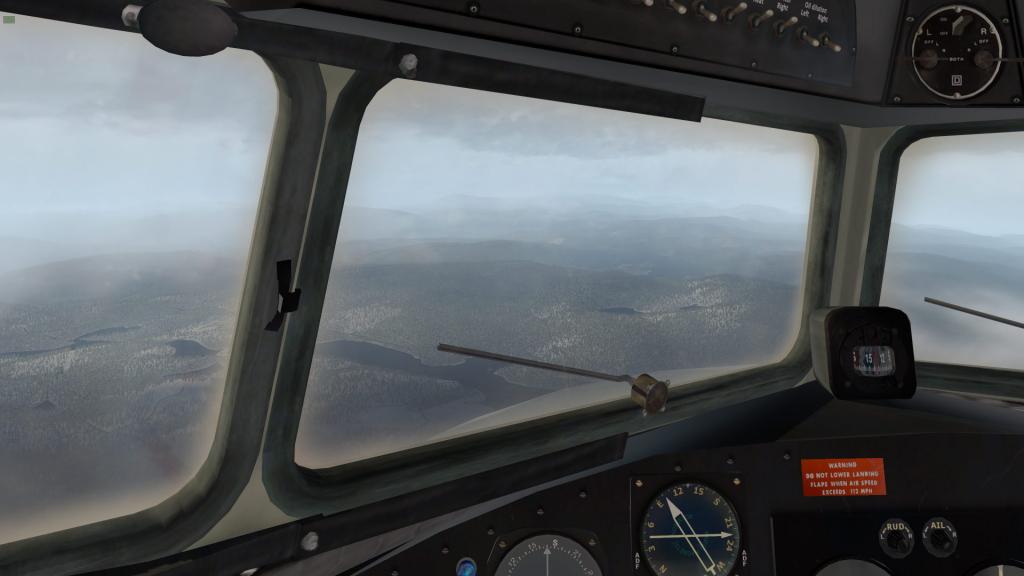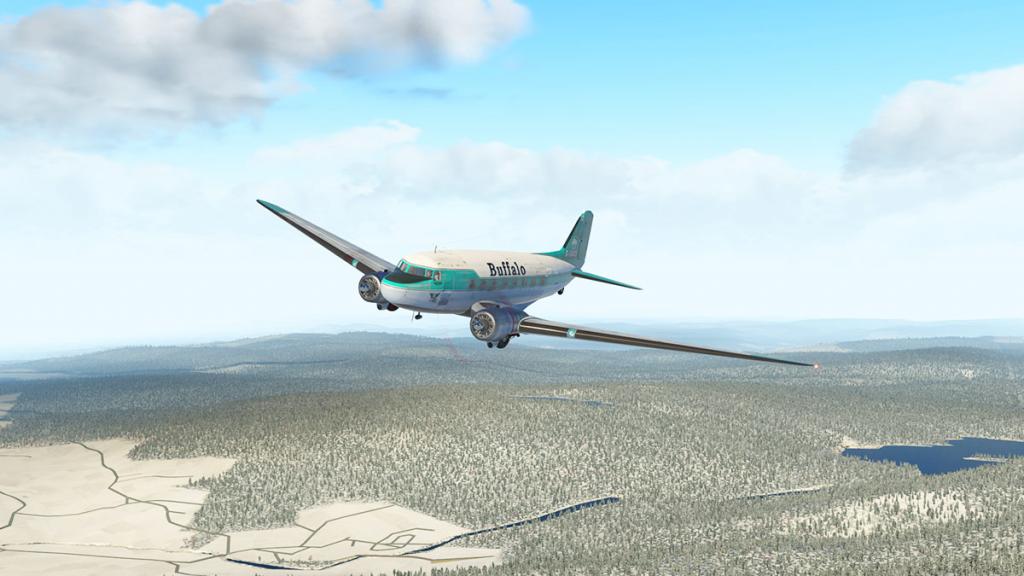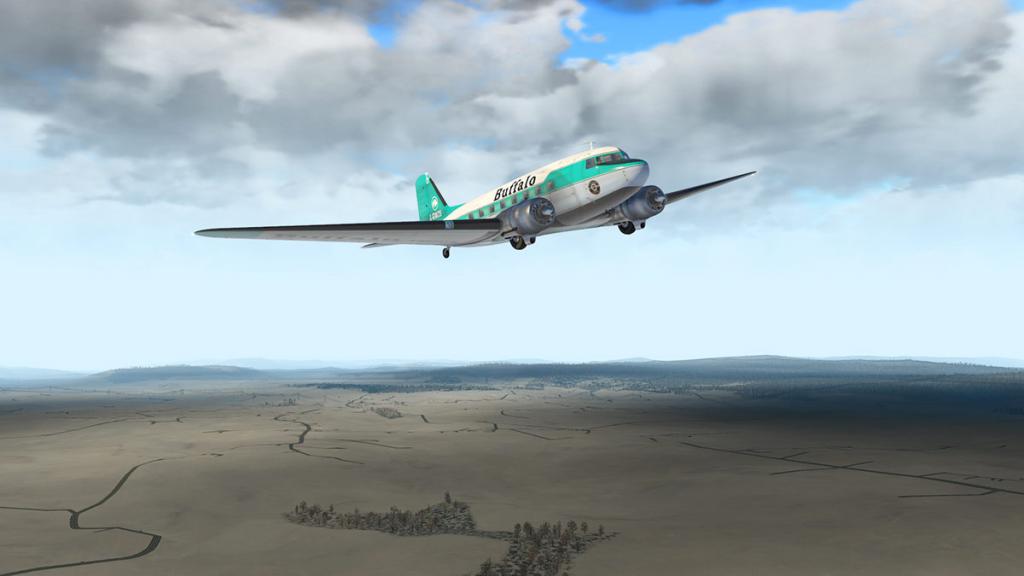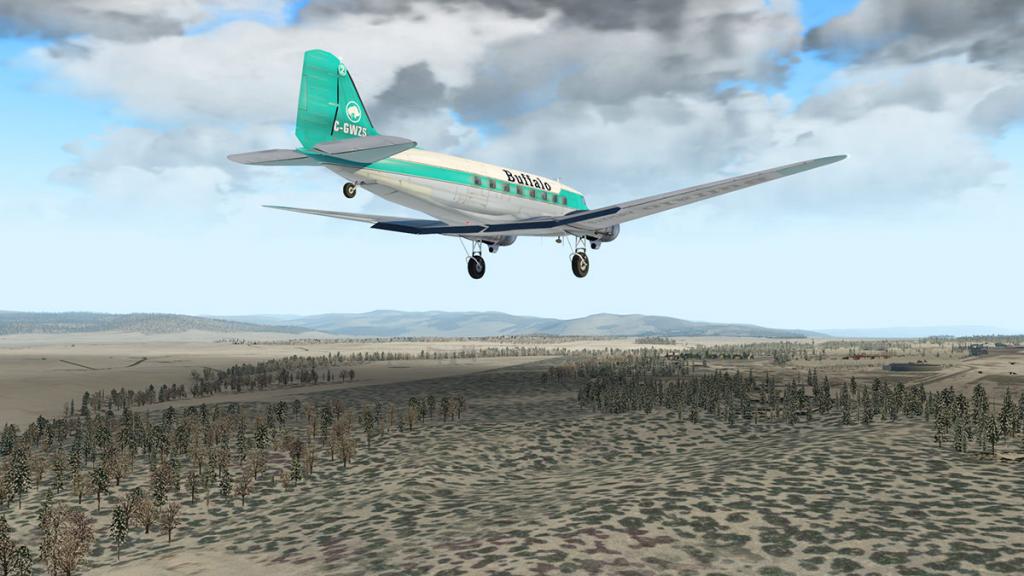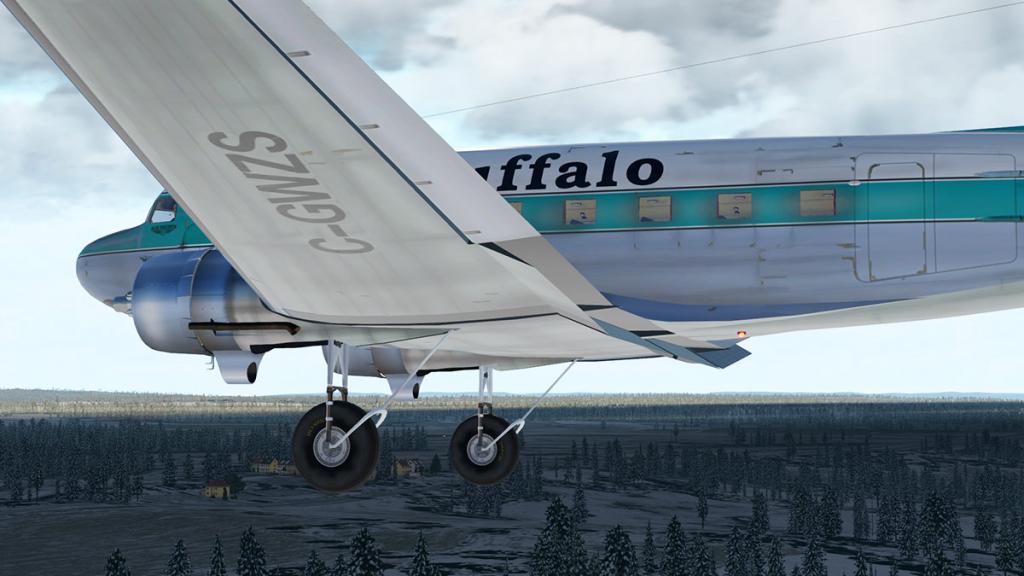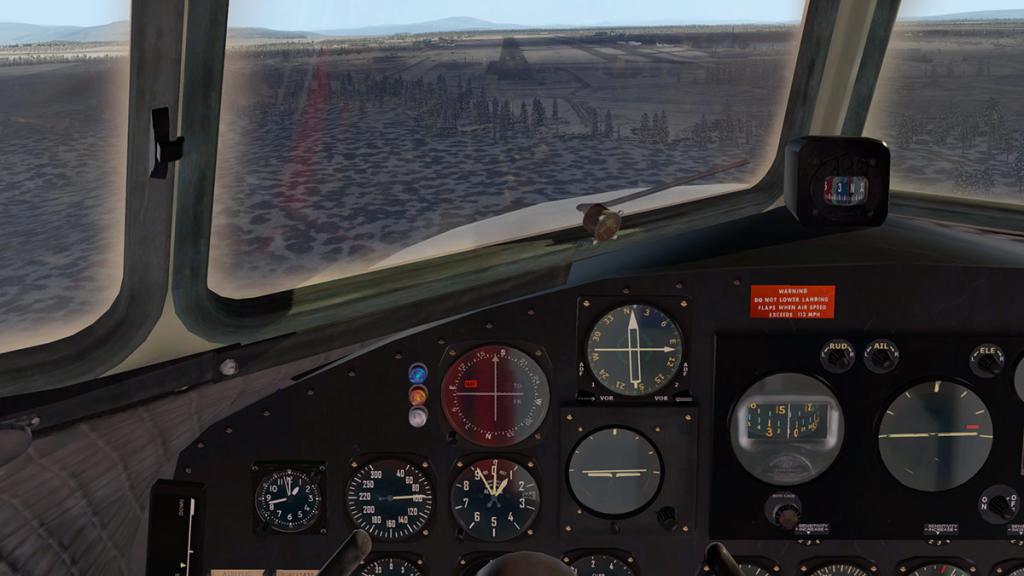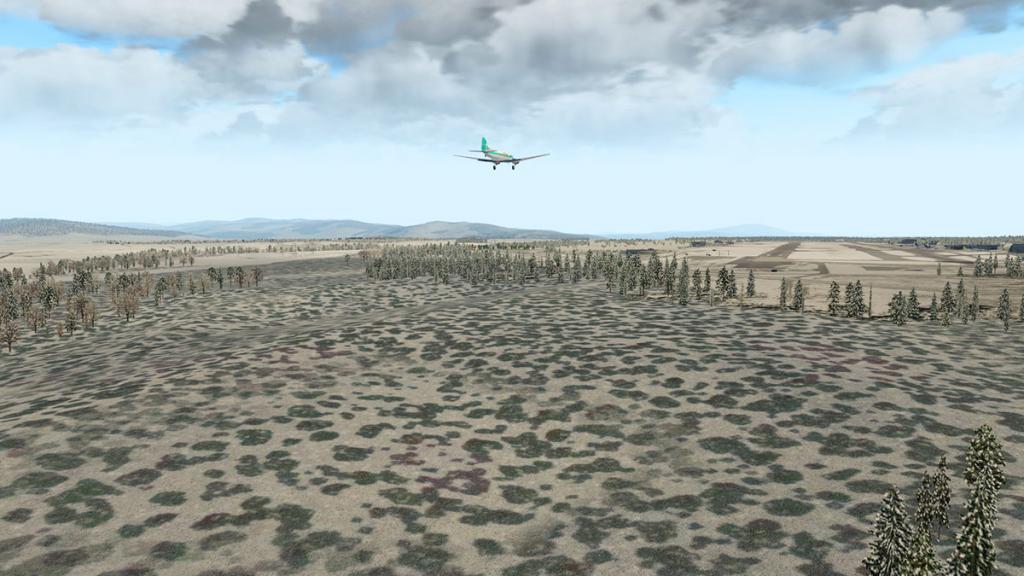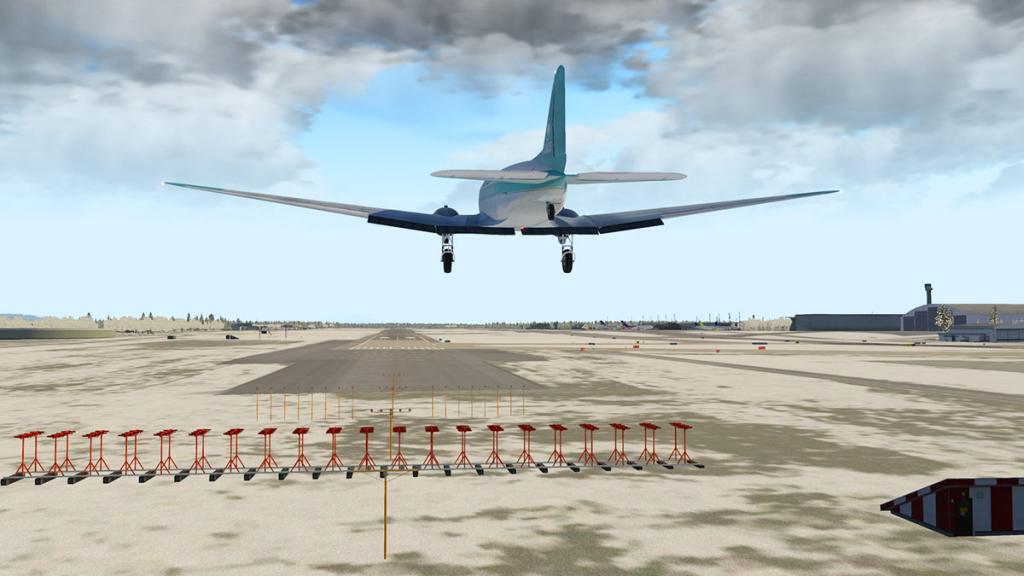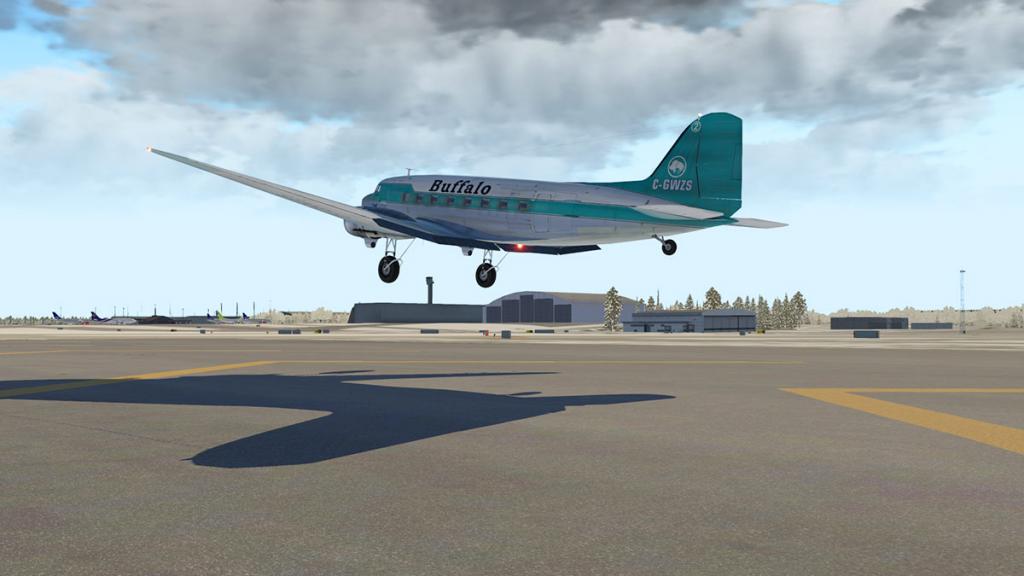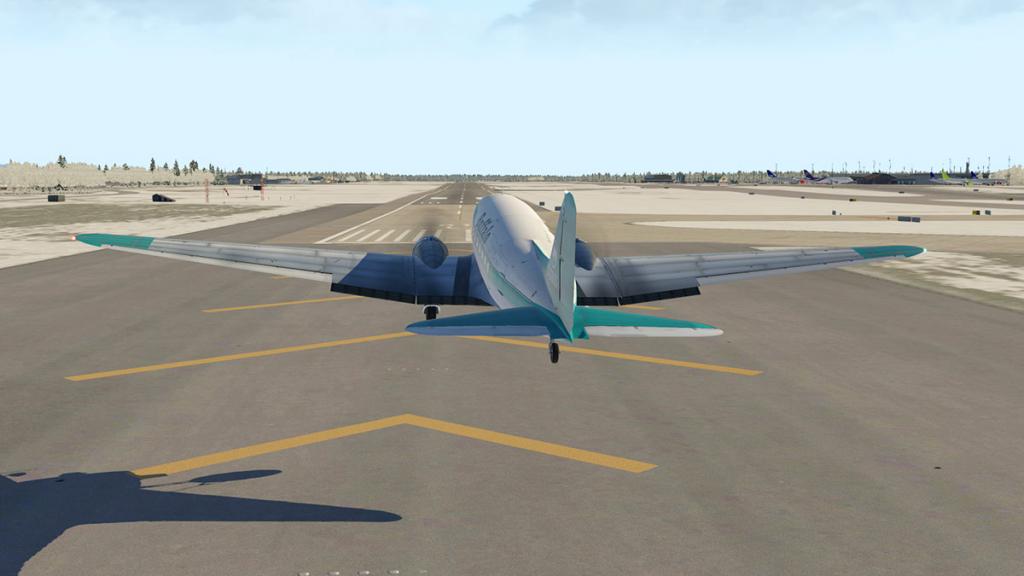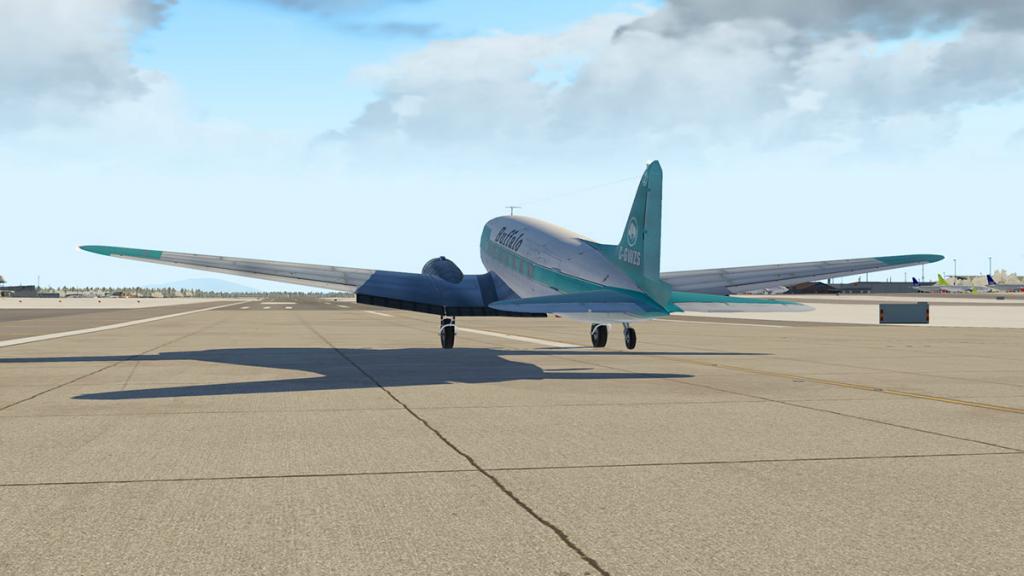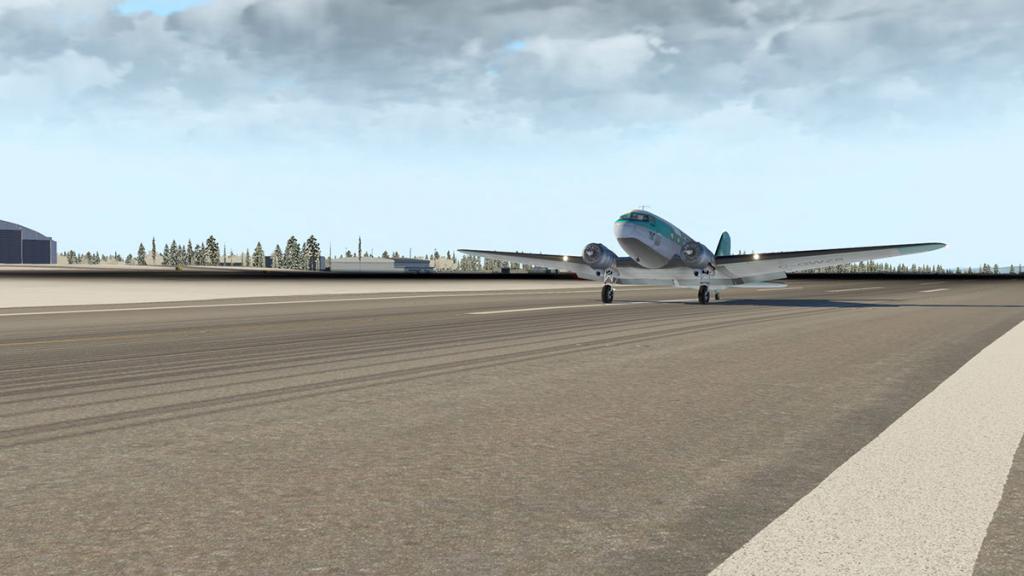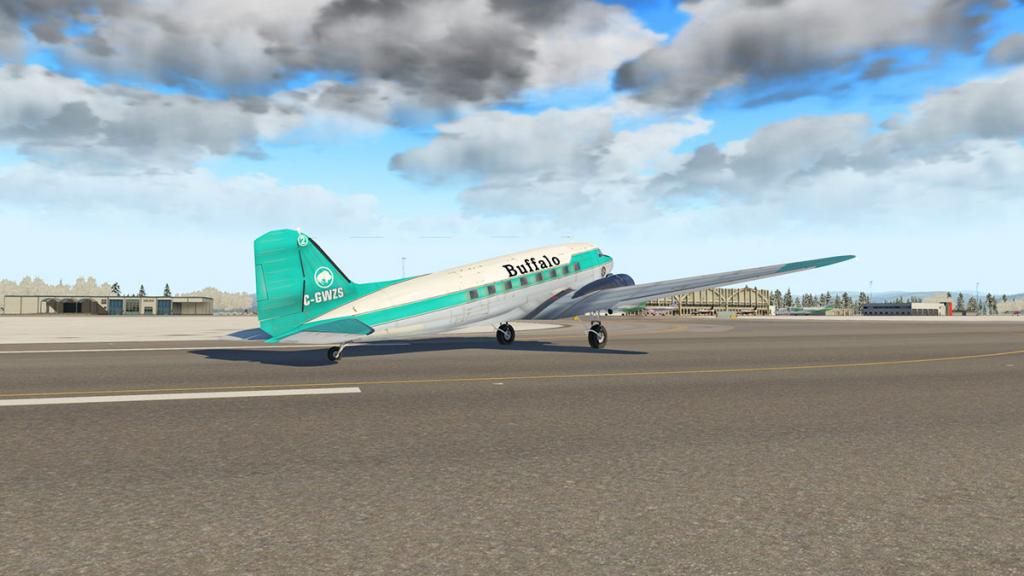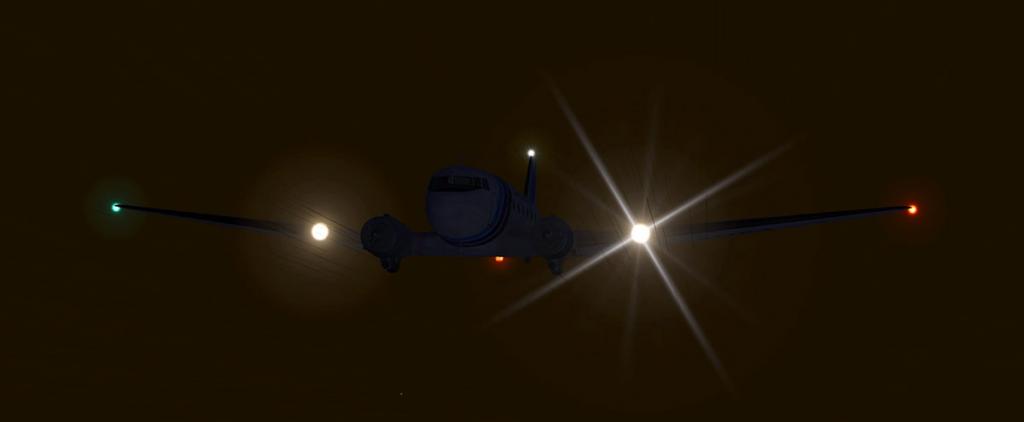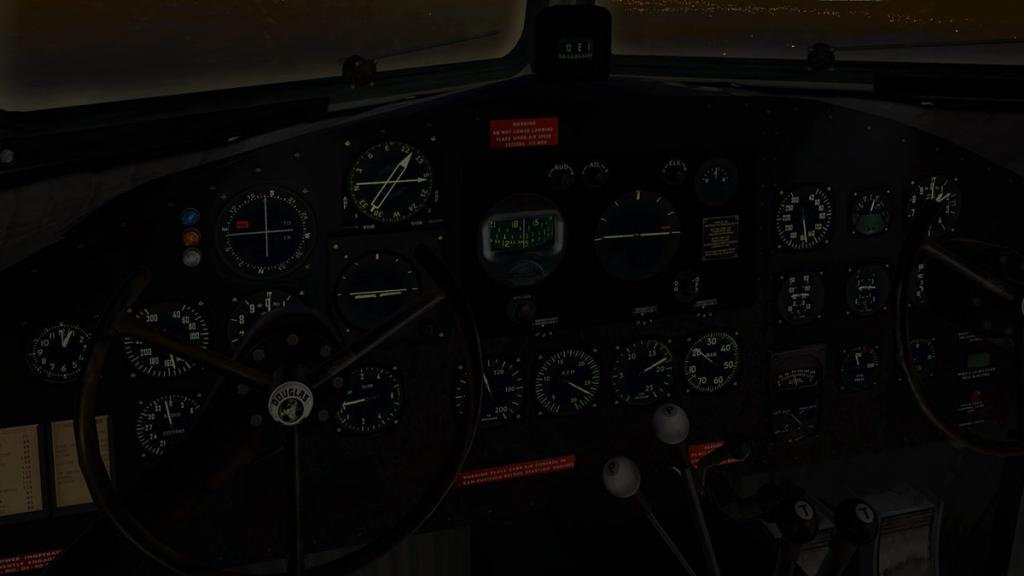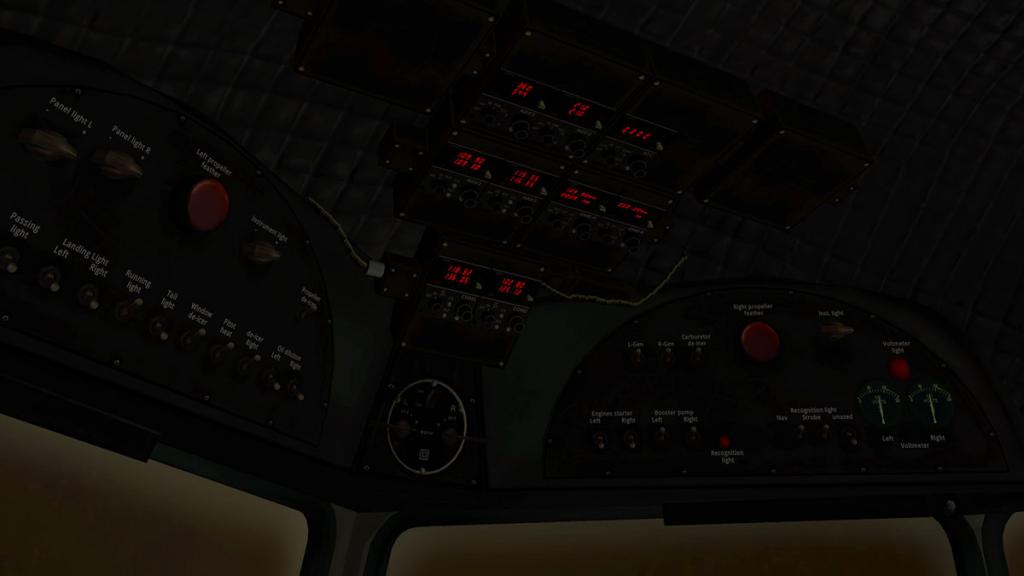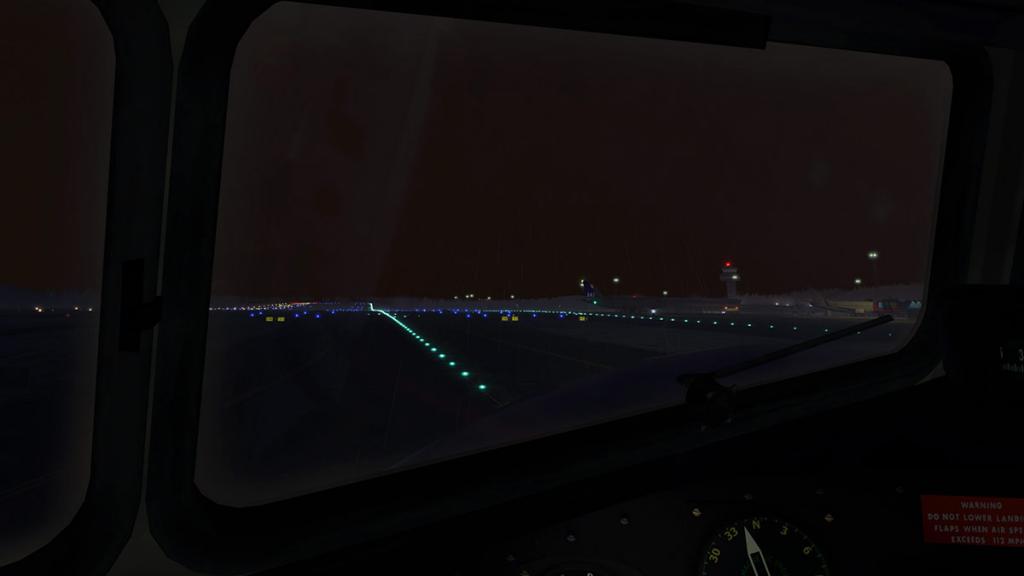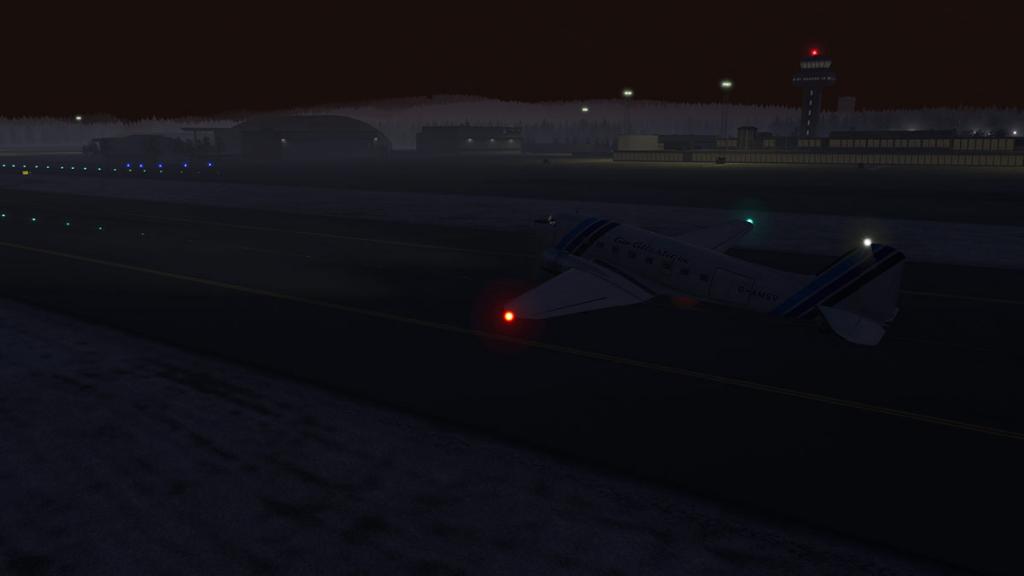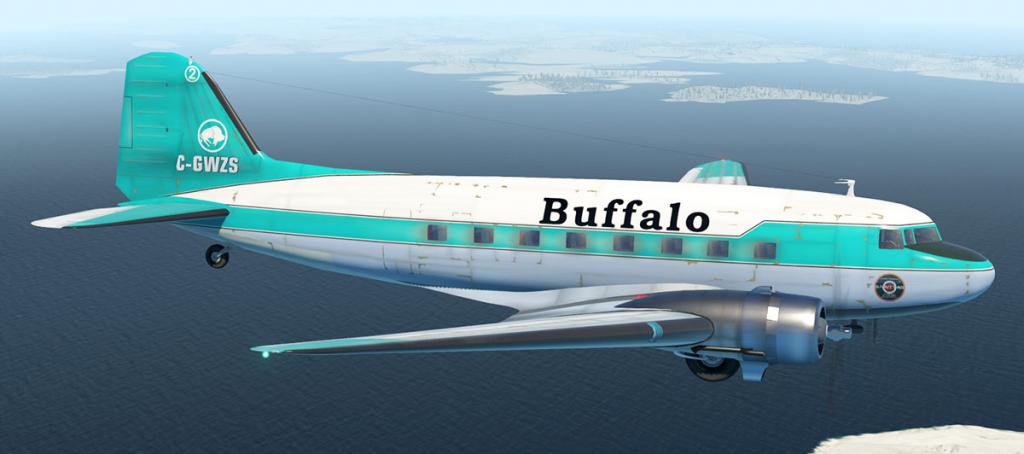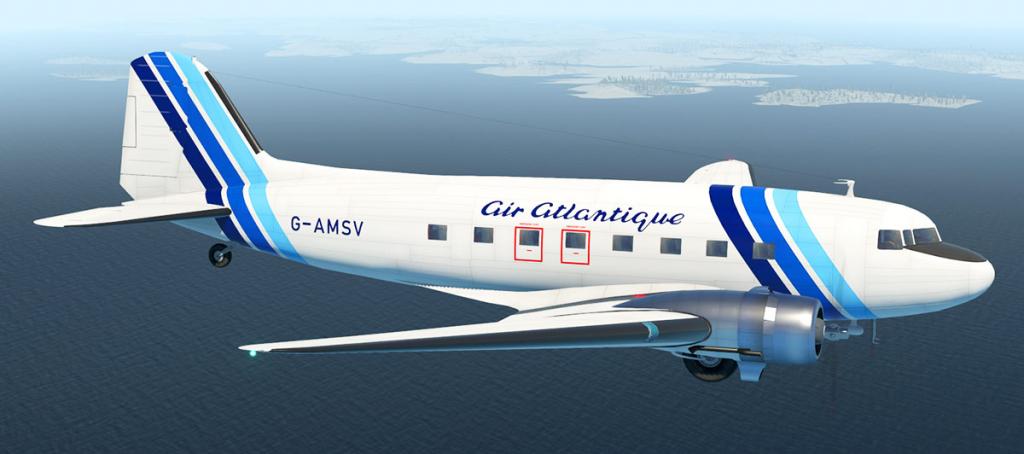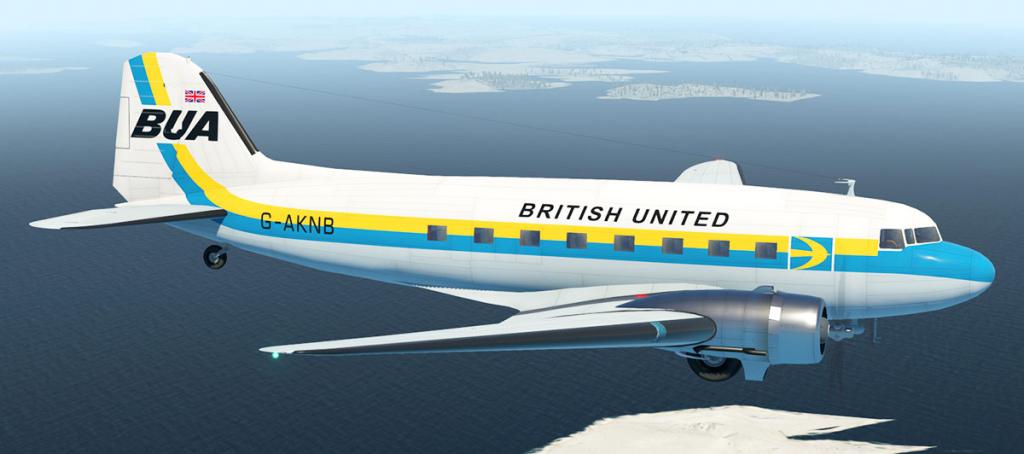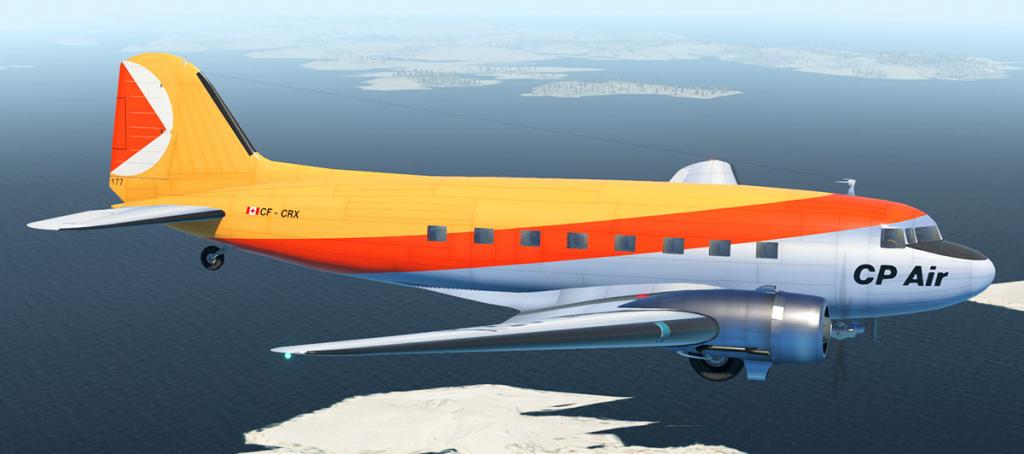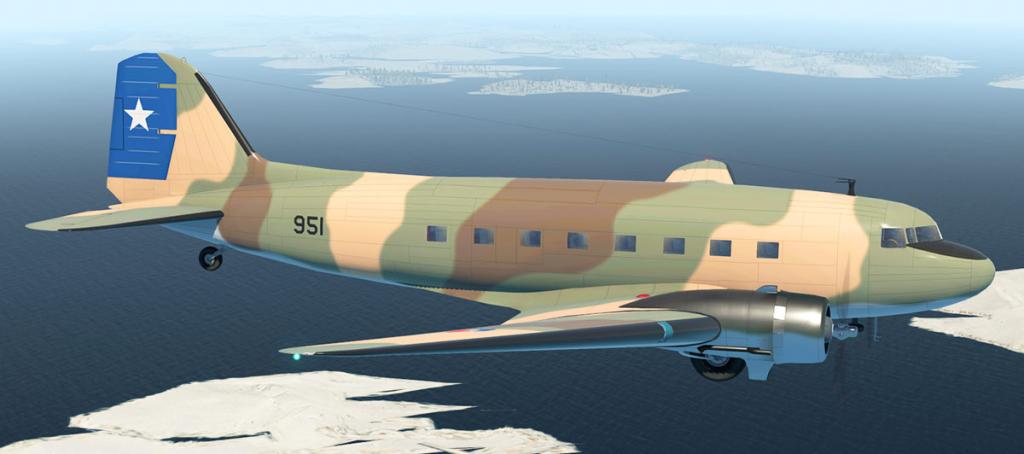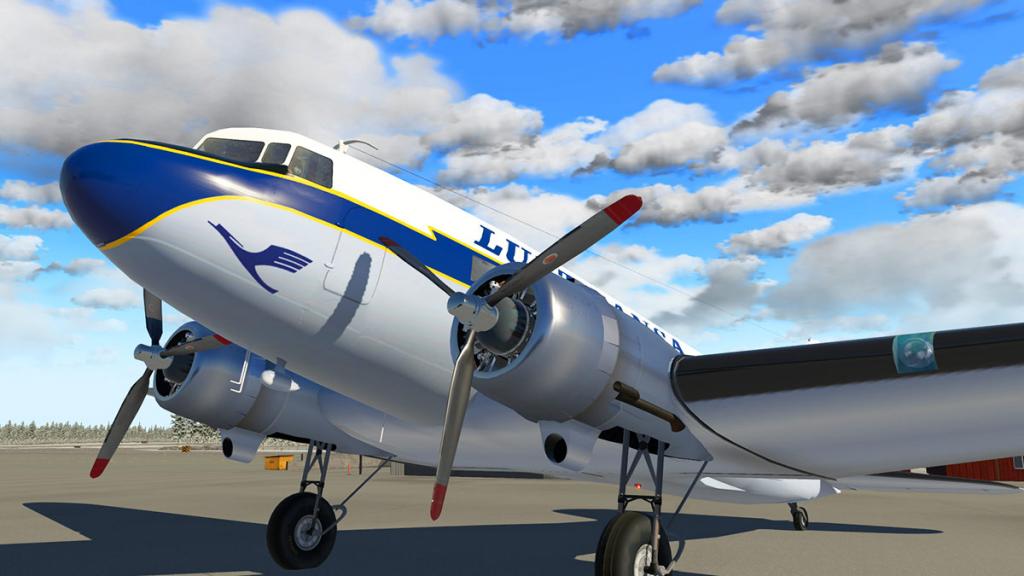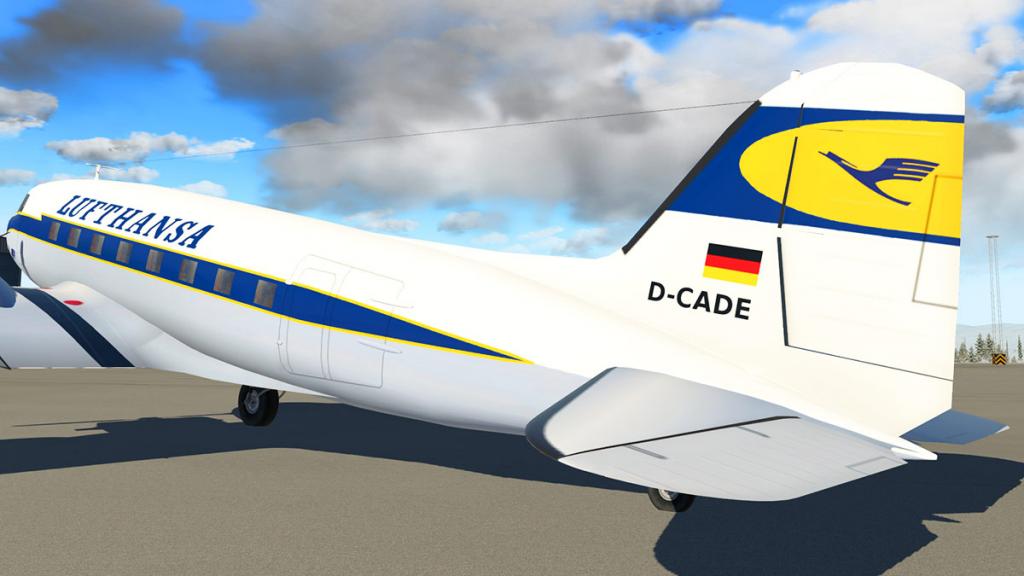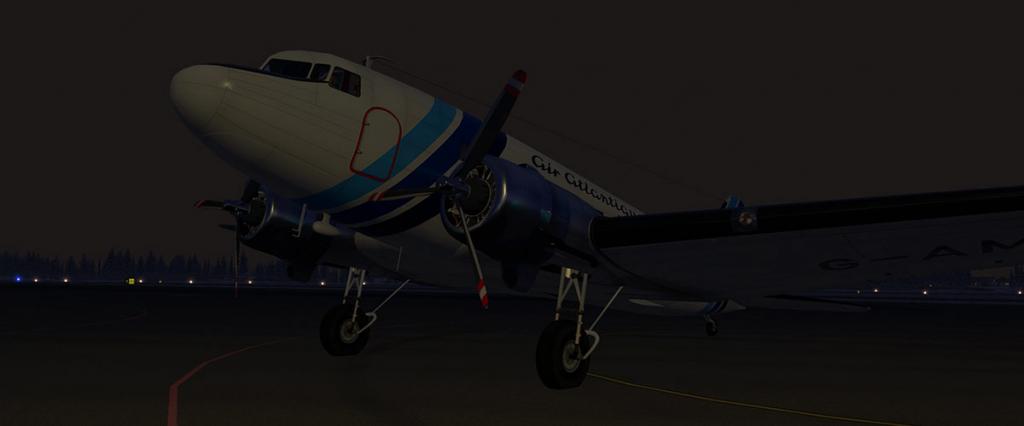Search the Community
Showing results for tags 'vskylabs'.
-
Aircraft Update Review - DC-3/C47 v2.1 by VSkyLabs Flying Lab Project . Only weeks ago, 22nd July 2017 actually I did a full new release review of VSkyLabs Flying Lab Project's DC3/C47. At X-PlaneReviews we do have a lot of new releases and with this year's new X-Plane11 revolution there is a full roll-out of aircraft and scenery that is being updated to the new format as well, so it has all been very busy. In reviews we do the review and unless there is a significant update and then we move on to the next release. I really loved VSkyLabs project of the DC3/C47, and noted so in the review. But there was at the time a few reservations of the current status of the project. It was really, really great, but and then there was that... but. In a few areas there was a feeling that it could have better in its release form, I thought about this for some time as the hardest points in any new release is the objectivity of a reviewer, over harsh and the developer can lose sales, but too lenient and the punter who is putting down the cash will not be impressed... so it is a very fine line. You do as a reviewer have more background evidence and your extensive knowledge to make the right call. The case for the VSkyLabs DC3 was correct for the time as was a cheaper entry price of US$19.95, which was the right price at the time as well. But two things unusually happened with this aircraft. One, I found myself in my spare time flying the DC3 extensively, even getting lost over the North Sea and nearly running out of fuel... I will come back to that one later. Two, was VSkyLabs hammered out updates like chickens pops out eggs. The result was this very quick update to v2.1 and for one of the most already wanted and in demand, loved aircraft in X-Plane this year. VSkyLabs Douglas DC3/C47 v2.1 My very first initial view of the release VSkyLabs DC3 was actually a groan... This is 2017 and the aircraft looked like it was from the X-Plane9 dark ages. Normal mapping creates that raised surfaces or 3d look on the aircraft's surfaces and here there was none. So the very first priority was to fix the aircraft's maps. This was done by Oleg Tronov who has also created an official paint kit for the DC3. The results are well... spectacular! Rivet... Rivet... Rivet, you feel like a beaver creating bodywork going at it full thrust, but just look at all those amazing rivets, panel lines and saw edges... you have gotta love it. Now that is a 2017 X-Plane11 looking DC3. The other poor performance on the release version was the liveries, but that has also changed now big buckets as well and mostly thanks to Arcticpilot and his great work... (Metallic VskyLab's is now the new default livery) The older "Flightgear Liveries" don't work anymore with the new metallic base and mapping, but I have persevered with the lovely Air Atlantique livery as it looks excellent and it is a more modern livery, but sorry I don't have permission to distribute it and it is still a work in progress, but you can have a go on the original if you want to from flightgear. FMOD Sounds Sounds originally included were not actually not that bad, but that has all been swept away with the intergration of the FMOD sound engine, and all round the sounds are now excellent. New 3d directional sounds include: Engines and Props with multiple layers for various rpm and distance from the engines. Engine startup and post startup low rpm sounds. Switches and knobs. Gyro instruments, Booster pumps. Gears, Flaps. Ambiance (wind) and turbulence during normal flight. Ground roll, tire screech. Vocal Annunciation for mixture control (auto rich, auto lean). Vocal Annunciation for tail wheel (locked, unlocked). Vocal Annunciation for autopilot (engaged/disengaged). Overhead Electric fans. Good? no brilliant, it shows with just the addition of 3d sounds on how quickly you can elevate an aircraft to excellent from just the very good. More sounds are promised but a few areas are counteracted by the XPRealistic plugin I am running here (Highly recommended for this aircraft). Cockpit In the cockpit there has been a lot of changes. The basics in the instrument panel though are all the same, but there are a lot of very nice new additions and fixes. The pop up GNS GPS unit has been upgraded to the GNS530 up from the GNS 430 for a bigger screen to use, the popup is still activated by pressing the centre of the VOR pointer dial. The centre mounted magnetic compass has also been mounted on rubber-wires, it does also move around and looks excellent, but the idea is not finished yet as the way the animation works is that the connection ends move as well? But VskyLab's have noted this will be worked on more to get a better result. Added animated fans are a welcome relief from the hot cockpit, they can be a bit distracting when the going gets tough, but a desk mounted fan is certainly advisable if you want the full wind in your face effect. Wipers are now correct in sweeping to the centre and not left-right, and FMOD wiper sounds heighten the effect for more realism. Wipers feel very realistic when battling low visibility on Norway's west coast! Emergency Escape hatch has been added to the cockpit roof, it is noted that in the future it will be functional, if you want to bail out? Speakers have been added into the roof on each side, which is another nice touch. The patterned wall cladding has been updated to a better quality feel as well, looks and feels far more realistic than the original cladding. Other fine tuning notes in the cockpit are the Seat, Yokes and Pedals have been fine-tune to fix minor alignment issues, added in a co-pilot comm box for right seat operations (I bet you didn't notice it was missing?) and the added in two radio-microphones. Cabin Another area that was average in the release aircraft was the silly stilted thin cabin passenger seats. Again there are now more detailed and thankfully wider seats for the passengers, I still think they could be a little wider, but they are certainly a big if huge step forward. You can expect a few nice variations of the cabin as already ArcticPilot has put out a very nice Icelandair version for his Icelandair livery. I myself has adjusted the cabin for my Air Atlantique livery, with a blue seat cover from ArcticPilots version (Thanks), instead of the odd coloured Buffalo Airways coverings. VskyLab's has already noted there is more to come yet in the cabin in the next version. The doors however still don't open, but the fuselage has been cut, ready so expect them sometime in the future. A full and more modern FMS is promised as well, but I really love the Sperry Type A-3A autopilot already installed so I am personally not too fussed. Flying the updated v2.1 DC3/C47 I have become a little addicted to this aircraft, as you should with any great aircraft in X-Plane. In my mind if you are always going to say "I'll give give that aircraft a go" then there is something special going on and the return of the experience from the simulation then fill's in the rest. So many things contribute to a great simulation, but aircraft feedback and the challenge of flying the machine is part of the fulfilment factor. The original release did feel a little unfinished, but then this is an ongoing project. This version is certainly more like what the release version should have been, and it feels far, far more complete. One area to note is the fuel tanks. On the original you emptied the main tanks and then the Aux would then empty, but not by switching them over? In a quirk in X-Plane you can't do this so you drain the main and then automatically switch to the backup tanks. This caught me out while flying from ENBR - Bergen to EGCC - Manchester as I almost emptied the main tanks but just thought I could switch over to the Aux as you do... My position was that well over the North Sea I was suddenly running out of fuel? Switching them over ran an engine dry? so I had to divert to EFPH - Edinburgh on what I thought was the last drips of fuel, but landed still with my Aux tanks brimming full. The tanks have been changed in v2.1 to drain ALL tanks at the same time, which personally I still wish we could have done a real tank to tank switch, but there you go... Manchester thankfully will certainly be in range now. Tank switches are on the top of the pedestal and the tank fuel gauge can be switched on the panel lower co-pilot's side, it is a shame you can't use them. The old bird is tricky to fly, first this old badger is a taildragger, but the aircraft is heavy as well. Plenty of power just gets it moving and then it is going too fast once you are, so you have to find that throttle balance, instruments are old, so they can be hard to interpret sometimes and at critical times in poor weather you can lose where you are in the balance. But poor weather condition brings the aircraft alive as well, so that is the challenge and why the DC3 is so renowned in getting in there and getting out again into areas that normal aircraft just can't fly around. The aircraft's wing lights in v2.1 have been adjusted and are far brighter now and more workable, they were pretty feeble in the original version. Approach speeds are tricky, you need a little speed, but flap use is restricted to below 115mph, so you are losing, losing speed all the time in trying to get the speed lower to get that flap lift of the use of the lower speed of 80mph. You work it out, but you work for it as well... who said flying was easy? Crosswinds cause you havoc, if you are not using a lot of full rudder then you will not fly a DC3 correctly, trimming the tail straight before dropping down on to the tail-wheel is an art form you have to master. So flying this bird is going to test your skills, but that is the idea right, fly hard and get the job done. You can sit for hours just looking at it... Summary The obvious question comes up here in that was this DC3/C47 by VskyLabs released before it should have been. It is a fair point and in a way the answer is yes as my original review reflected, an ongoing project is still an an ongoing project, but this is 2017 and the entry standard into X-Plane lately is now high. Certainly the special early release price of US$19.95 is going to have a lot of the early punters smiling with this significant update. The aircraft was saved overall because the earlier basics are so good, but now you are still getting a real absolute bargain even at the new US$24.95 price so five dollars here and there is only a decent cup of coffee. But that $5 is getting you a far, far better and more rounded aircraft. The changes here with that excellent normal mapping, far better quality liveries and better cabin seating are well worth the extra admission price alone.... and we are not finished yet here either, as VskyLabs has a list as long as your arm in coming features and detailing and the announced Freight/Cargo version. Another significant point is the response time in getting the aircraft to v2.1. The sign of a good if great developer is to listen to feedback and delivers, and here VskyLabs certainly delivered and quickly and you can't fault that, you certainly can't expect the rollout and changes to keep coming at this pace either because that is not realistic, but you can be confident that this DC3/C47 is already going to be one of the really must haves in X-Plane, it is an exciting project that continues... but for now with this excellent v2.1 update of the aircraft is already right now a great aircraft to totally enjoy in flying one of the really great classic airlines of aviation history.... a must have! _____________________________________________________________________________________ The DC-3/C47 by VSkyLabs Flying Lab Project is NOW available! from the X-Plane.Org Store here : VSKYLABS DC-3/C-47 Flying Lab Project Your Price: $24.95 Features: Two packages included: X-Plane 11 + X-Plane 10.51 Highly Realistic Flight Performance DC-3/C-47 Simulation: Highly accurate performance and handling simulation of the DC-3/C-47. Aircraft performance and handling qualities were designed and tested in a "Research level" approach and went through a validation process of more than 200 hours of flight testing and evaluation, made by real world C-47 pilot and aircraft performance expert. This model is stretching X-Plane to its limits in terms of delivering the authentic flying characteristics of the DC-3/C-47 Fully equipped with Radio and Navigation aids: along with a full set of traditional/old school navigation and autopilot systems, it is also equipped with a pop-up G430 Workhorse for practicing DC-3/C-47 pilot skills: Experience authentic flight performance and handling practices (takeoff, landing, single engine operations, flight planning, long range flights and old school navigation). It is a perfect platform to recreate and fly historic routes using authentic performance simulation Unique look and feel: The VSKYLABS DC-3/C-47 is a mixture of a simplified yet very engaging design and “feel” of the DC-3/C-47 Systems - easy to operate by beginners: All relevant systems are simulated but with the focus on getting the “Flying Lab” airborne without the need to go through a long “ground school” FPS friendly Designed to utilize the “out of the box” features of X-Plane Additional Features: Highly responsive support system/forum. The VSKYLABS DC-3/C-47 Flying Lab is a project under constant development. All updates are free. Requirements Minimum System Specifications: CPU: Intel Core i3, i5, or i7 CPU with 2 or more cores, or AMD equivalent. Memory: 8 GB RAM Video Card: a DirectX 11-capable video card from NVIDIA, AMD or Intel with at least 1 GB VRAM Recommended Hardware Requirements: CPU: Intel Core i5 6600K at 3.5 ghz or faster Memory: 16-24 GB RAM or more Video Card: a DirectX 12-capable video card from NVIDIA, AMD or Intel with at least 4 GB VRAM (GeForce GTX 1070 or better or similar from AMD). Current version: v001.1 (Last updated July 24th 2017) Installation and documents: Download for the DC-3/C47 by VSkyLabs Flying Lab Project is 180.40mg and the unzipped file is deposited in the "Heavy Metal" X-Plane folder with two version for both X-Plane10 and X-Plane11 V10.51 VSL DC-3 C-47 Flying Lab v002.1 (253.40mb) V11 VSL DC-3 C-47 Flying Lab v002.1 (253.40mb) _____________________________________________________________________________________ Update Review by Stephen Dutton 5th September 2017 Copyright©2017: X-PlaneReviews (Disclaimer. All images and text in this review are the work and property of X-PlaneReviews, no sharing or copy of the content is allowed without consent from the author as per copyright conditions) Review System Specifications: Computer System: Windows - Intel Core i7 6700K CPU 4.00GHz / 64bit - 16 Gb single 1067 Mhz DDR4 2133 - GeForce GTX 980/SSE2 - Samsung Evo 512gb SSD Software: - Windows 10 - X-Plane 11.02 Addons: Saitek x52 Pro system Joystick and Throttle : Sound - Bose Soundlink Mini Plugins: Environment Engine by xEnviro US$69.90 : WorldTraffic 2.0 Plugin - US$29.95 : XPRealistic Pro v1.0.9 effects US$19.95 Scenery or Aircraft - ENGM - Oslo Gardermoen by Aerosoft (X-Plane.OrgStore) US$24.95 - ENBR - Bergen Airport by Aerosoft (X-Plane.OrgStore) US$21.59
-
Aircraft Review - DC-3/C47 by VSkyLabs Flying Lab Project What marks the ultimate in greatness. In most cases it is something or someone that has had an significant impact and has created enough of a shift in the way the whole world works or lives. In the case of aviation the impact it was total. From the destruction of distance, time and even the cost of moving around the planet can not be challenged in any shape or form. But like most brilliant inventions the changes that we take for granted today are usually in steps, and some steps are small but important, but some are huge and changes almost everything in the way we used movement and in the way you traveled before that introduction of absolute change. In modern thinking you could say the same about the before and after the iPhone and the effects on the way we communicate. We are today too far removed from the changes of aviation in its formation years between the World Wars, but the effects from that era are all around us every time we go to an airport and fly. In the area of greatness then that title has been lavished onto the DC-3 or Douglas Commercial 3. The aircraft was one of the greatest machines to have ever been built, but the reality could have been different. In truth only 607 DC-3's were ever built and the aircraft was already in line to be superseded except for the insertion of the Second World War. The military need aircraft, in fact thousands of them and they needed to be reliable, fast (in 2WW terms) and mostly cheap and quick to produce. So the DC-3 became the C47 Skytrain and over the course of the war they manufactured 16,000 of these Goony Birds. War time surplus demands then put a huge majority of these cheap flying aircraft on the market and the rest as they say is history. Even in innovation it was the DC-2 that was the innovation aircraft in being an all metal aircraft with a tapered wing, retractable landing gear, and two 690 hp (515 kW) Wright radial engines driving variable-pitch propellers. It seated 12 passengers. The DC-1 was in reality just a development prototype aircraft and only one was actually built. The DC-3 was just an upgraded version of the DC-2 with 21 passenger seats, 1,100-horsepower (820 kW) Wright R-1820 Cyclone engines but also filled in that sweet niche point of making and in creating RPT airline routes (now known as regional) profitable. So you have cheap to buy, fast at 200 knts (370 km/h (230 mph) at 8,500 ft (2,590 m)) with a cruise speed of 180 knts (333 km/h (207 mph)), cheap to run and bingo you had an airline. Beyond just the obvious the DC-3's claim to ultimate greatness was simply reliability. These strong tough wartime birds would simply keep on flying no matter what you threw at them, pilots loved them and the rest is history. Incredibly even after eighty years since they first flew there are operators with 2,000 DC-3s still in revenue service and as many converted as cargo aircraft. But most DC-3's today are now either in restoration or flying around at air shows. The oldest current DC-3 still flying is the original American Airlines Flagship Detroit (c/n 1920, the 43rd aircraft off the Santa Monica production line and delivered on March 2, 1937), which can still be seen at airshows around the United States and is owned and operated by the nonprofit Flagship Detroit Foundation. VSkyLabs Douglas DC-3 "Flying Lab Project" Vskylabs have been around for a few years. There are not in a general sense full developers, but more of a an older style X-Plane community that loves aircraft in all their shapes and forms. So their output is very varied, mostly cheap but interesting aircraft like the Tecnam P2006T Project, Phoenix S-LSA Project, Hang Glider Project and the Autogyro Project and many more. But note the word "Project" behind every aircraft. As noted most developers develop aircraft for X-Plane for income, a few do it for the love of aircraft per-se. But Vskylabs create projects of aircraft that you can invest in. They are built to a price and are not developed to the high end degrees of detailing and systems, yes Vskylabs do create interesting aircraft but not to the so called "Study" depth of simulation. This background is important to note when reading the review below, the aircraft is an ongoing project and there is more to come as it is developed out more, but it is important to note that the aircraft is certainly developed as to a current fine flying state, and so most of the on going development is more in the detailing and filling in areas than the main systems and flying performance, and it is priced accordingly in that category. The aircraft comes in the now famous "Buffalo Airways" livery from the "Ice Pilots NWT" TV series run by Joe McBryan (aka "Buffalo Joe"). External modeling is very good, but does not have extreme detailing that comes with say a Carenado. One reason is that the liveries are not created in house but are used from "Flightgear Liveries" and are flightsim textures and not X-Plane art. They are 4k or 4096px x 4096px in size but the quality is noticeable. More liveries are available, but you will have to adjust them yourself to fit, in saying that the effort is worth it as they can look actually quite good in X-Plane11 considering their heritage, and I show a few converted liveries at the end of this review. They are freeware Flight Gear DC-3 liveries and they are under a GPL licence, which means you can adjust them but you have to acknowledge the source. There is also paintkit also available, but it will be interesting to see if any of our great artists can up the game for this DC-3, in fact one for Lufthansa has already been released. The Buffalo livery has been more extensively modified by Vskylabs and is now part of the project with permission from flightgear But there is no doubt this bird looks great, certainly in the great light of X-Plane11. X-Plane10 is also available as well but you will not get those great lighting reflections you see here. You don't get a load of intimate riveting and panel detail, there are some really very nice detailing work where required. The engine cowling and the internal detailing of the Wright R-1820 Cyclone radial engines looks magnificent, but the highlight here is the lovely chrome prop spinner. The undercarriage is also well detailed, I would have really expected a bit more grease and wear and tear, but otherwise the struts look good. The retraction animation is very good as well as the gear goes up slowly into its bay, or extracts easily down for landing. There are no menus or ground elements with this DC-3, and the doors don't open either, which would have been a great feature and certainly in it's current cargo role. But the old bird does look great on the ramp, it is a DC-3 and DC-3's are a very unique aircraft. Cockpit and Cabin Internally the Vskylabs DC-3 is quite good. The textures are in places a little average in resolution and so slightly blurred, but otherwise it is well done. This aircraft is from the 1930's in technology, and so panels with instruments mounted on them is par of the course. It is all straight forward in that there is no detailed wear and tear or worn levers and yokes, which would have added in a bit more period authenticity, but it is well done and you feel the age of the aircraft from the flying position and in the way you access the controls. A highlight is the aircraft's glass. The windows are aged worn and feel great when looking through them in an authentic way, a bit of poor weather highlight's their old faded transparency... I like them a lot. In the cabin is is pretty much in the same vein with average textures and seats that look too small, certainly in the width. For all the ages then aircraft back then had a lot of seating width within reason, more like the luxury trains of the same era, and nothing like the tight pitch of today. The DC-3 could be four seats abreast, so a three abreast like here would give you a lot space to play with, remember there was no aisle carts either back then to bang up and down the aisle between the seats. Again the faded windows are great as are the fancy red curtains, there was no overhead lockers then either but instead shelving for pillows and hand baggage. Instrument Panel You can see why these aircraft were so highly regarded as their instrumentation is very good even by modern standards. Not in the glass cockpit sort of fit-out, but any good GA is not that dissimilar to the familiar layout viewed here. You can click on the base of the pilot's yoke to make both of them disappear, which is a great feature as they do hide the rate of turn instrument and even a little bit of the rate of climb instrument as well. It is a slightly odd feeling of finding the right perspective of looking out of the high windows and wanting all of the instruments in view as you can't have both. None of the standard six can be in view unless you change your perspective quite significantly as they are positioned well down the panel, and then in perspective they look odd in that fishbowl look. So viewing up and down will take a bit of practise in the way you fly the aircraft and setting up for landings via the instruments does mean a limited view out of the windows, so you can only have one view or the other. Instruments are highly reflective as well. Maybe too reflective in some conditions, but I would far rather have the feature than not. All the instrument are huge, large and easy to read... no squinting in here to read anything. Standard Six instruments are low set for the flying pilot but with a different set of instruments set high for the Co-Pilot. On the left is the Airspeed Indicator, Attitude Indicator and the Artificial Horizon on the top row and the Radial compass (heading), Turn Coordinator and Vertical Speed Indicators set out directly below. Left of the six pack is a clock and top of the panel center is an Omni Bearing Selector, or OBS and to the right a VOR 1&2/ADF 1&2 pointer. On the panel's far left is your flap position indicator, it is basic but easy to see. For the co-pilot there is only the Airspeed Indicator and Altitude Indicator with the free air temperature gauge between them. Second row has the (both engines) Oil temperatures, Cylinder temperatures and Carburettor Temperatures. Lower row has fuel gauge (switchable), hydraulic Pressure and De-Icing pressure. Centre panel is the Sperry Type A-3A autopilot, which we will cover more in the air. And below four gauges covering (both engines) Oil Pressure, R.P.M, Fuel Pressure and Man (Manifold Pressure). There are two overhead panels with one over each of the pilots upper left and right. Pilot's left side covers all the aircraft's power, external, panel lighting and de-icing switches, with a big red left propeller feather button. The right side panel covers L-GEN and R-GEN (Generator) switches and Carburettor de-icer. The red right propeller feather button and the main external aircraft navigation lighting, the co-pilot's instrument lighting switch is here as well. Overhead centre is lower the two engine ignition switches and above the radio panel to cover your COM 1&2, NAV 1&2 and ADF 1&2 frequencies. Also here is the DME-A and DME-B (Distance Measuring Equipment) and ATC frequencies (ATC is the aircraft's Transponder). On the co-pilot's side wall are two sets of instruments covering with gauges Landing Gear pressure and Hydraulic System pressure. There is another panel for two switches that operate the engine cowling (cooling) positions from open to close. You can also use the X-Plane default GNS430 GPS system by pressing the VOR pointer dial and you can still set your COM1 and VOR1 frequencies here as well. Pedestal Central pedestal is a lovely bit of gear. Like the nice thin metal yokes you get the full vintage long lever feel that covers both engines in P-Propeller, T-Throttle and M-Mixture. The mixture levers have two zones that you can pre-select either Auto-Rich or Auto-Lean like on the real DC-3. The main switchable fuel tank switches in MAIN or AUX are on either side of the levers. On the left of the pedestal is the main trim wheel (very nice) and the Aileron and Rudder trim wind handles are on the lower front of the pedestal. Two other items here cover the "Autopilot" on/off switch and the tailwheel lock lever. Park brake is just a small pull switch hidden low on the front of the pedestal (arrowed), and difficult to use. As are also both the undercarriage gear lever (lower) and the longer (higher) flap levers on the rear right side of the cockpit, I have all these three items set on my joystick/throttle system, so it wasn't an issue, but if you want to use any of the three manually it does mean taking your eyes and hands a long off the all important flying matters... ... they would all be easy to use in a real world sense, but in a 3d virtual cockpit you would have to have a different solution. Flying the DC-3/C47 This aircraft is not a study sim, so you won't be put through all the pain of starting those old tired cantankerous Wright R-1820 Cyclone engines. This point is a debatable one in either you want a complete realism simulation, but too many then starting these old style aircraft can be more frustrating than the fun aspect of the flying. Starting engines on many simulated aircraft can be an absolute painful experience, but it depends on how you want to approach realism. Here it does help to use XPRealistic Pro by rk Apps and their realism effects. Set up correctly it does at least give you some more general feel and shudder to create a more realistic environment around such older style aircraft, in reality this app should be part of the deal with the aircraft, but on start up it does create an excellent prop shudder and running effects. I have flown in a DC-3 and even if it was a $50 joyride, but it was a sensational ride that you never forget if you love aviation. It is noisy, bumpy but the aircraft does sort of come alive around you as a living breathing machine that is quite unlike modern era aircraft. Old taildragger hands will do the deal and fly the aircraft with the tailwheel loose. It is a trick to do, but using a twin-throttle arrangement does allow you to do that... but it is not easy. I have mastered it.... to a point, but when it lets loose it just goes... So a sort of sanity does and has to prevail. A flip of the tailwheel lock on the front of the pedestal will make the tailwheel behave to the laws of X-Plane and you can control it with the yaw aspect, in other words taxi where you want to go and not where the tailwheel wants you to go. Certainly a major miff from the diehards, but I feel the X-Plane freewheeling tailwheel is not right either in it's actions, I never see tailwheel's go opposite rearwards when taxiing straight ahead on real aircraft but it does here, so it is bit of both. Anyway the tailwheel has to be locked for any takeoff or landing, keeping it unlocked will certainly mean a crash. The view forward is very restricted, but that is part of the fun, not so much fun is that you can't see your instruments, so there is a bit of guessing going on on speeds, experts say it is normal, you just know and feel on what the aircraft is doing where and what. It is very easily if touching the controls manually to select the wrong levers? It is the P-Propeller and not the T-Throttle levers that comes to hand easily as the throttle levers are in centre here and not to the par de course to the left, so you have to look to make sure you are pushing up the correct ones, personally though as I am using a twin-throttle system it is not an issue, but I did try the manual operation and had to check to see if I was doing it right, again a twin-throttle system is great for keeping the old bird straight on the runway, certainly if there is a bit of a crosswind. Tail lifts quite easily at around 60mph and that helps the view, but with that tail hanging out back there then needs some fine rudder control to keep it aligned straight. Thankfully at only 110mph you are airborne. Undercarriage animation as noted is excellent, as one wheel assembly will be slightly behind the retraction of the other wheel for authenticity. The DC-3 has a climb rate of 1,130 ft/min but you keep it around a 1,000 ft/min as so not to strain the Wasps, but she will climb and with no fuss or loss of speed. Total ceiling is around 23,000ft (7,100 m) but I will climb only to 8,500ft for this trip. If you are familiar with PMDG's DC-6 you will find it easy in here. The same conditions count with the first important issue which is to fully trim the aircraft. As you know on the DC-6 it is a far more easier aircraft to fly than to fight it, if the trim is wrong. And so it is in this DC aircraft as well. Second is when you have trimmed the aircraft is too manoeuvre the aircraft to a clean and level flight, and trim again if you have to. The Sperry Type A-3A autopilot is about as basic as you can expect it to be. This is not a complicated in depth system, and in fact all it does is adjust the basic flying surfaces to your settings. It is activated by the switch on the lower front of the pedestal. And like previously mentioned the aircraft has to be steady, ready and trimmed to accept it. Three dials in RUD (Rudder), AIL (Aileron) and ELE (Elevation) will adjust your flying surfaces, in reality it is just a trim function but one that you can control easier. Turn the ELE and you will see your yoke go towards you to climb, same movement in forward to descend. AIL will bank the aircraft to a new heading and so on. It works quite nicely but you have to watch your instruments in that you are going in the right direction and not slightly banking towards another one. Overall it take the strain out of holding the controls for long periods of time. The DC-3 has a range of 1,500 mi or 2,400 km (1,346nm), which is very impressive, but in most cases around 400 to 500nm is usually the go. Note the built in excellent gyro bank and climb instruments, and they work as real too. This is vintage flying. You are certainly not going to get anywhere very fast, but there is a sort of trundling along with the engines pounding away on mostly on all cylinders in the background, the excellent XPRealistic Pro giving the old bulkheads and window frames a constant shake and everything feels quite nice with the world. Sounds are not to bad actually, but VSkyLabs has noted that FMOD sounds are coming soon (to X-Plane11) and that will be certainly a great addition to the all round aural experience. Could this be called "Classic" flying, I think so as the world sorts of moves by rather than flies by under the aircraft and at only being 8500ft up you get to see a lot more of the landscape. If you are familiar with PMDG's DC-6 you will understand most of the actions here also, so you will feel quite at home in either aircraft, the DC-3 is certainly easier to fly than the bigger DC-6, but feeling is the same. The DC-3 is known as a pilot's, pilot's aircraft. And I can understand that, as the bird is very hands on, but more to the point you feel the DC-3 in the way you fly it, well trimmed it is a nice aircraft to manoeuvre as long as you understand it's limitations and performance. Overall the aircraft is very addictive, in that fly it once then you just want to have another go and in that aspect VSkyLabs has got something very right here. Wipers do work. There is no actual switch at the moment and so you have to press the centre of the wiper motor box to activate them, but they are great in poor weather... The DC-3 is nice to manoeuvre when setting up for landing. "Hands on" is the thought that comes to mind, but you know you are in control. Flaps are not stepped but continuous, so you have to hold the lever down all the time to drop them, but harder is that they can only be used at around or under 100mph, so you have to get down to that speed before using them... and it is harder than it sounds. Once there you can then actually lower the flaps and then they provide their own drag to adjust your approach speed, so then it becomes a balance of flap drag vs throttle thrust to keep the approach correct. Stall is around 60mph so 80mph feels about right. She will float very easily, but the trick is to use it and not fight it... ... you are very conscious of your tail. Even in light crosswinds the DC-3 can be very tail light and of course we have all seen the great footage of these taildraggers in real action in heavy winds, and then they are a real handful. But once you are over the threshold you have to learn to straighten up the tail by instinct before you put the aircraft down, so yes using the float point is a great benefit to you if you can get it right, so you hold, straighten then hold it tight and reduce the speed to meet the runway. It took me a few landings to get it perfectly right, but then it just becomes a background natural instinct and feel. Nightlighting As to be expected the lighting on the DC-3 is basic. External lighting is not adjusted, but it is effective. Note the high light on the tail. Instrument panel lighting is not overly dramatic, but it is easy to use and t actually read at night and so in that case it is effective. Taxiing at night is a pretty dark affair, but it does feel very authentic, the frosted old windows certainly help a lot to the atmosphere. Overall a bit more work is required here. Liveries As noted the only livery is provided is the Buffalo Airways which was created originally from "Flightgear Liveries" but with permission is now part of the project. And if you want to you can convert more for the aircraft from the Flightgear site. It took me about 20min to do about four... in a very nice Air Atlantique, BUA, CP Air and a Chilean Airforce livery. They are (very) basic and there are sadly currently no Military C47 liveries in the list. There is a paintkit here on the X-Plane.Org. One livery for Lufthansa (below) has already appeared so there is no doubt this aircraft will attract a lot of painters. It is in the liveries that others can help this project as to throw some serious talent at these liveries would certainly lift the already underlying good aircraft. A final note that this review was completed with the v001.1 update that has a had a lot of changes since the release version. A few images in here were still from the original release version (mostly the reflective instruments). Any new purchase will download the v001.1 version, but if you haven't then do so as the update is significant. Another point is that I highly recommend both a twin-throttle system and the use of XPRealistic Pro by rk Apps effects as they both are a huge bonus in flying this aircraft. Summary To be clear what you are purchasing with this VSkyLabs DC-3/C47 aircraft is a project still in progress, an advanced one, but it is still far from the completed aircraft. There are no special features in menus or elements and the cabin is really also still not fully completed. This is also not a deep simulation in the way you would totally operate a DC-3 either, certainly not in the systems and in some areas the operation and the price which is set below US$20 does reflect that. The liveries are also quite basic, but workable. The normal mapping is also basic (the textures that highlight pixels to make lines and grooves on the aircraft) and it is here that I think most visual improvements could be made. You want to see every rivet and panel in it's glory as these older aircraft are built that way, and this missing visual aspect is noticeable. Certainly X-Plane11 goes a long way in bringing up great lighting and saving an aircraft which could have be quite dull without it, so in X-Plane11's light the aircraft does look quite nice and interesting and it does show the potential of what can be yet added to this aircraft as the basics are excellent. If you accept the above then you will take the aircraft to your heart. It is a great aircraft to use and fly, and very hard to ignore and even addictive, actually very addictive in the fact the more you fly the aircraft the more you want more of it. It can be tricky of course, but again all these sort of taildraggers are interesting machines... but that is all part of the fun as well. So what you get here is a great deal, a great if even one of the really greatest aircraft of all time to fly and enjoy and I can guarantee you now there are already a lot of X-Plane pilots out there with a wide grin on their faces as they trundle around the slow moving landscape with a beating heart of happiness, not even money can provide that, so get with the project and be a part of the movement to thoroughly enjoy the ride along the way. _____________________________________________________________________________________ The DC-3/C47 by VSkyLabs Flying Lab Project is NOW available! from the X-Plane.Org Store here : VSKYLABS DC-3/C-47 Flying Lab Project Your Price: $19.95 Features: Two packages included: X-Plane 11 + X-Plane 10.51 Highly Realistic Flight Performance DC-3/C-47 Simulation: Highly accurate performance and handling simulation of the DC-3/C-47. Aircraft performance and handling qualities were designed and tested in a "Research level" approach and went through a validation process of more than 200 hours of flight testing and evaluation, made by real world C-47 pilot and aircraft performance expert. This model is stretching X-Plane to its limits in terms of delivering the authentic flying characteristics of the DC-3/C-47 Fully equipped with Radio and Navigation aids: along with a full set of traditional/old school navigation and autopilot systems, it is also equipped with a pop-up G430 Workhorse for practicing DC-3/C-47 pilot skills: Experience authentic flight performance and handling practices (takeoff, landing, single engine operations, flight planning, long range flights and old school navigation). It is a perfect platform to recreate and fly historic routes using authentic performance simulation Unique look and feel: The VSKYLABS DC-3/C-47 is a mixture of a simplified yet very engaging design and “feel” of the DC-3/C-47 Systems - easy to operate by beginners: All relevant systems are simulated but with the focus on getting the “Flying Lab” airborne without the need to go through a long “ground school” FPS friendly Designed to utilize the “out of the box” features of X-Plane Additional Features: Highly responsive support system/forum. The VSKYLABS DC-3/C-47 Flying Lab is a project under constant development. All updates are free. Requirements Minimum System Specifications: CPU: Intel Core i3, i5, or i7 CPU with 2 or more cores, or AMD equivalent. Memory: 8 GB RAM Video Card: a DirectX 11-capable video card from NVIDIA, AMD or Intel with at least 1 GB VRAM Recommended Hardware Requirements: CPU: Intel Core i5 6600K at 3.5 ghz or faster Memory: 16-24 GB RAM or more Video Card: a DirectX 12-capable video card from NVIDIA, AMD or Intel with at least 4 GB VRAM (GeForce GTX 1070 or better or similar from AMD). Current version: v001.1 (Last updated July 24th 2017) Installation and documents: Download for the DC-3/C47 by VSkyLabs Flying Lab Project is 199.80mg and the unzipped file is deposited in the "Heavy Metal" X-Plane folder with two version for both X-Plane10 and X-Plane11 V10.51 VSL DC-3 C-47 Flying Lab v001.1 (147.20mb) V11 VSL DC-3 C-47 Flying Lab v001.1 (166.00mb) There are no documents, but recommended there is a full suite of original Douglas manuals at "www.avialogs.com" but you have to pay to access them. RECOMMENDED: PILOT TRAINING MANUAL FOR THE C-47 / 1943 / USAAF T.O. 01-40NC-1 Pilot's Flight Operating instructions C-47 Airplane. T.0. 1C-47B1 Flight Handbook C-47B - C-117A -R4D6. A.P. 2445A & C - PN - Pilot's notes for Dakota I & III. AAF Manual 51-129-2 Pilot Training Manual for C-47 Skytrain. DC-3C Operation Manual. DC3 Emergency Check List. DC3 Preflight Check List. DC3 Check list. Pilot Training manual for the C-47. A.P. 2445D-P.N. Pilot's Notes for Dakota IV. C-47D Skytrain Characteristics Summary - 26 September 1952. T.O. 1C-47(A)D-1 Partial Flight Manual AC-47D. Strength and Operation of DC-3 Airplanes. _____________________________________________________________________________________ Review by Stephen Dutton 27th July 2017 Copyright©2017: X-PlaneReviews (Disclaimer. All images and text in this review are the work and property of X-PlaneReviews, no sharing or copy of the content is allowed without consent from the author as per copyright conditions) Review System Specifications: Computer System: Windows - Intel Core i7 6700K CPU 4.00GHz / 64bit - 16 Gb single 1067 Mhz DDR4 2133 - GeForce GTX 980/SSE2 - Samsung Evo 512gb SSD Software: - Windows 10 - X-Plane 11.02 Addons: Saitek x52 Pro system Joystick and Throttle : Sound - Bose Soundlink Mini Plugins: Environment Engine by xEnviro US$69.90 : WorldTraffic 2.0 Plugin - US$29.95 : XPRealistic Pro v1.0.9 effects US$19.95 Scenery or Aircraft - ENGM - Oslo Gardermoen by Aerosoft (X-Plane.OrgStore) US$24.95 - ENBR - Bergen Airport by Aerosoft (X-Plane.OrgStore) US$21.59 Note the winter textures by xFlyer called Winter_Package or Simple Seasons with the MODS program was used to create the winter scenario for this review.


